
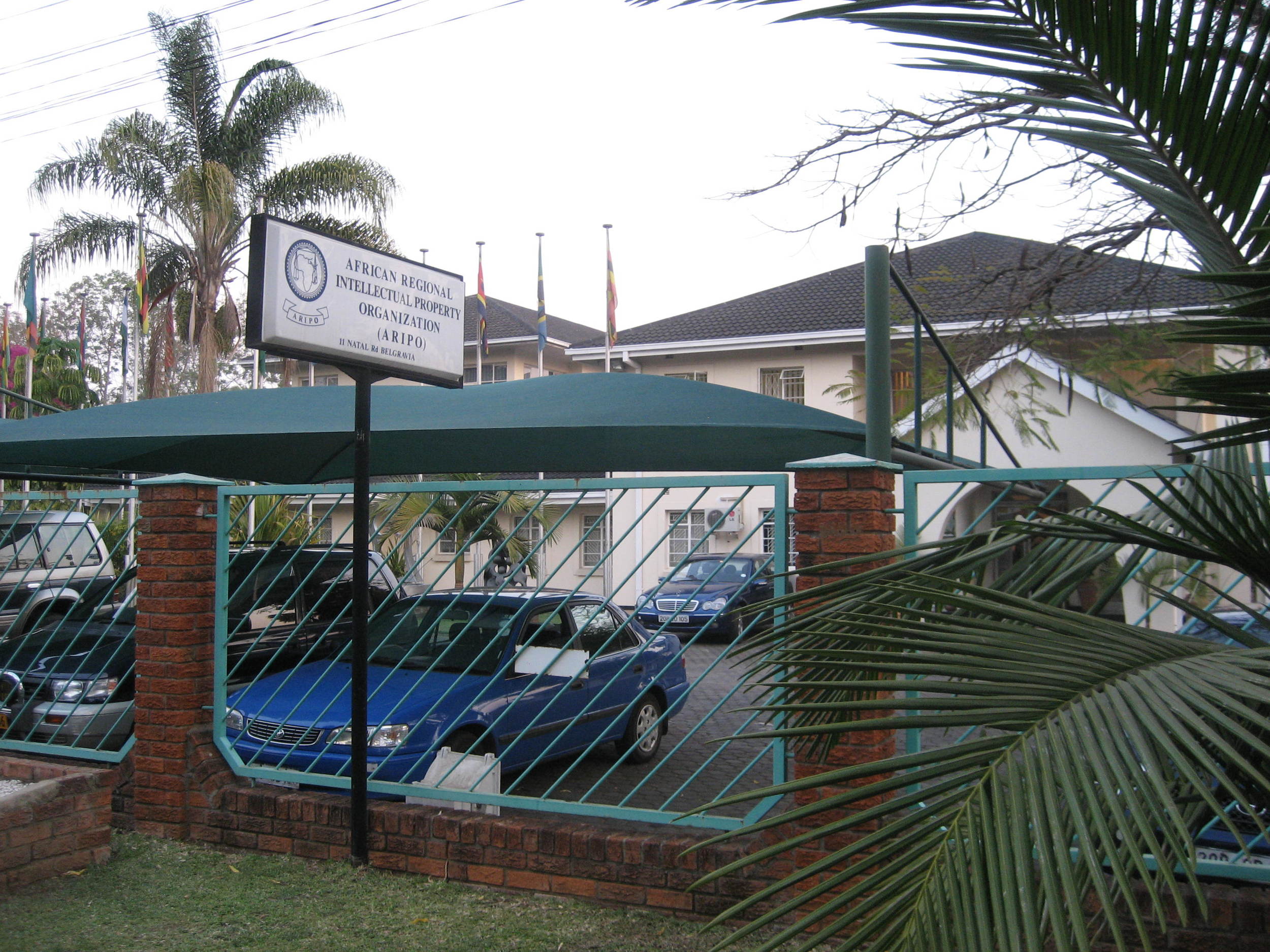
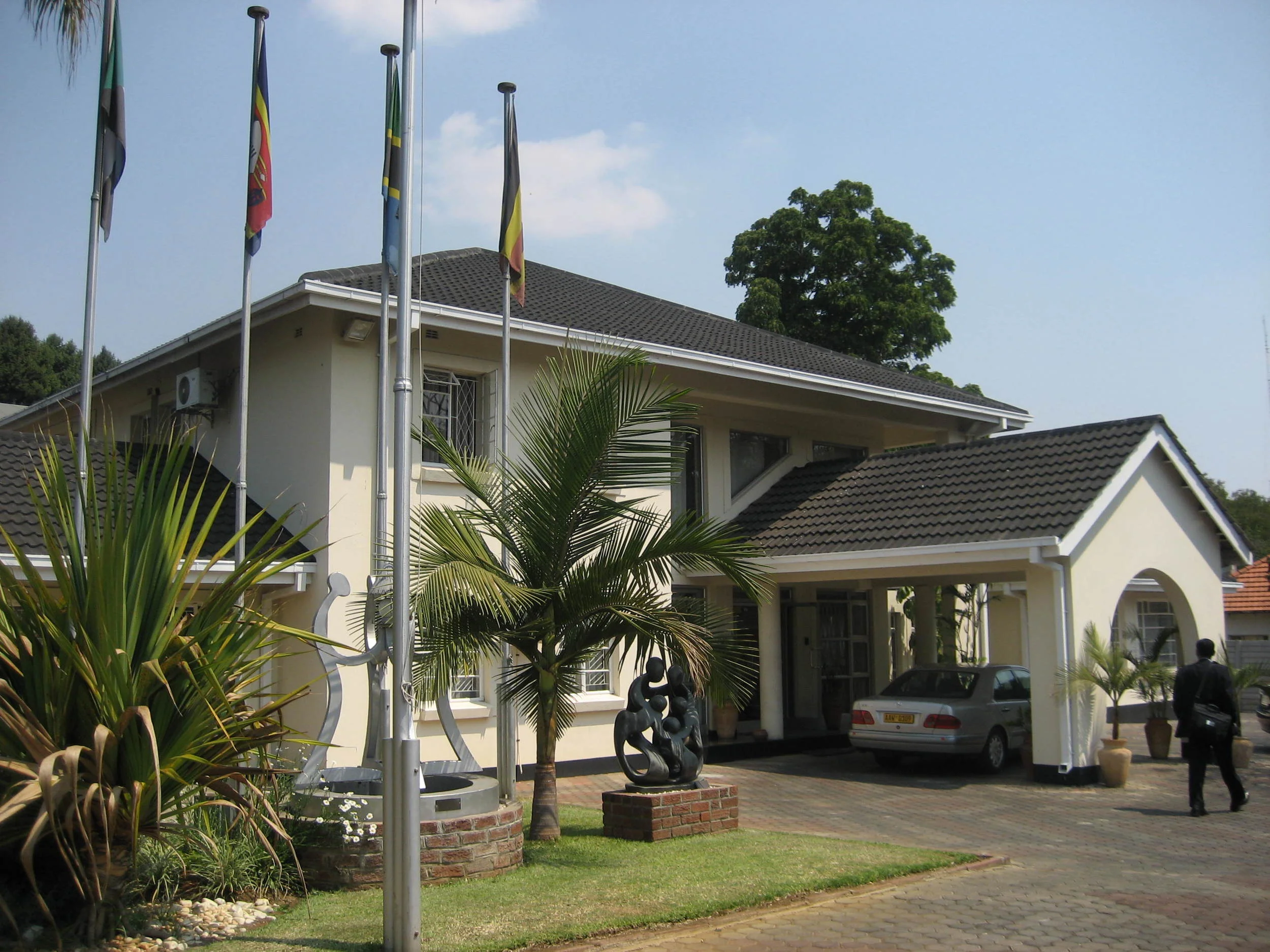
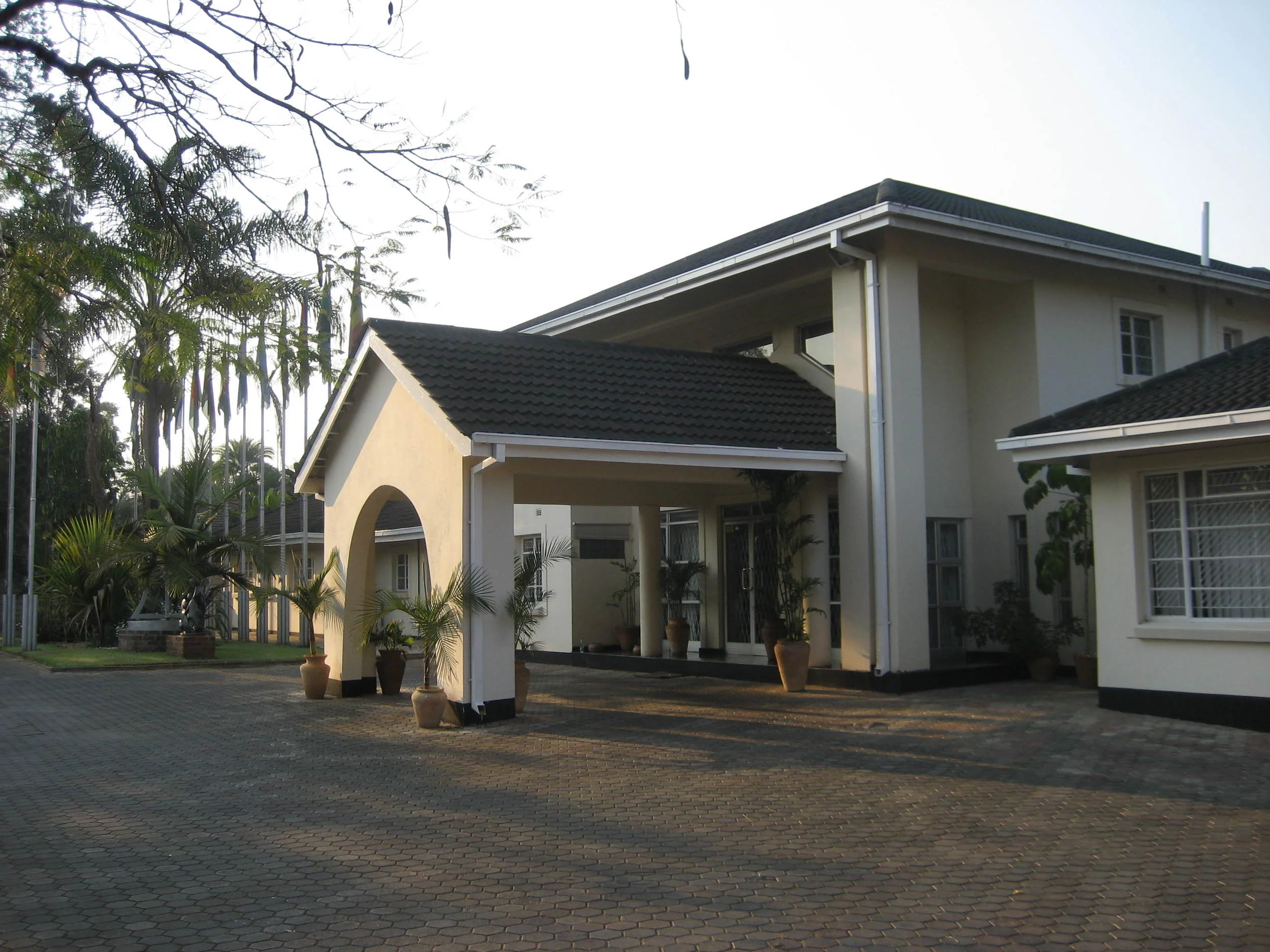
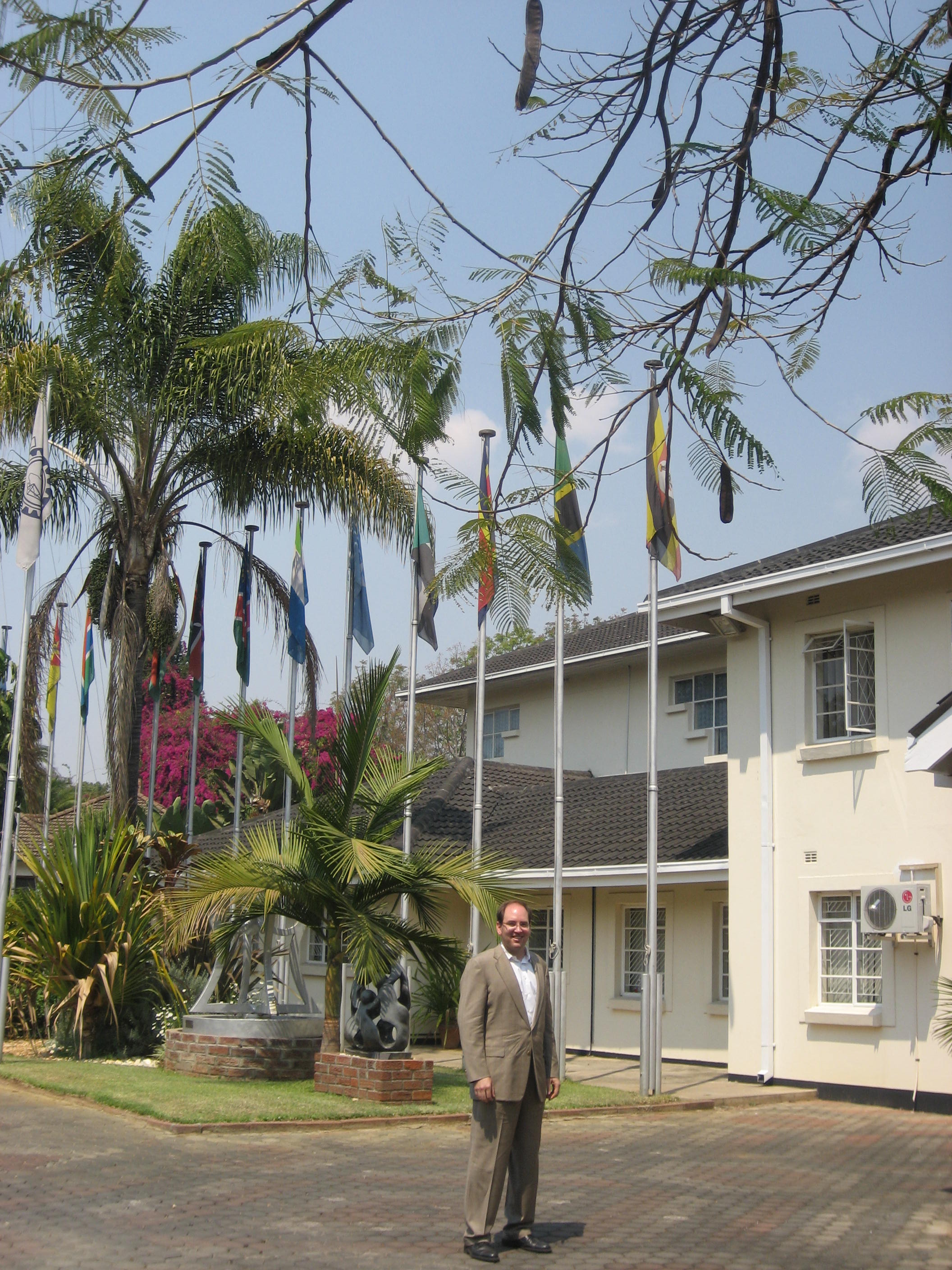
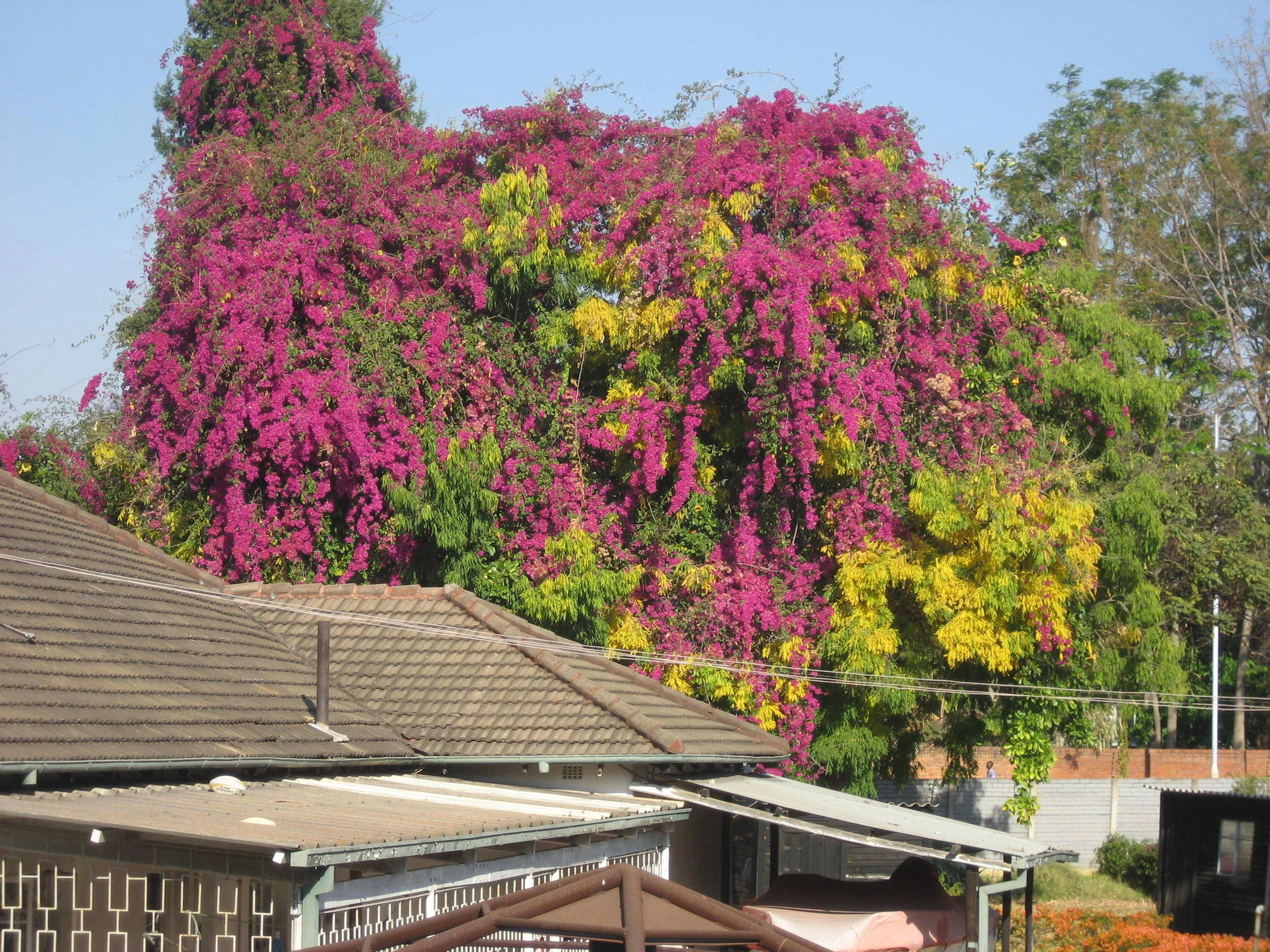
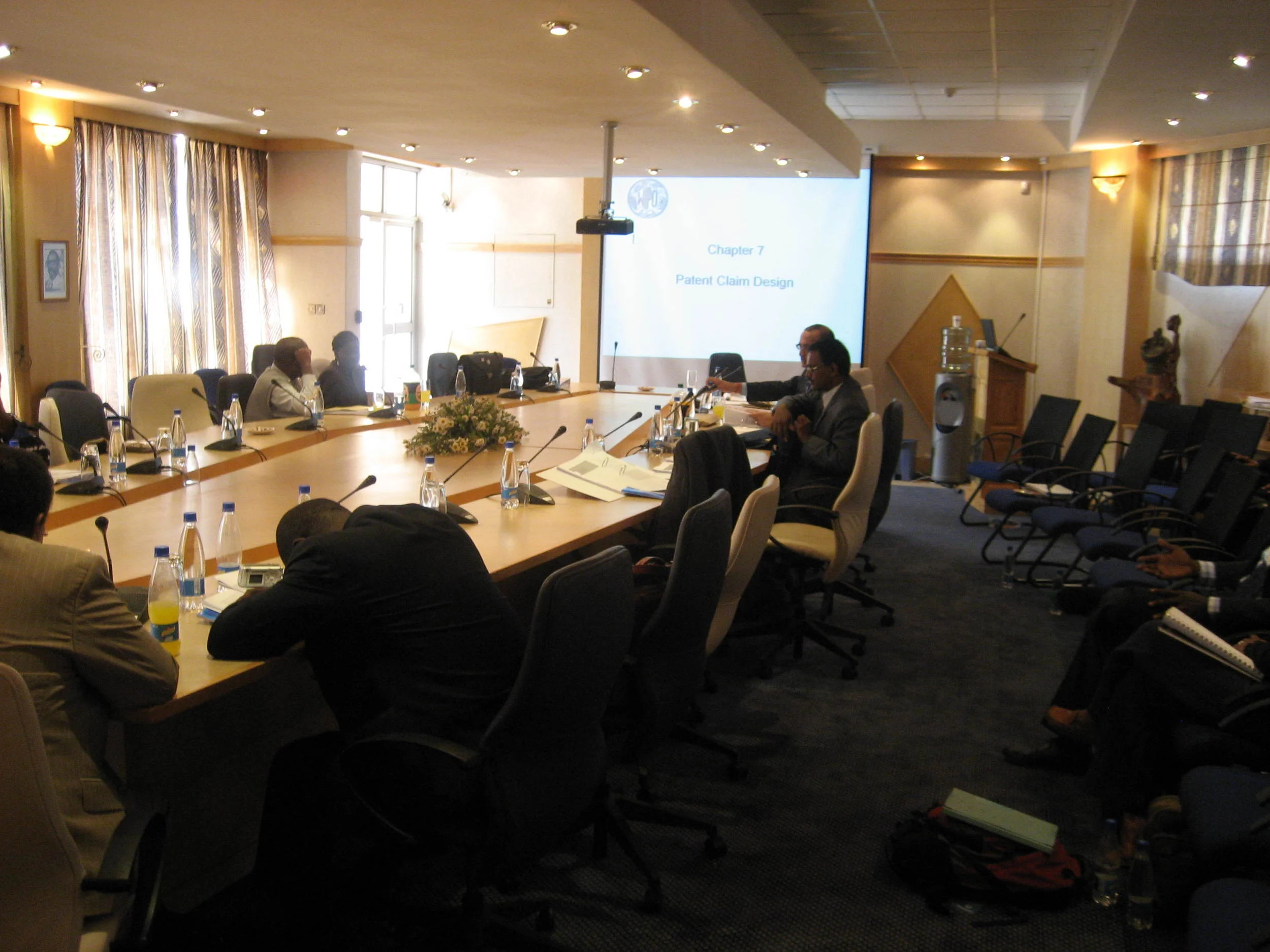
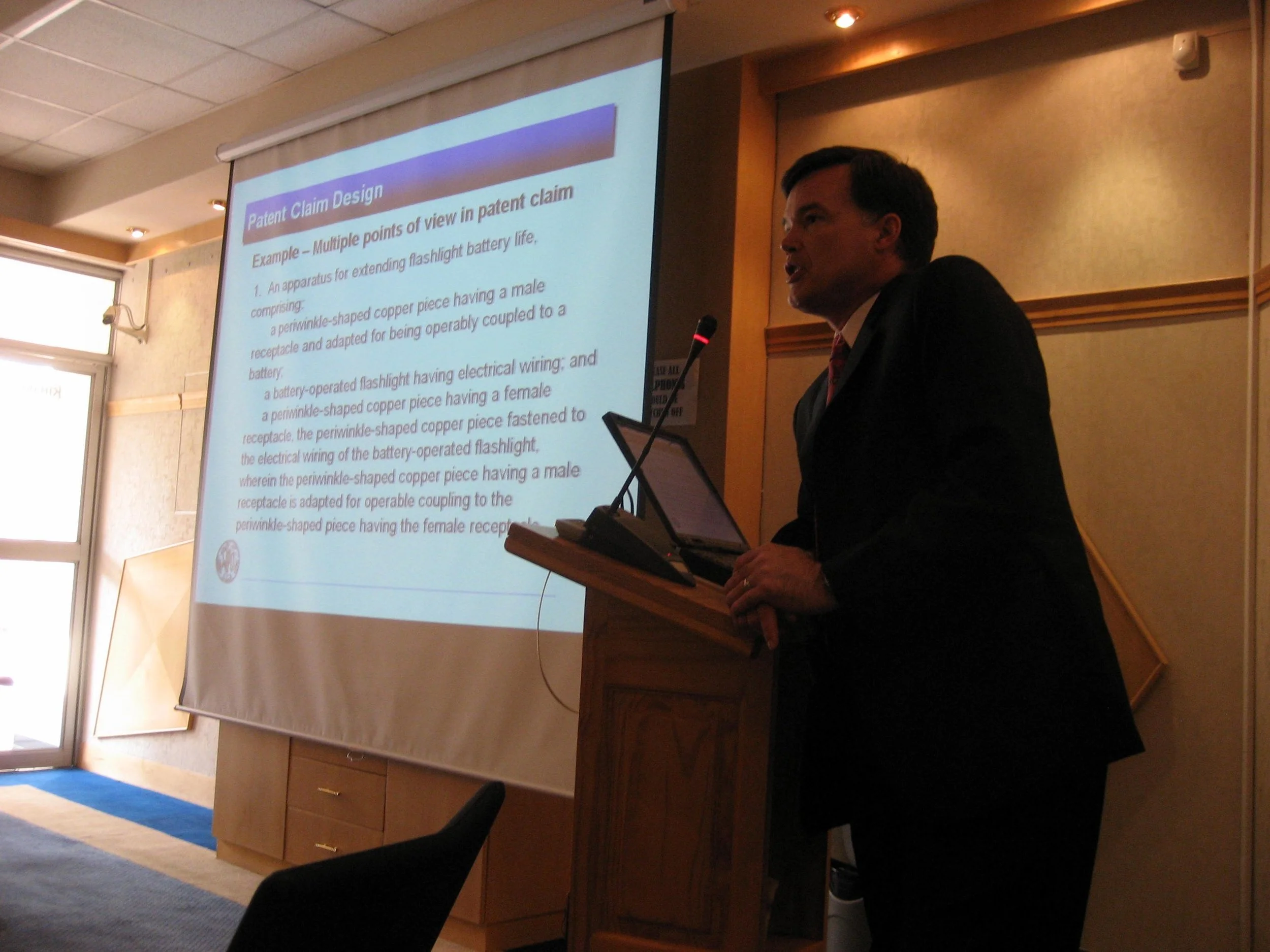
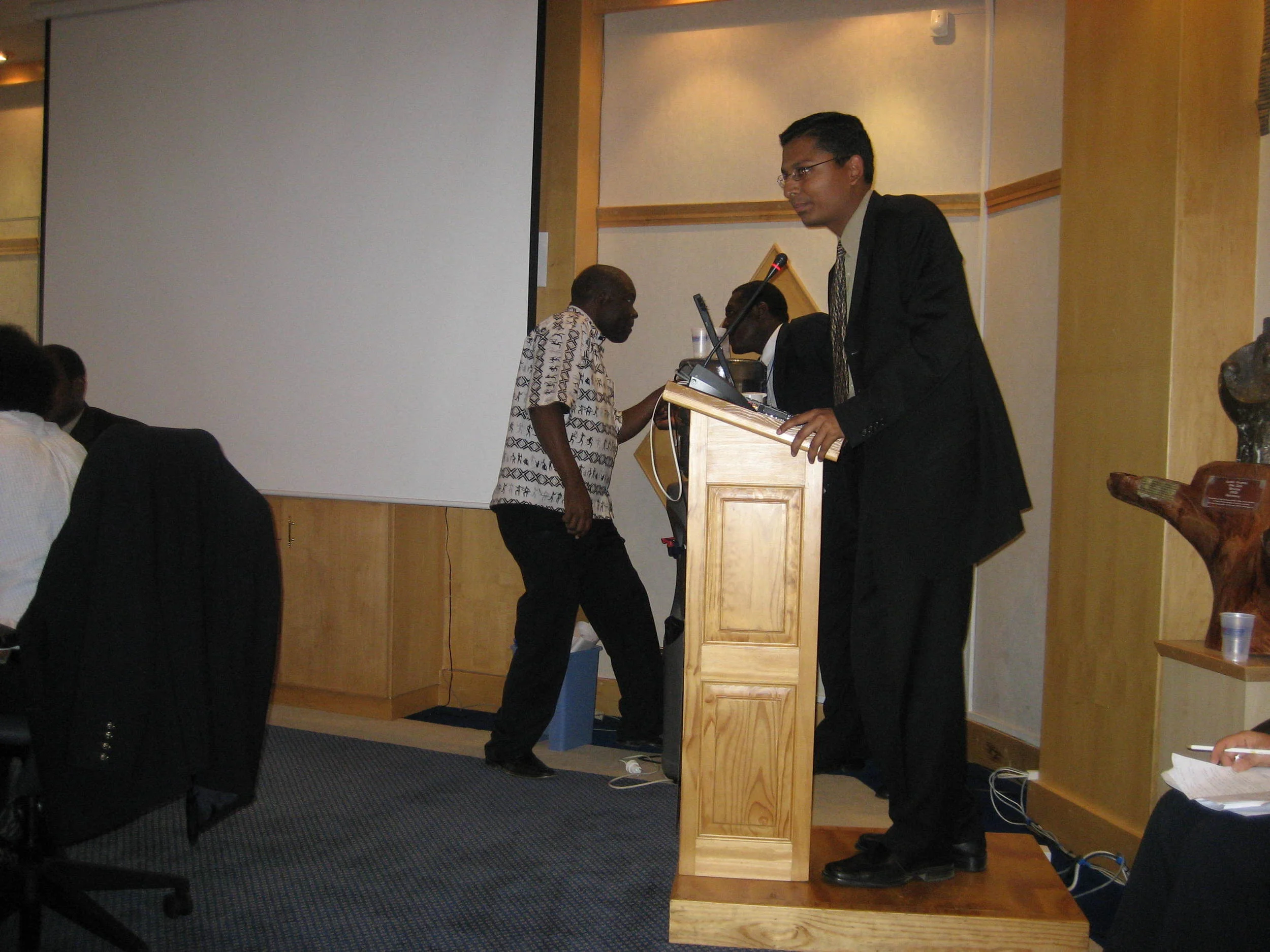
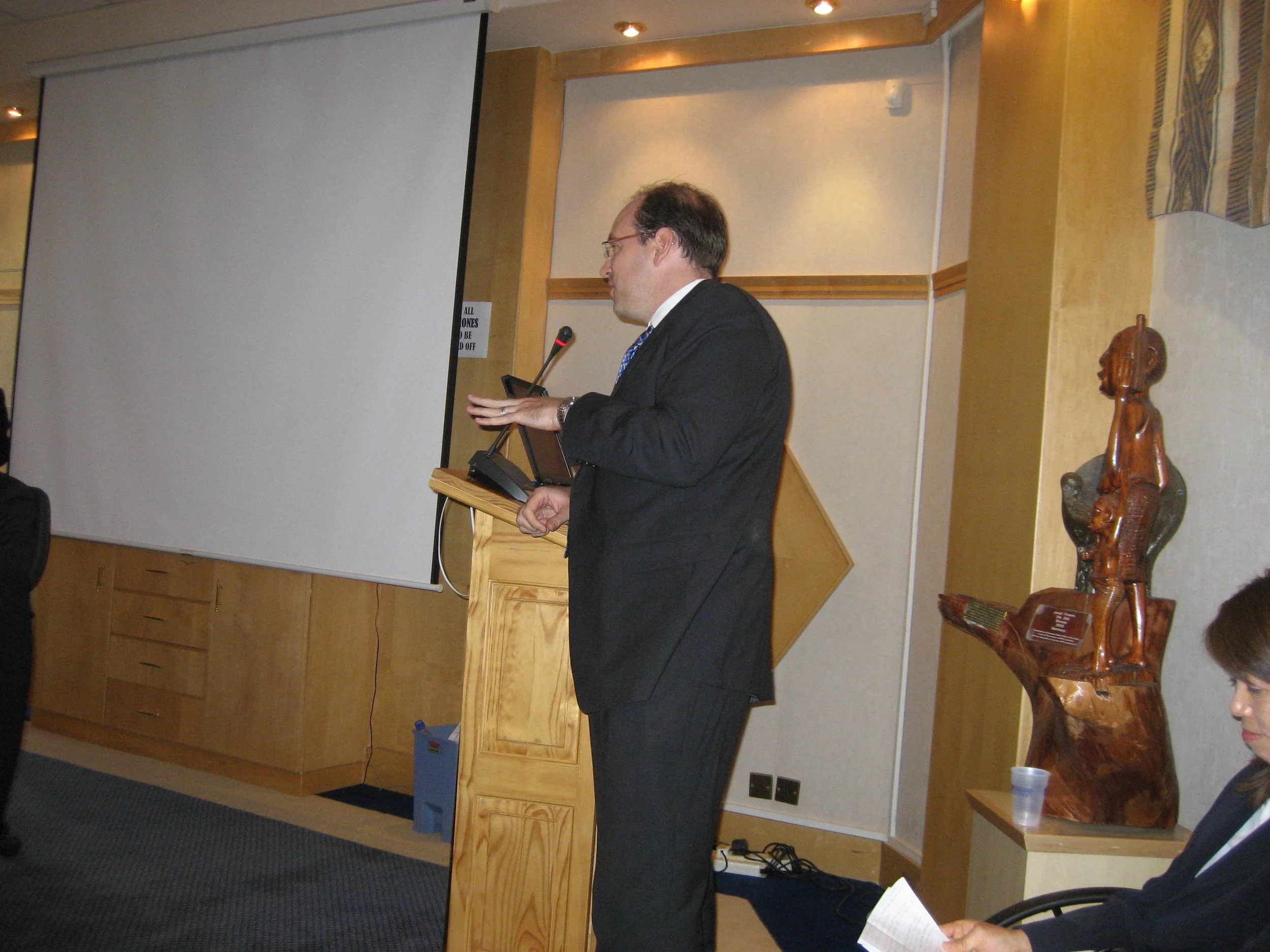
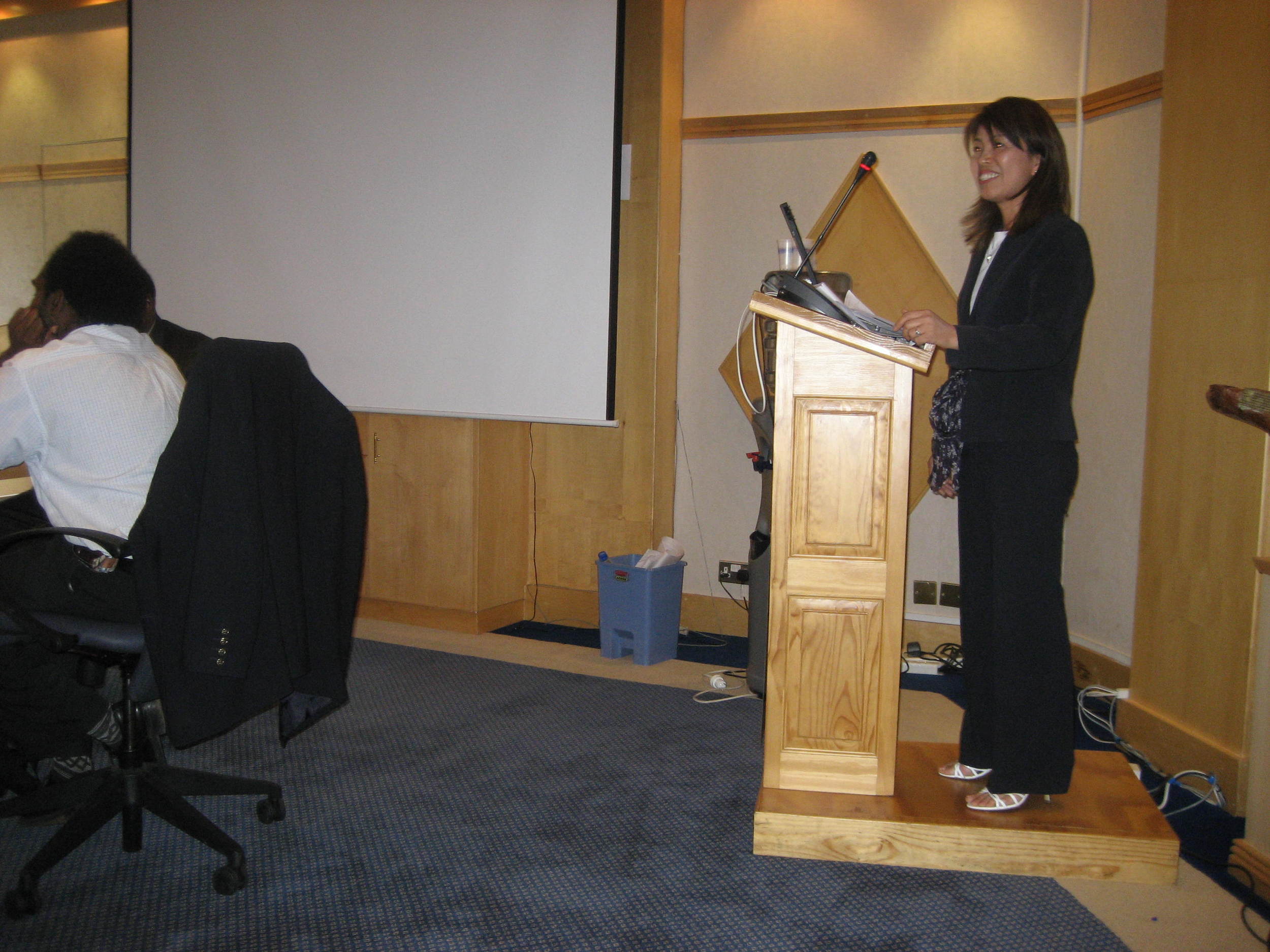



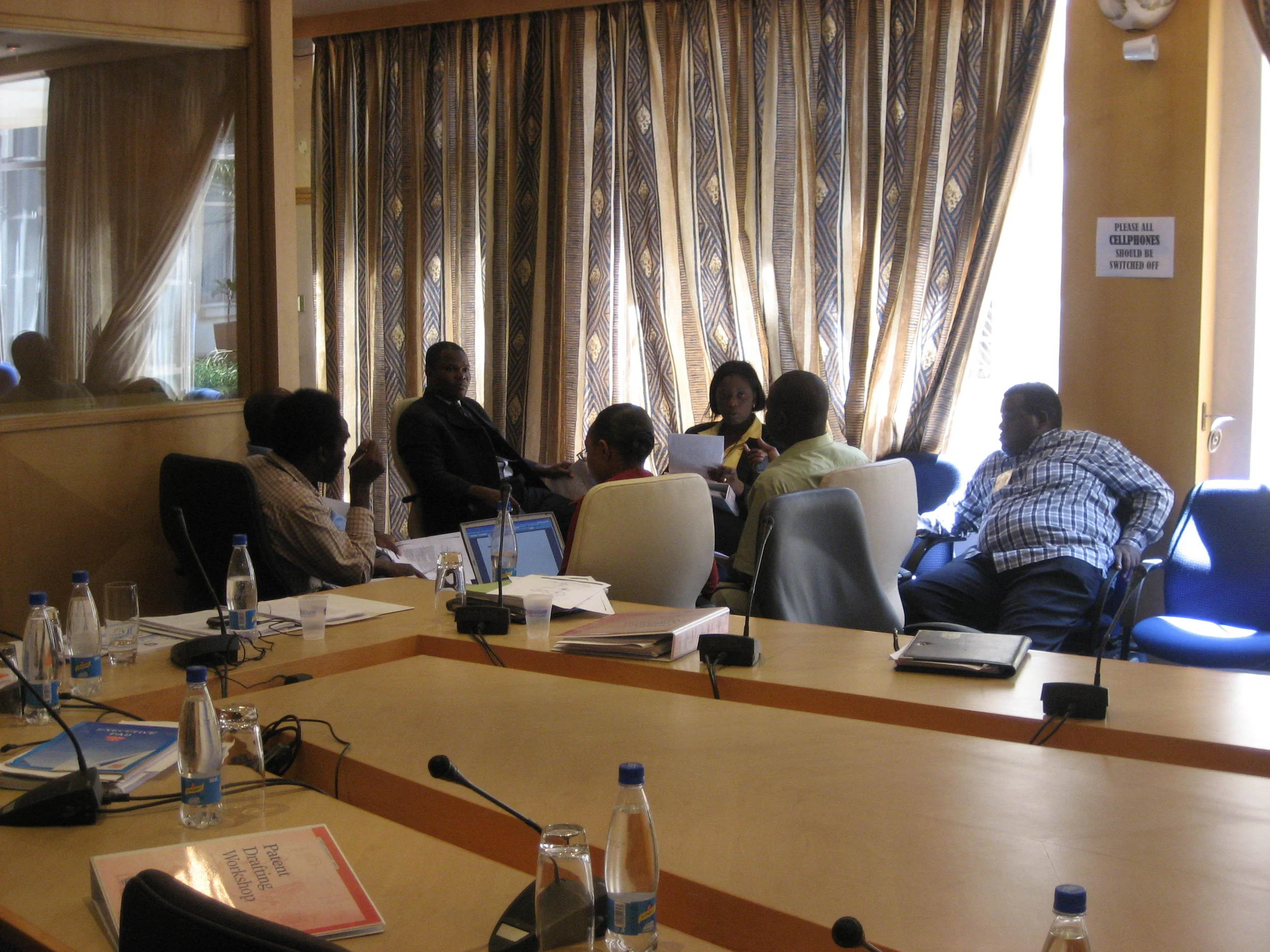

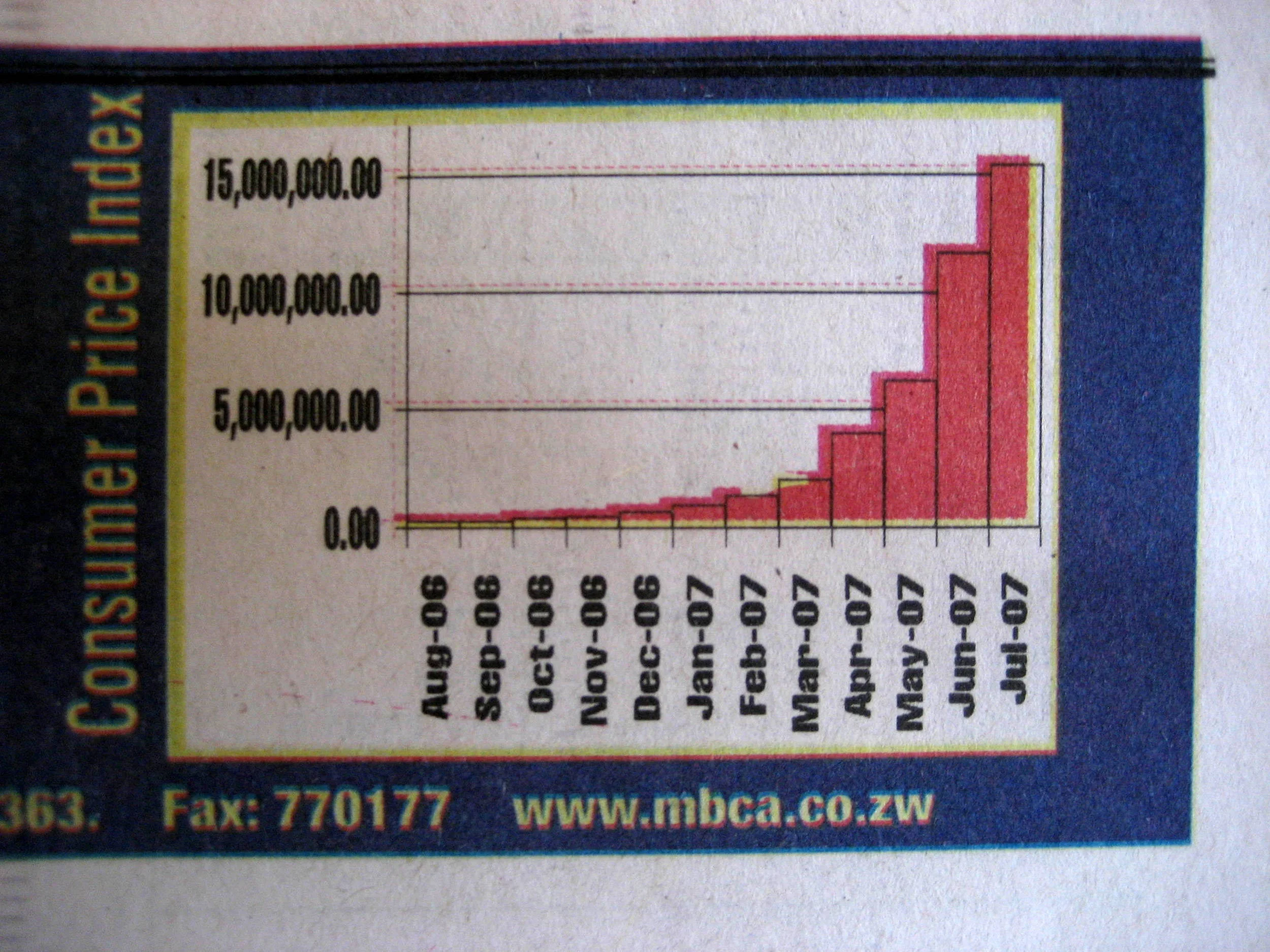


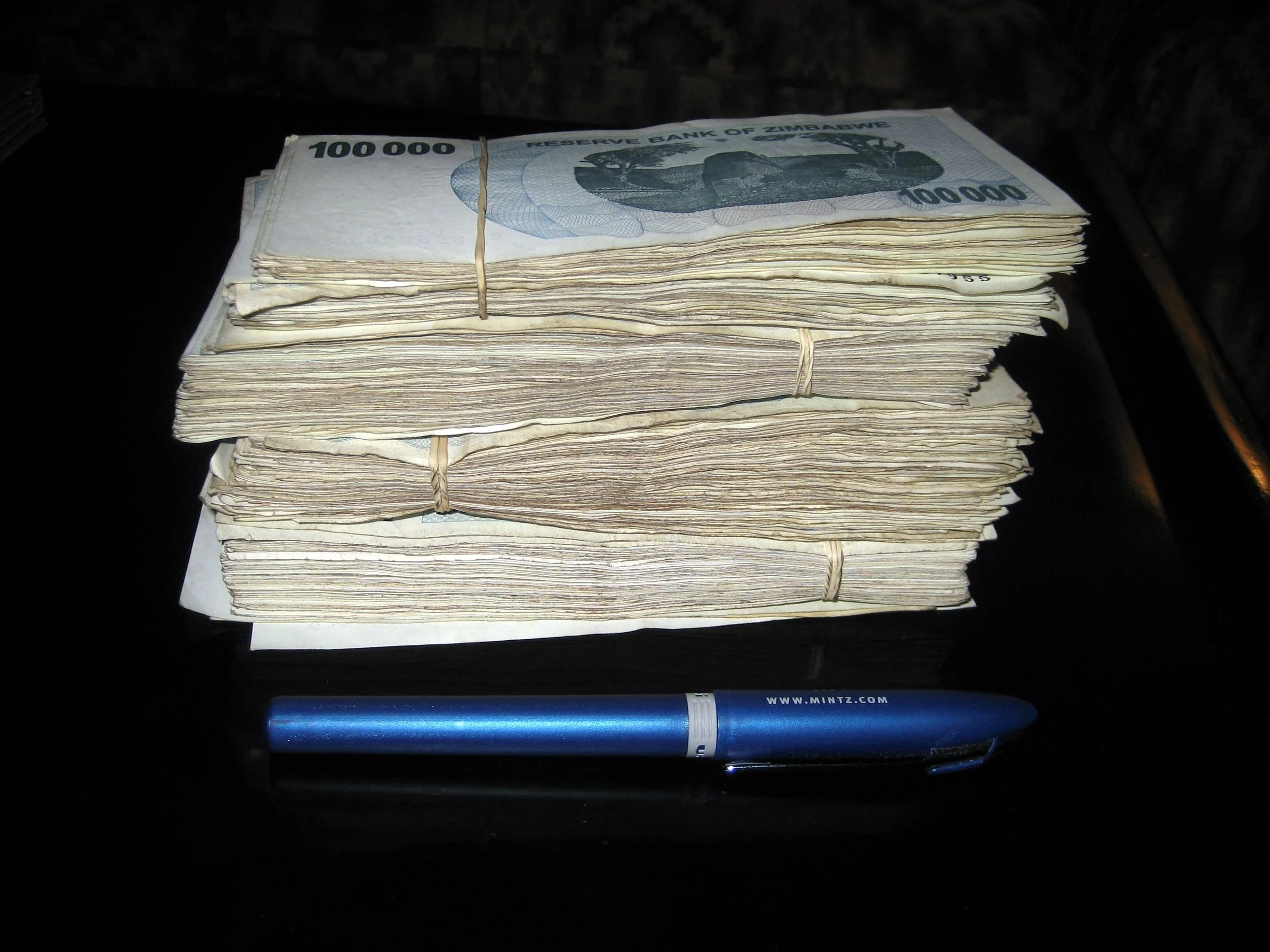

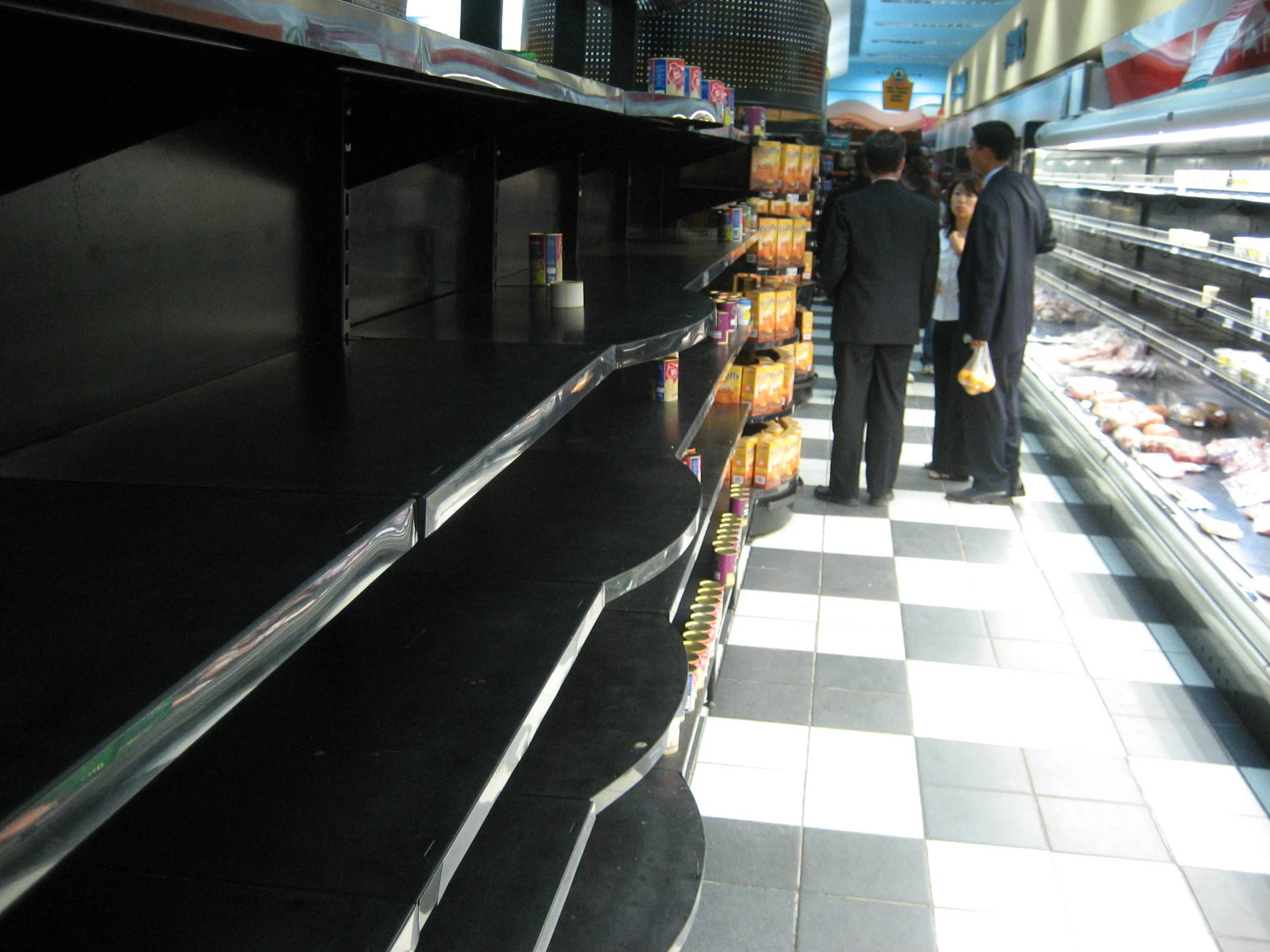



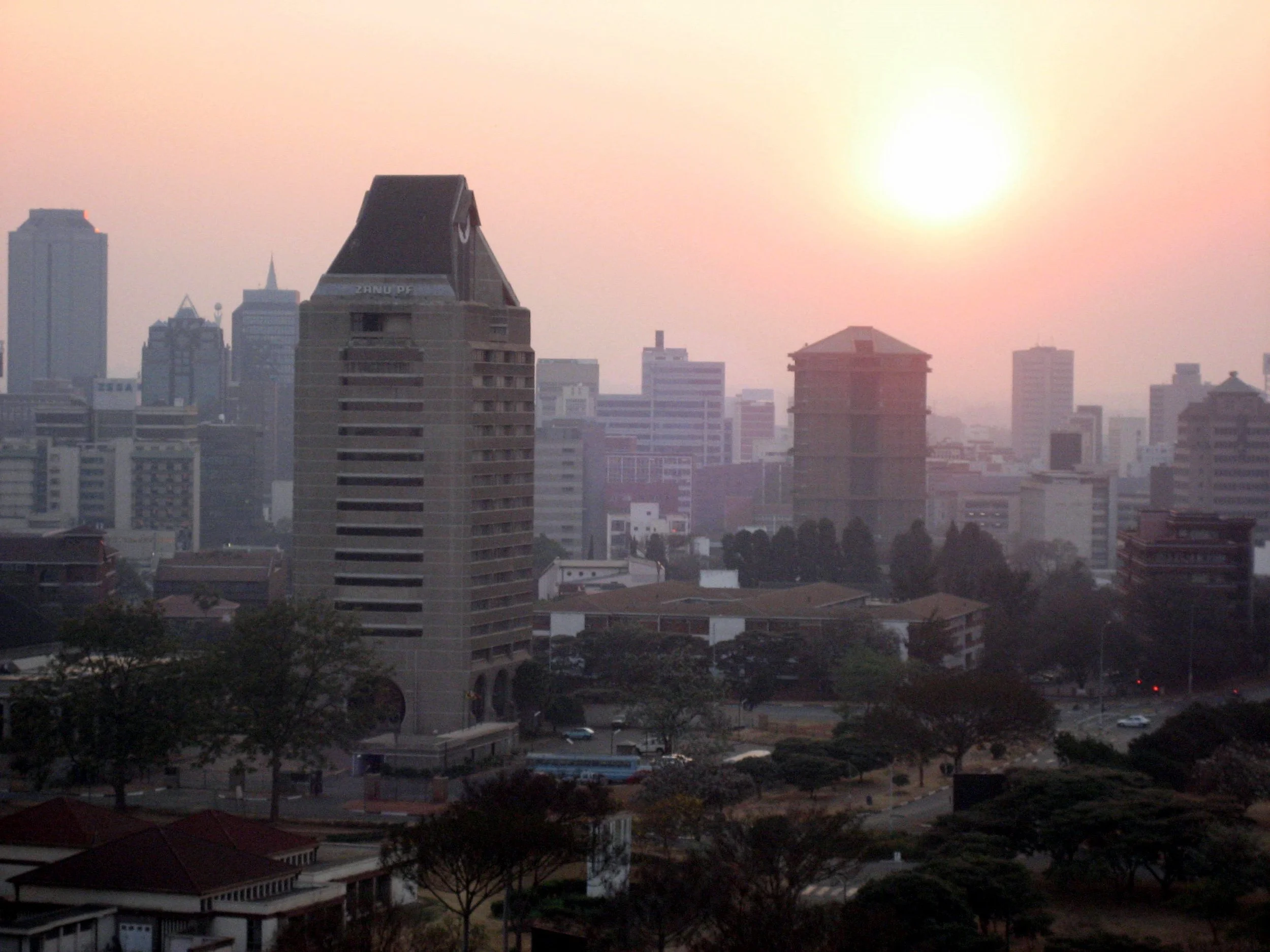


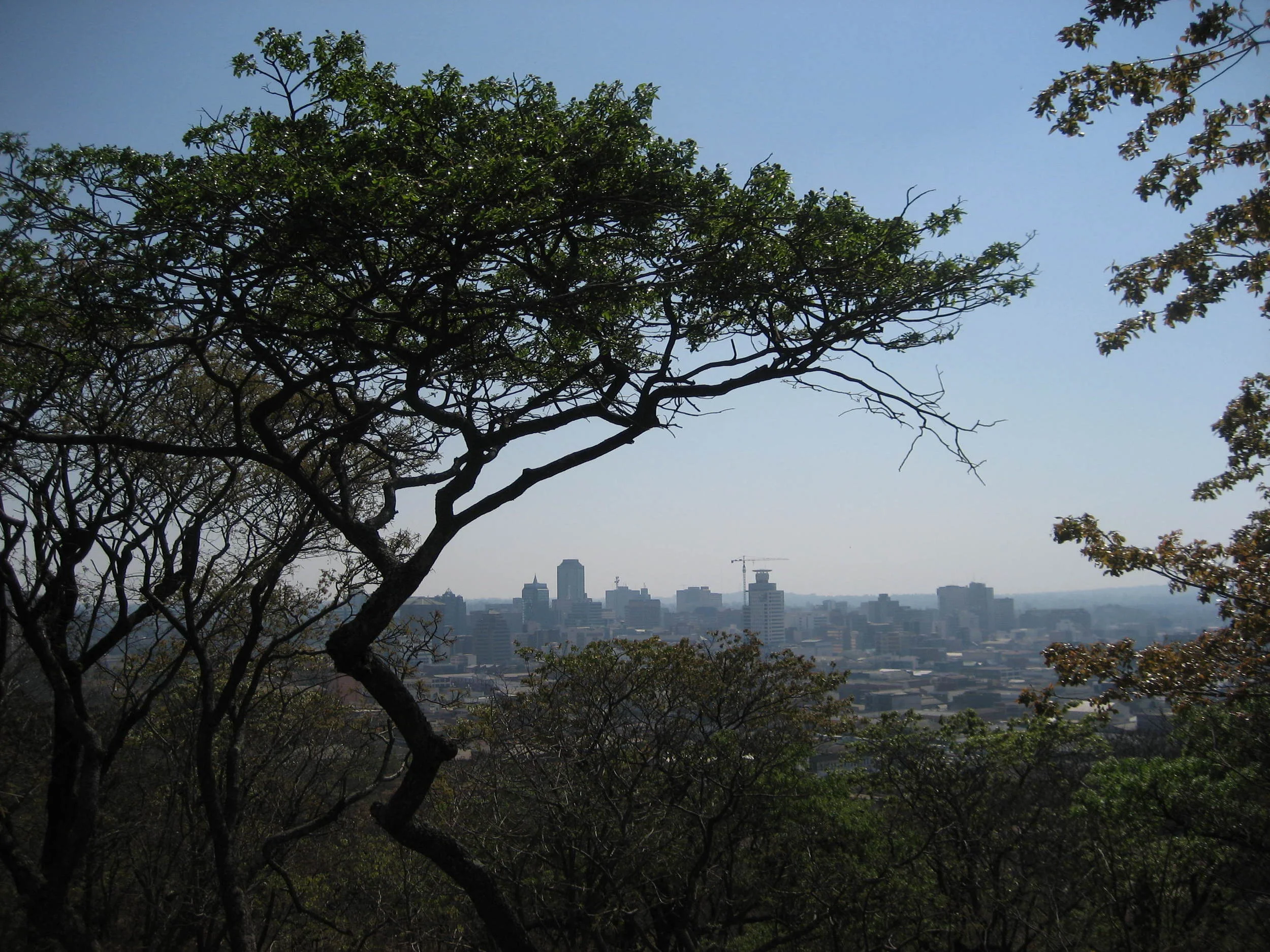




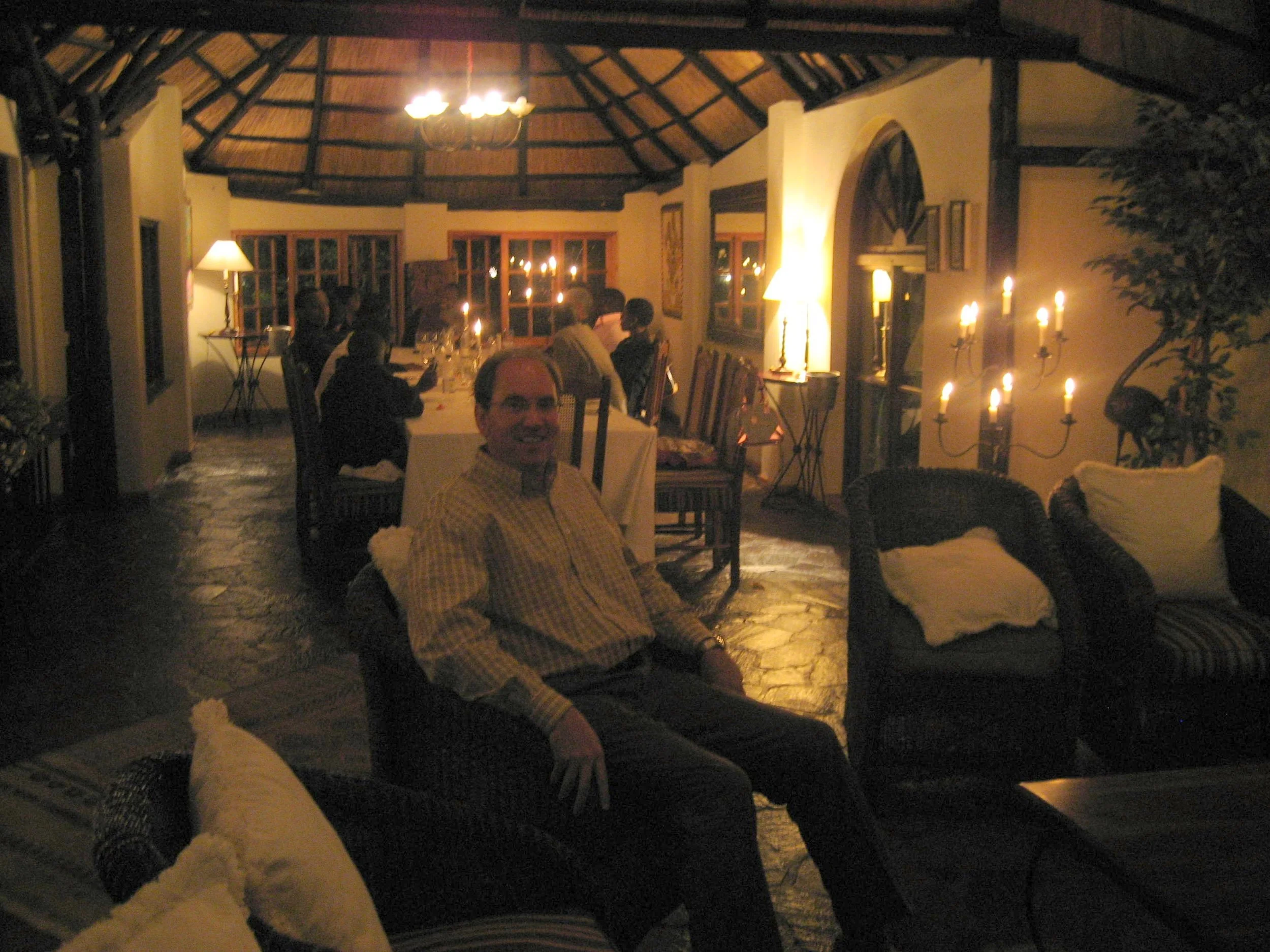

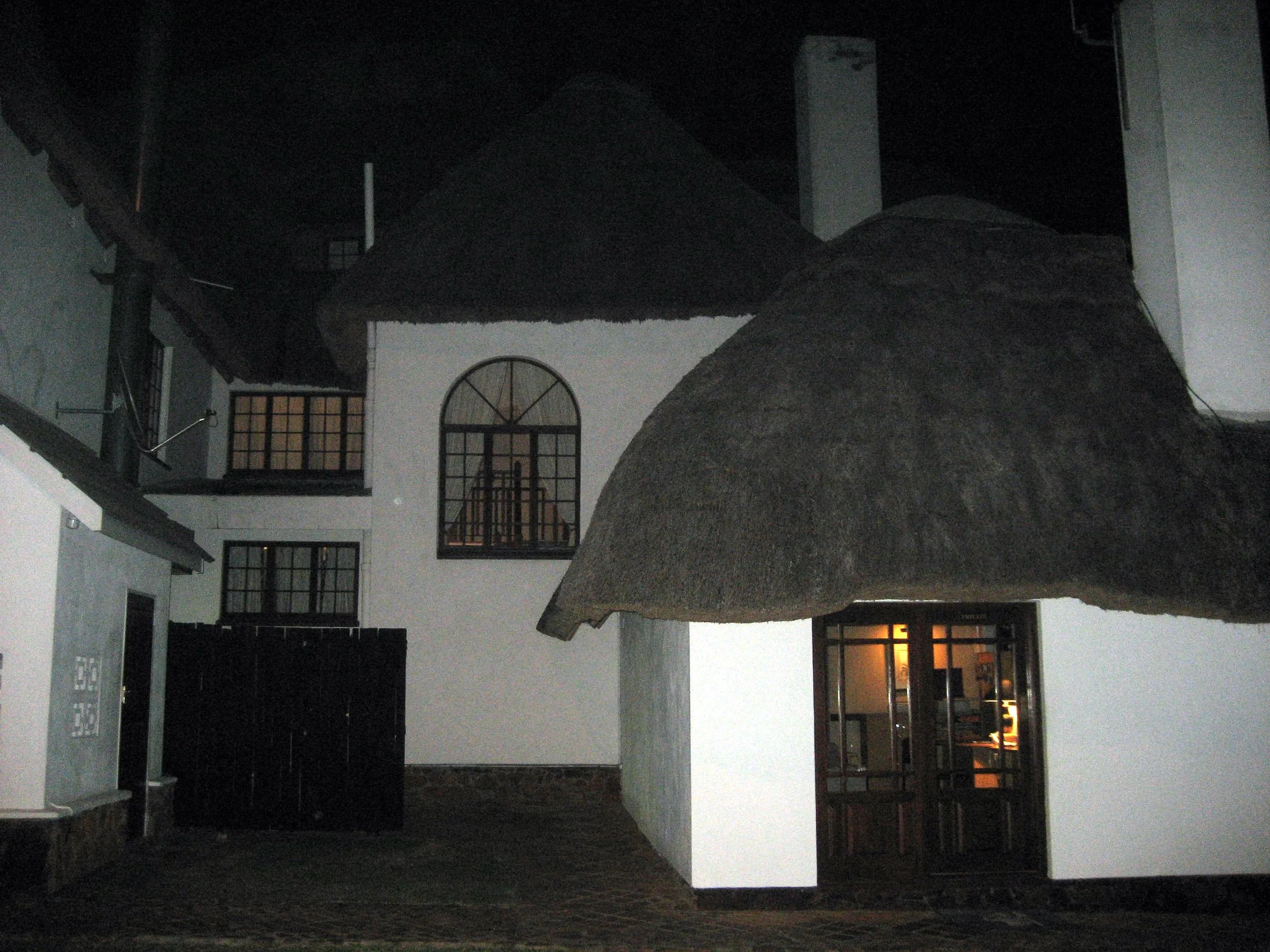
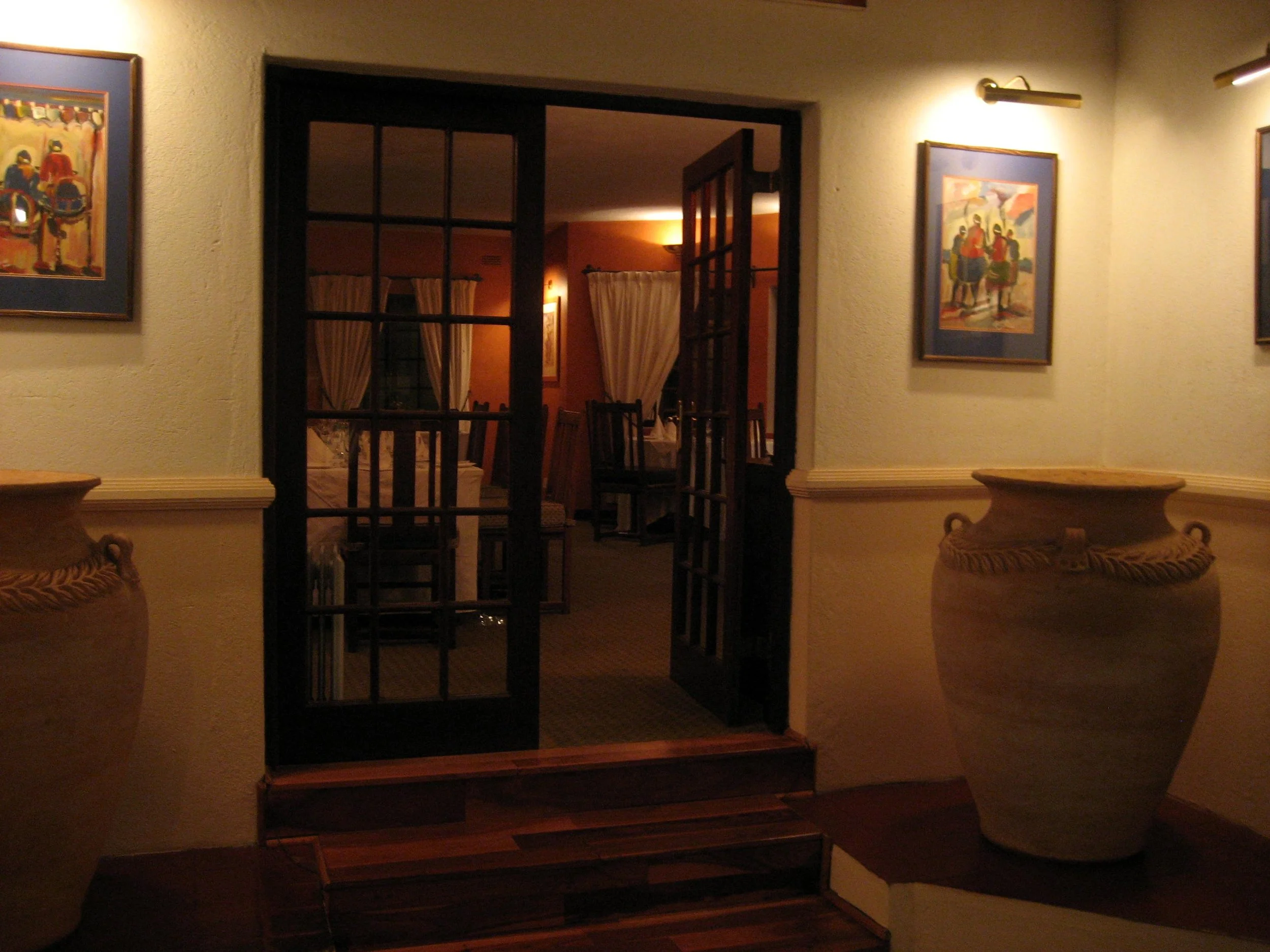
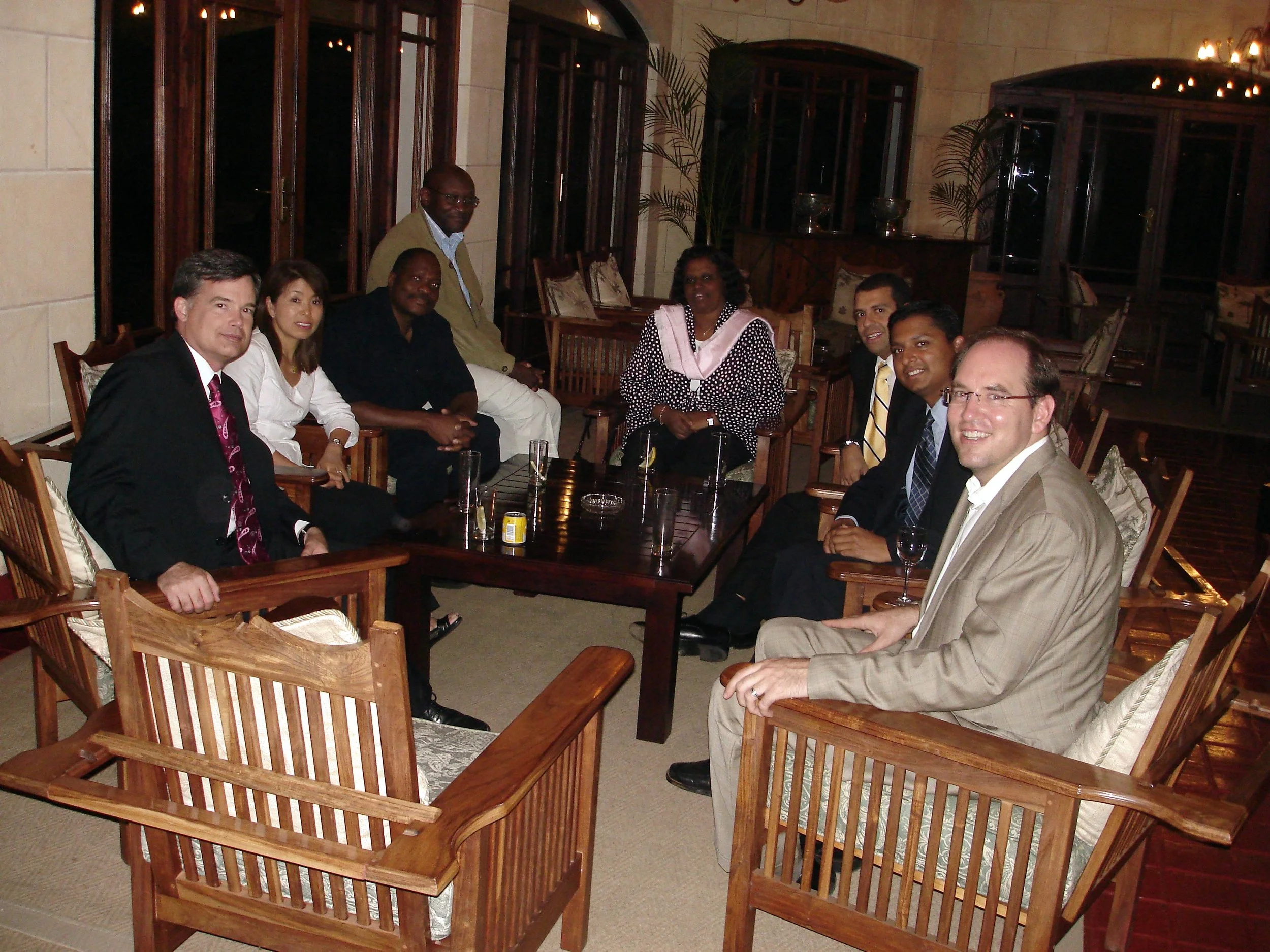
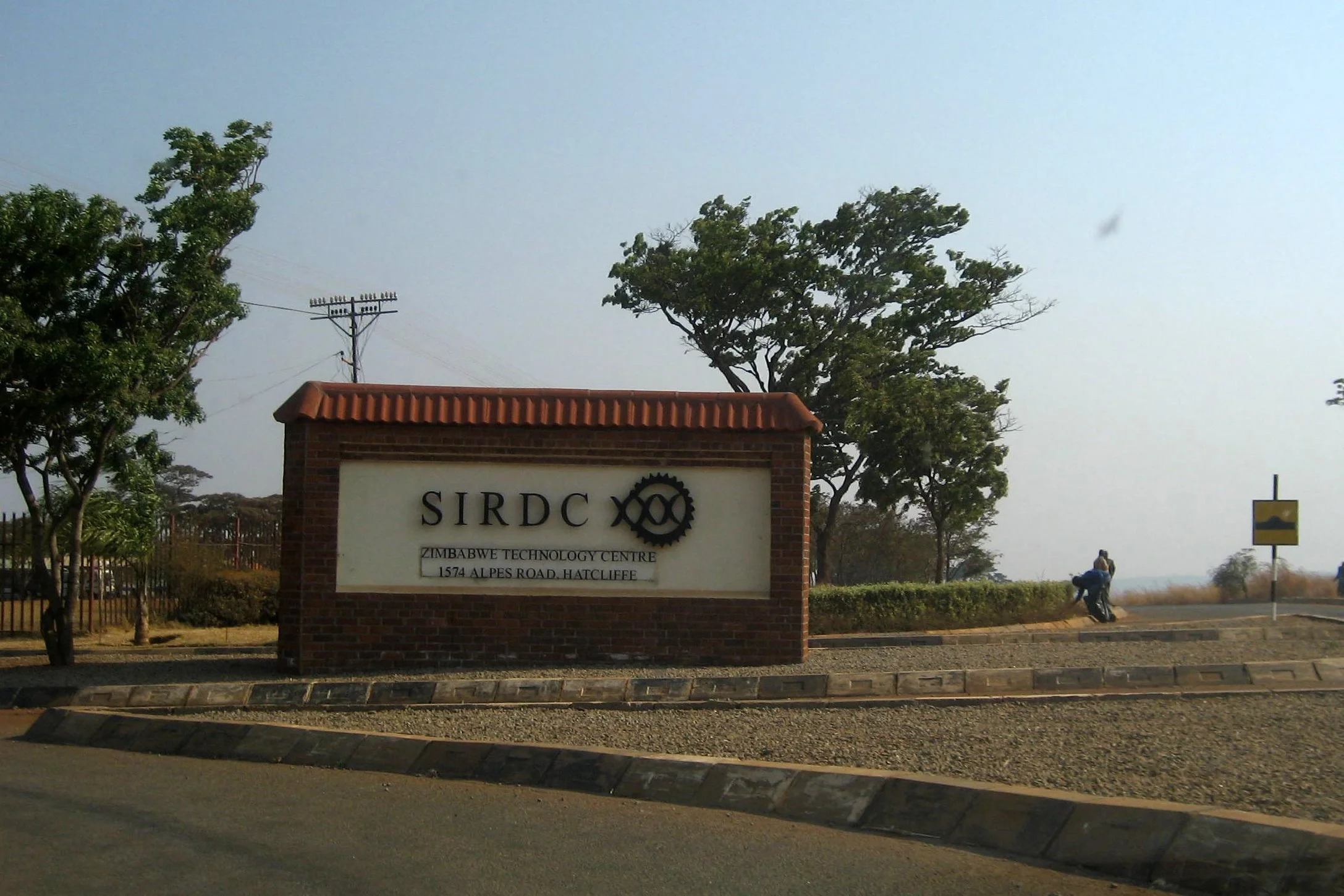
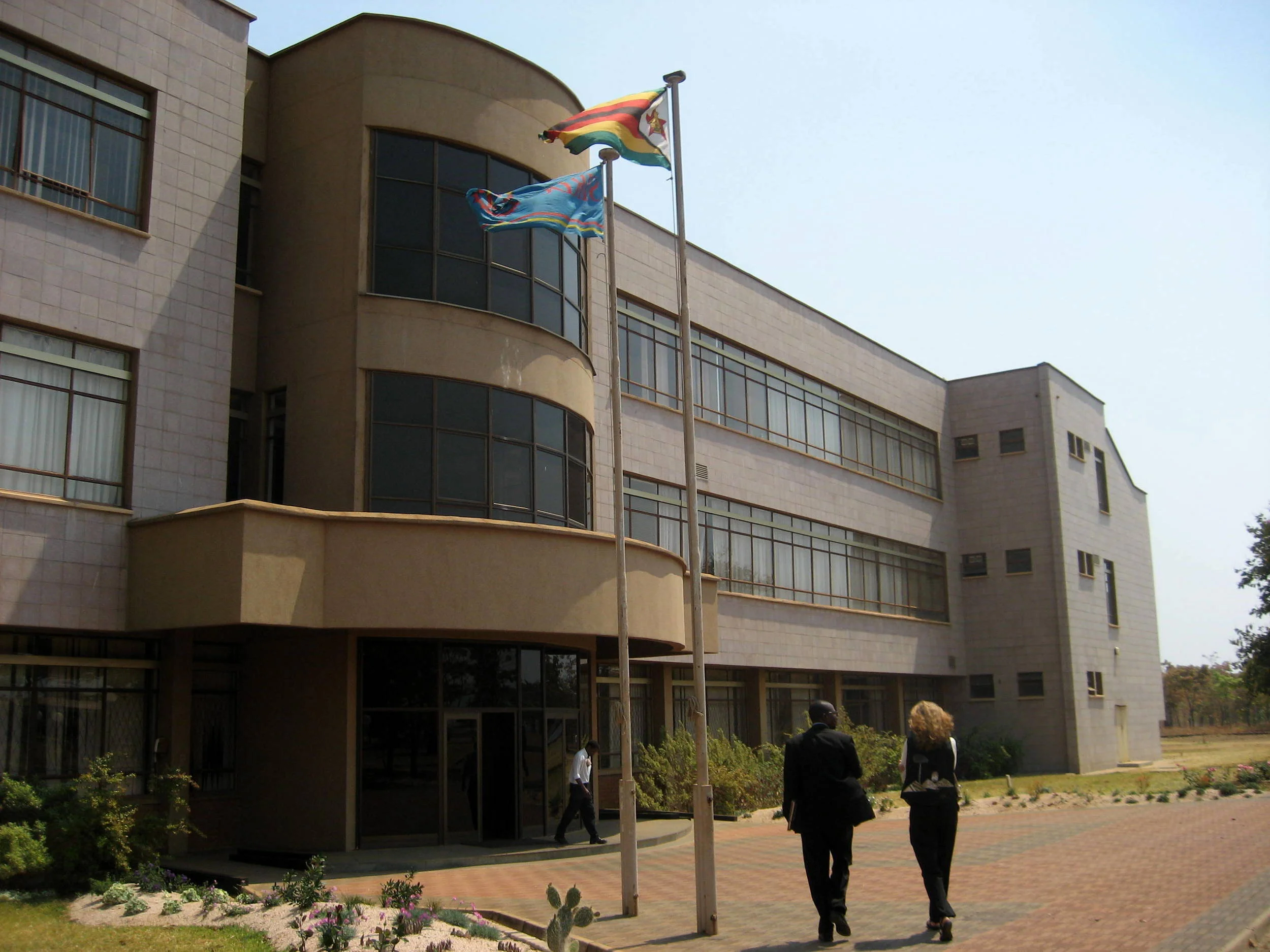



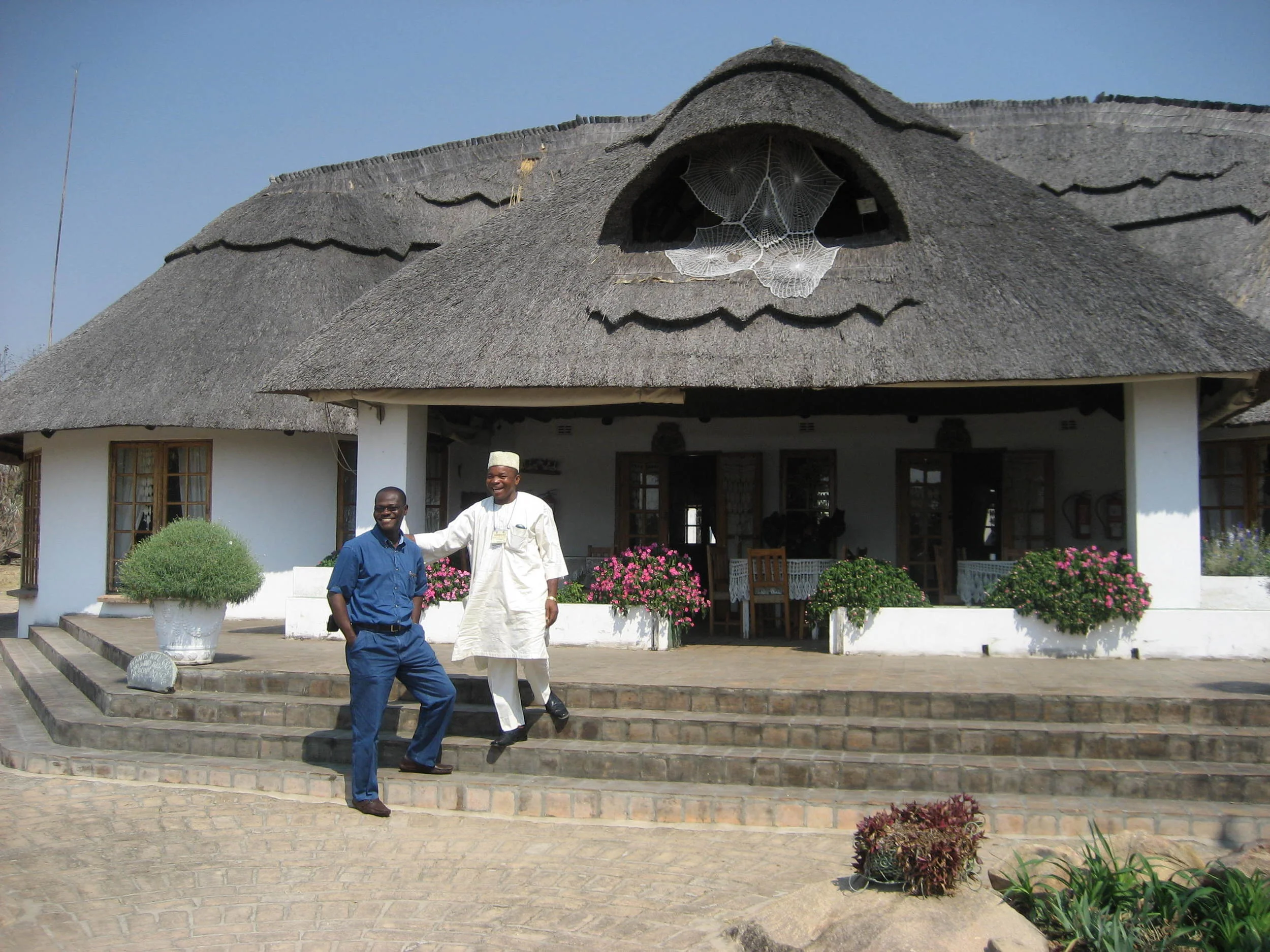
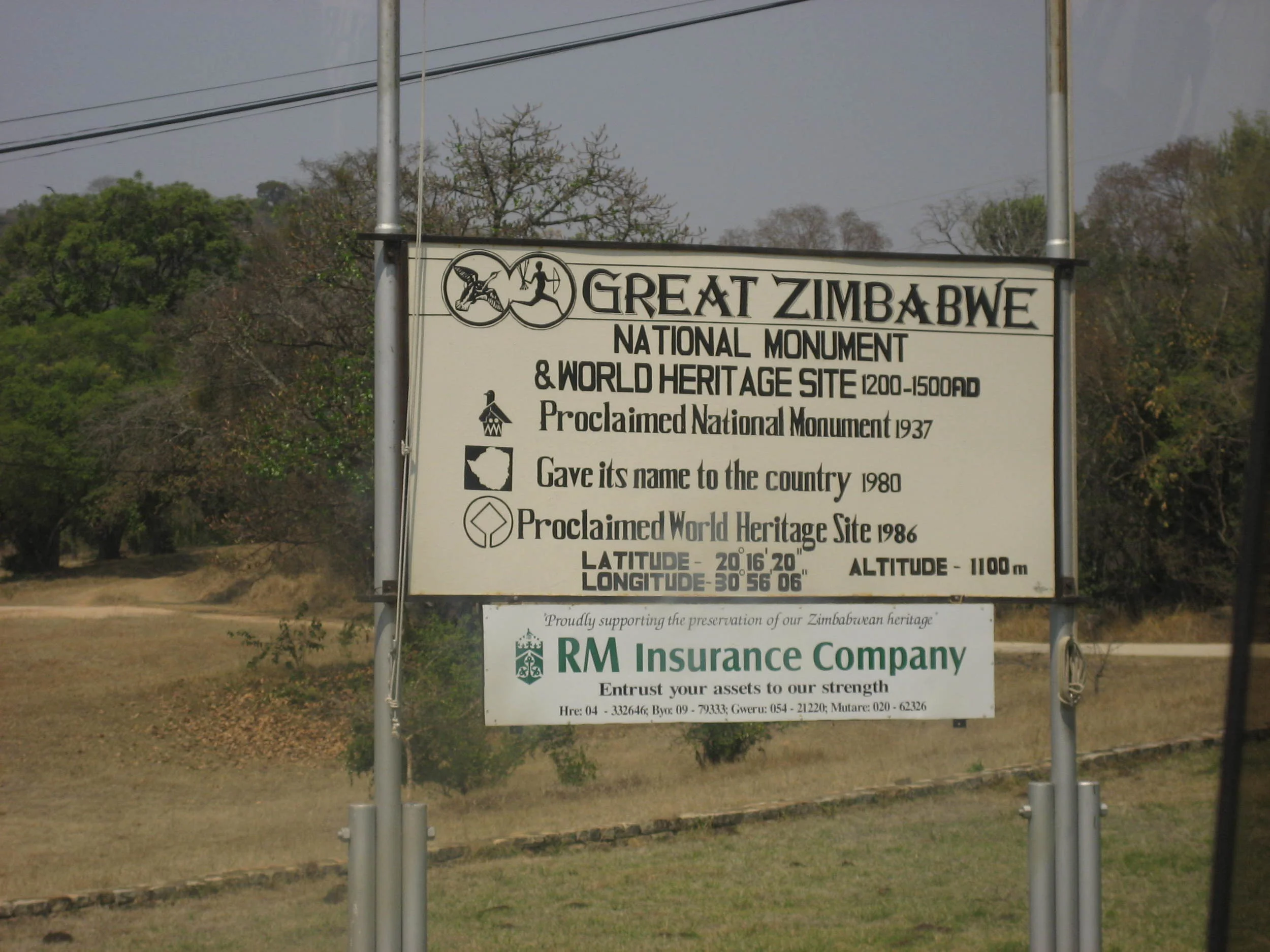
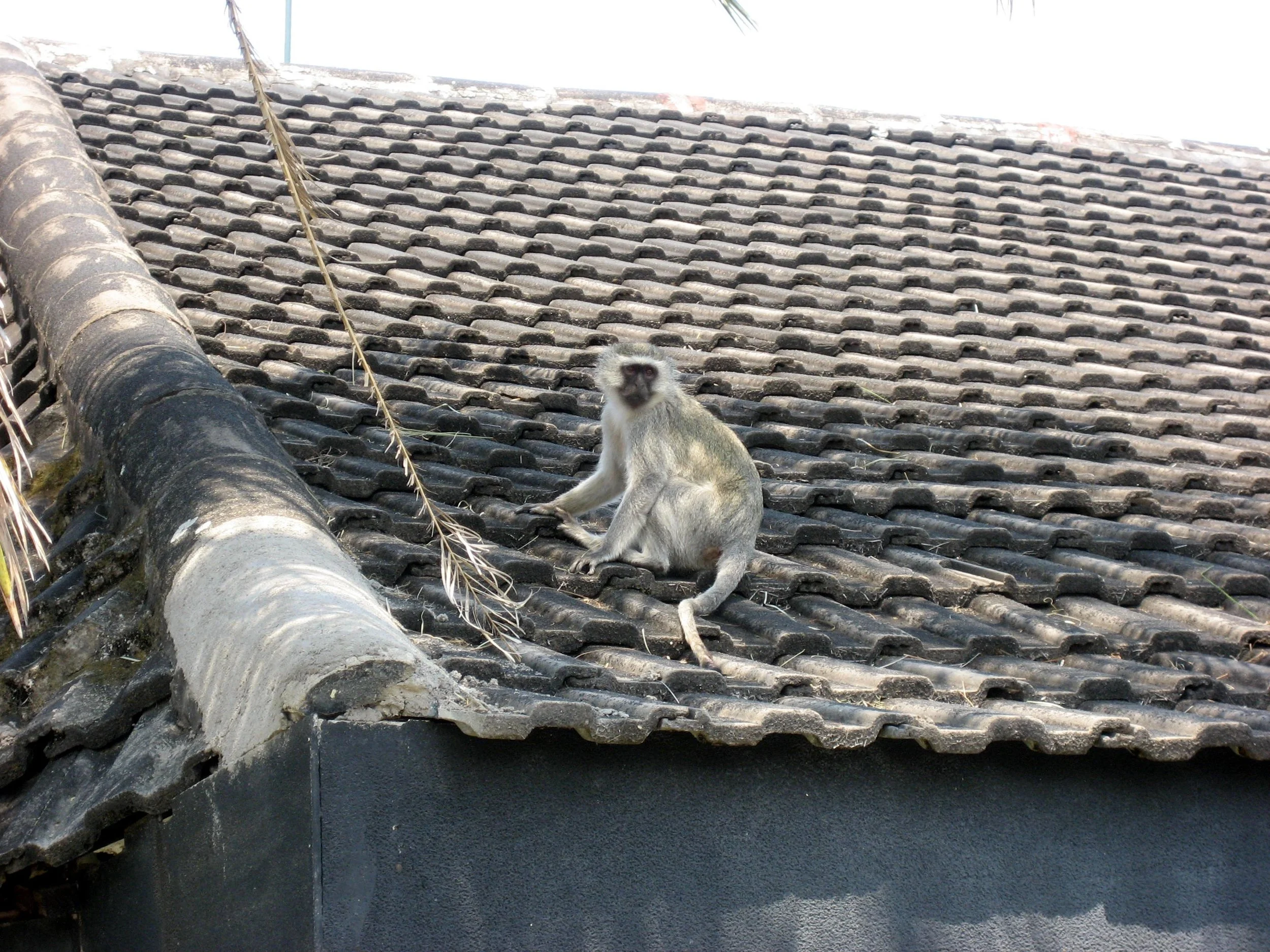
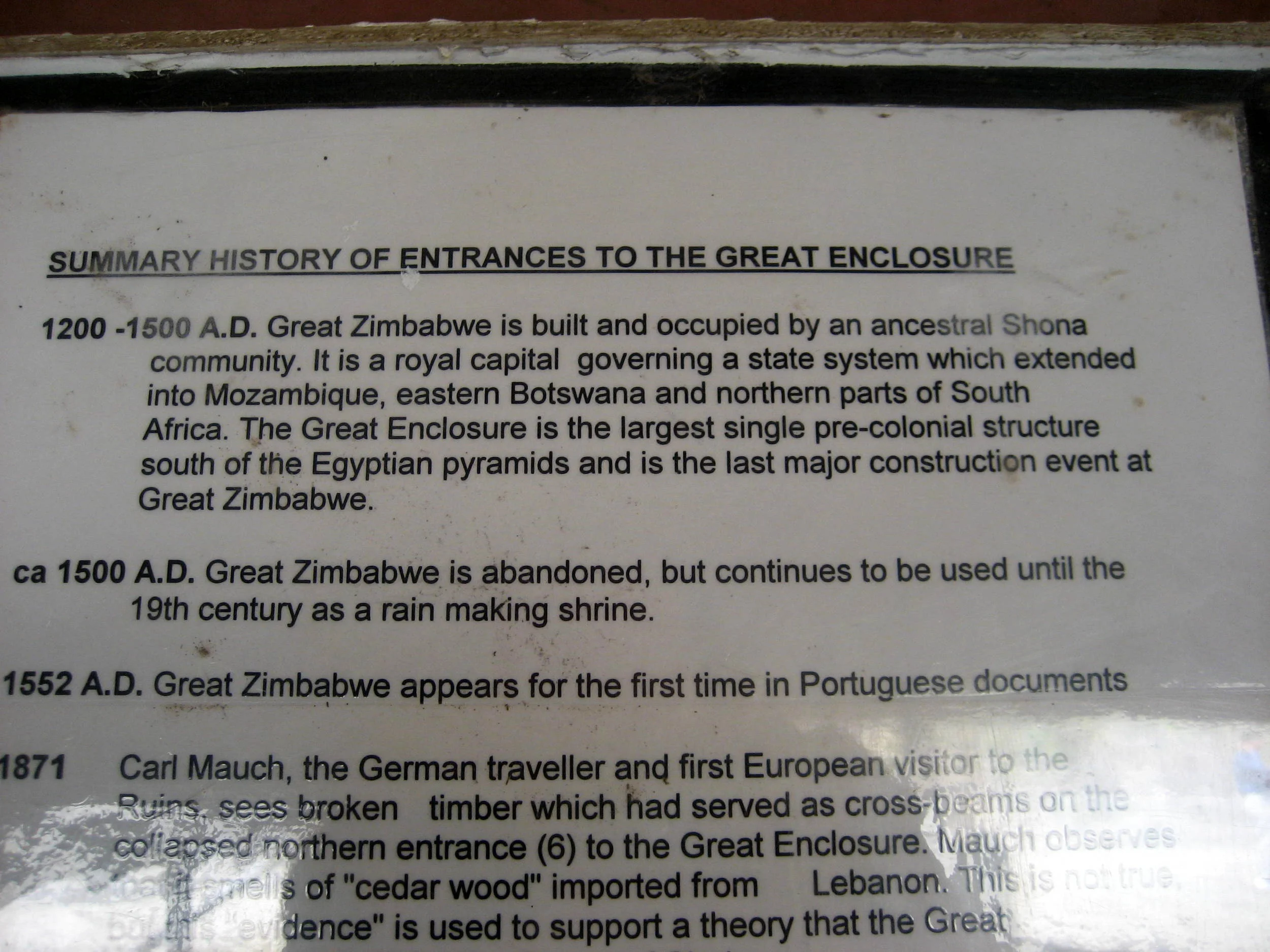
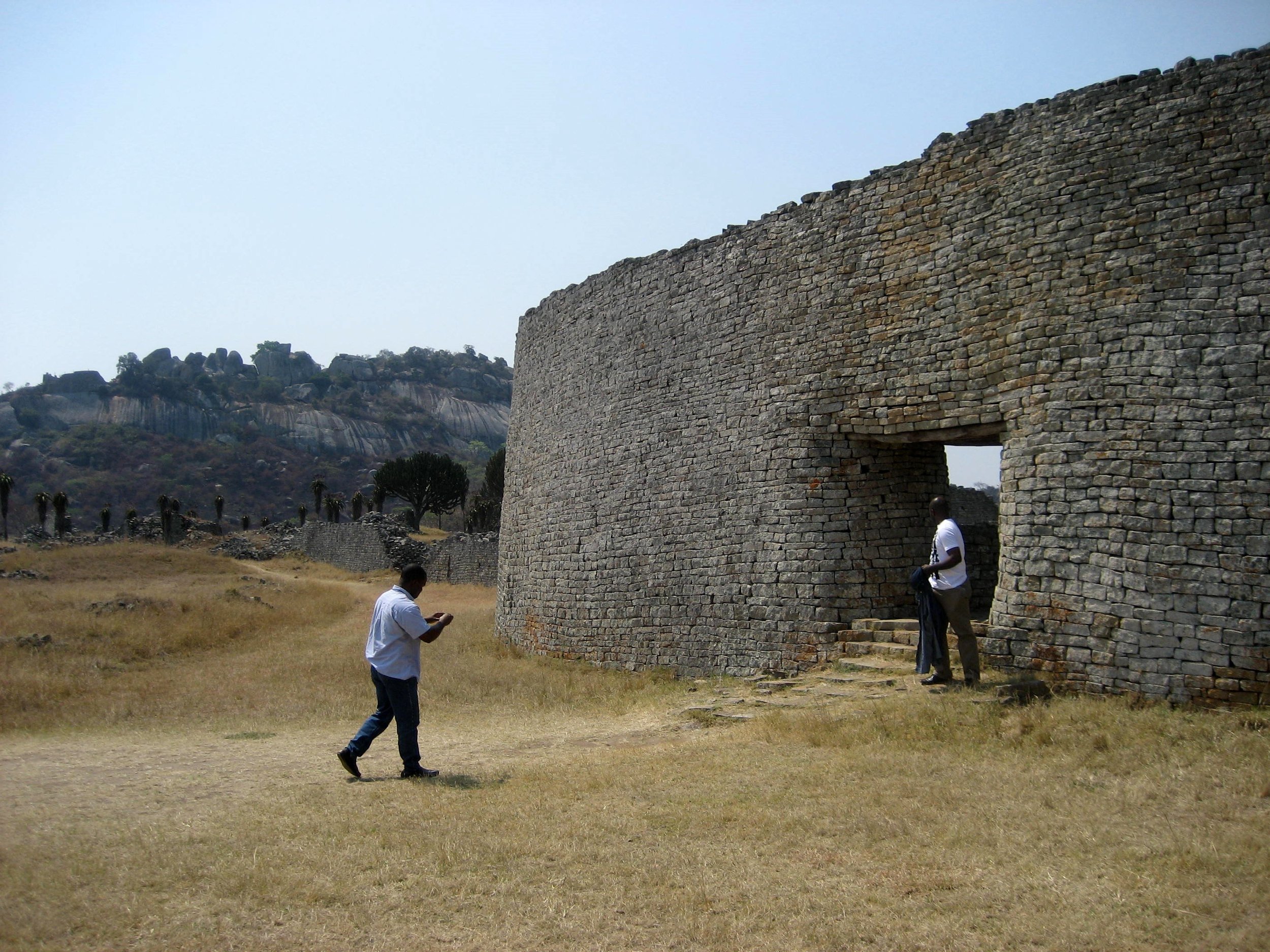

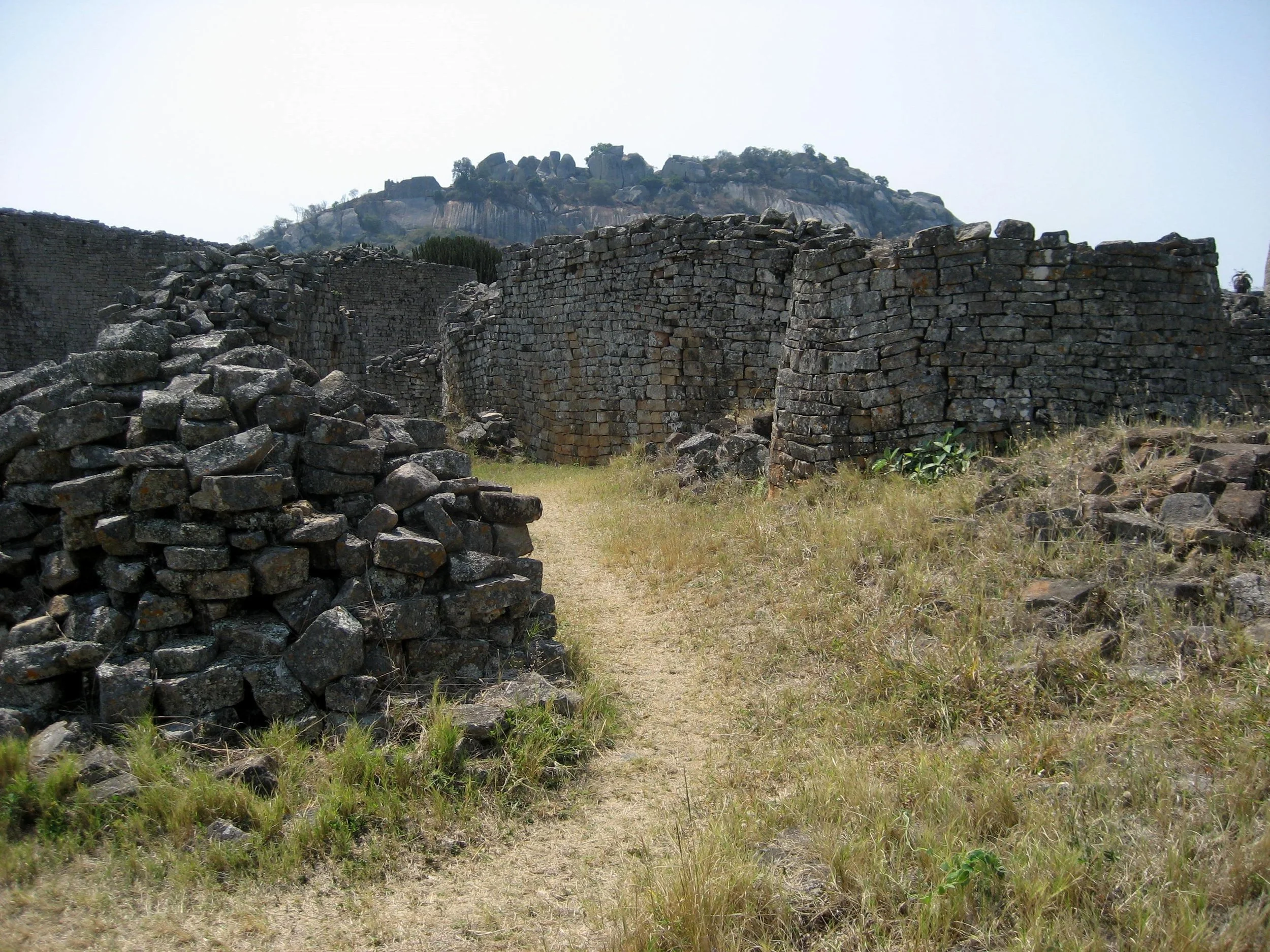
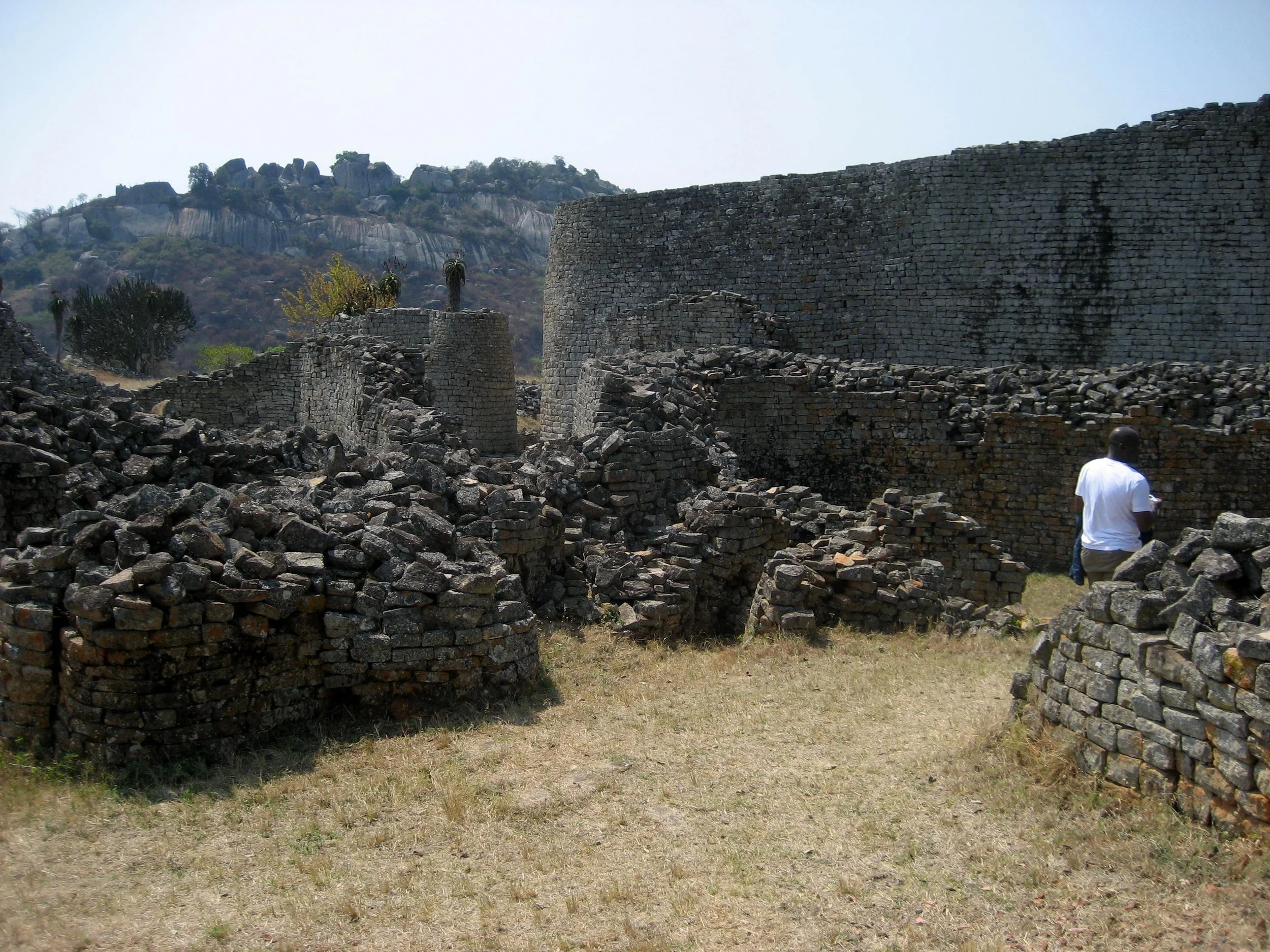
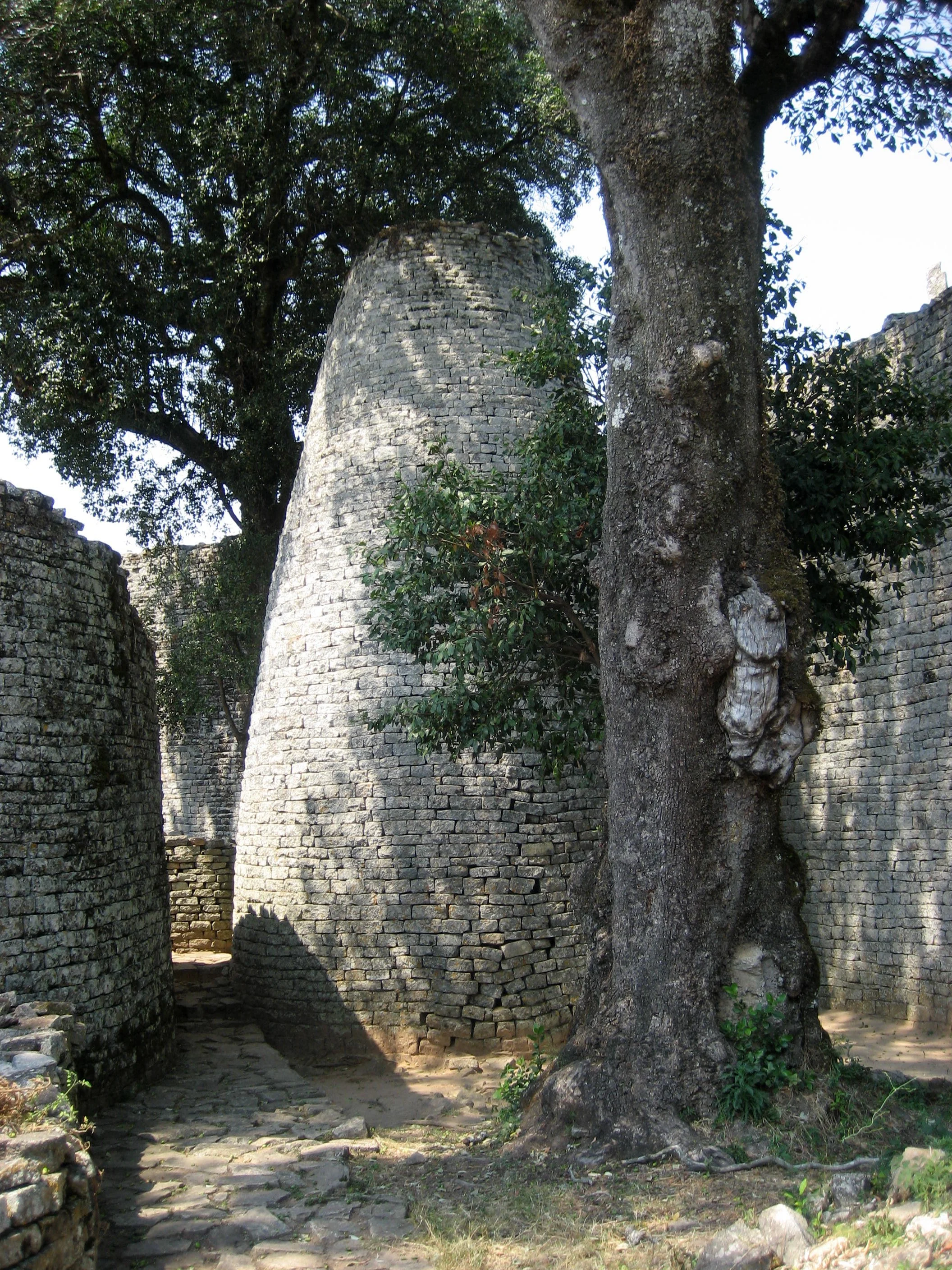

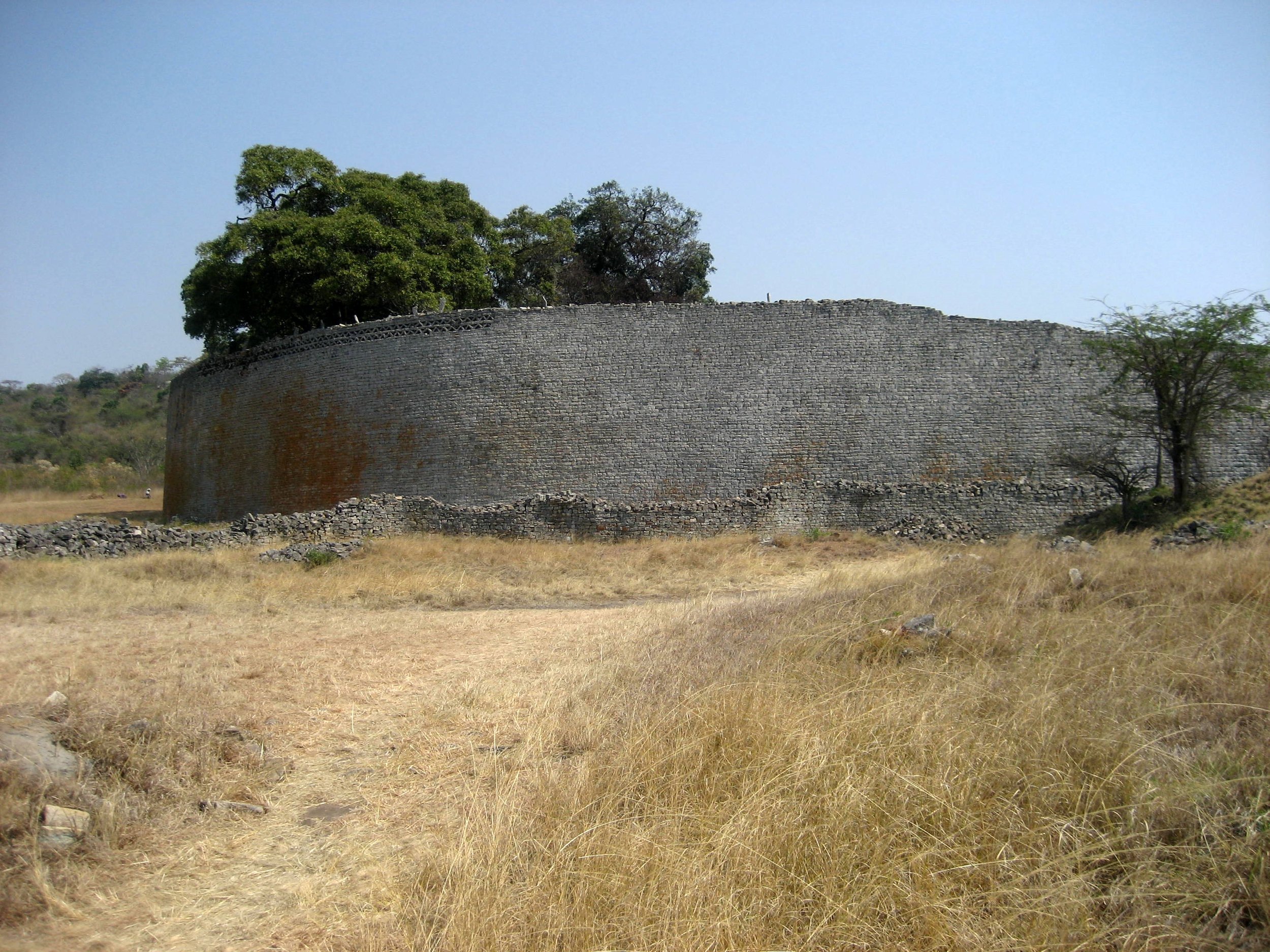
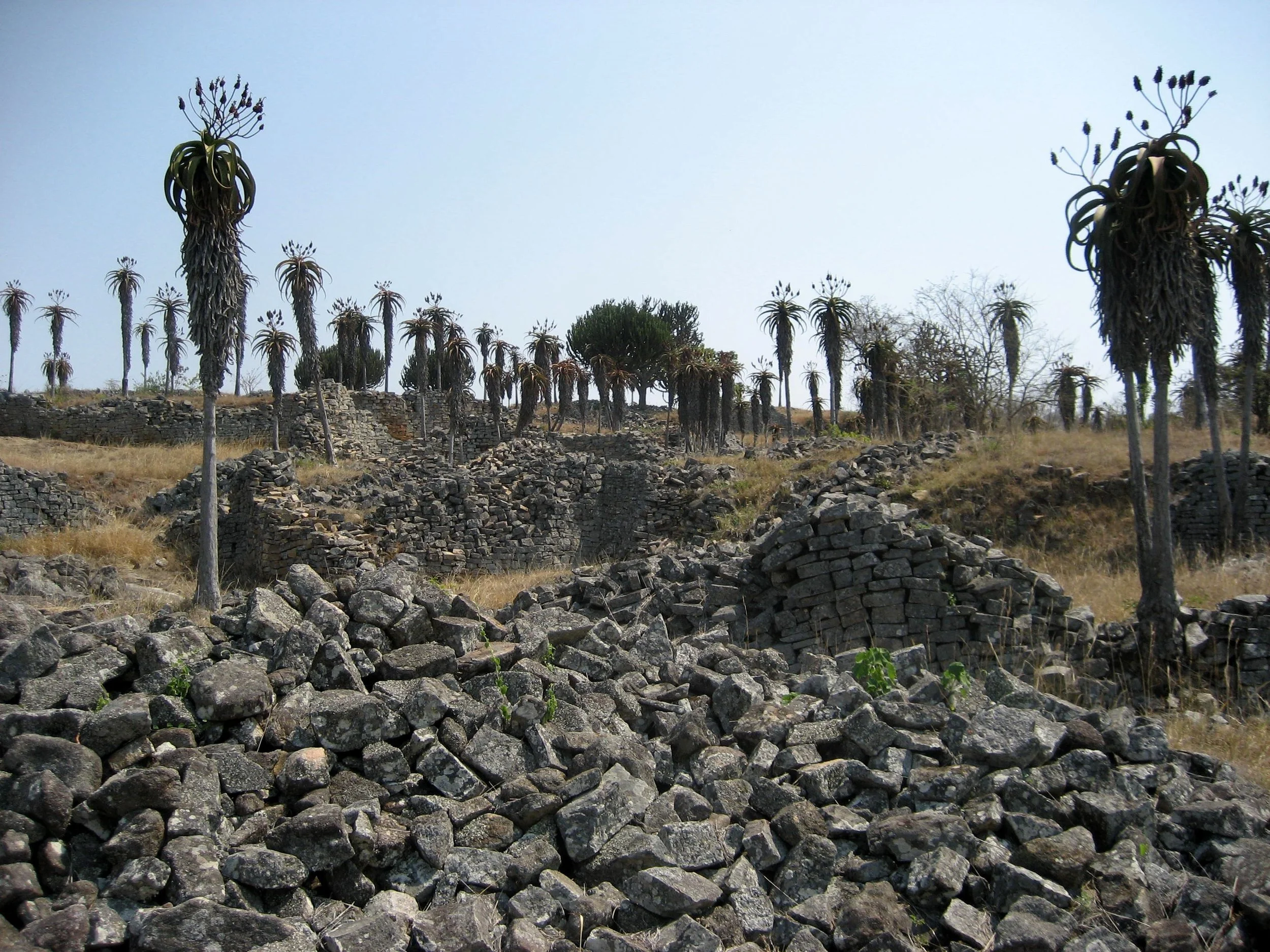


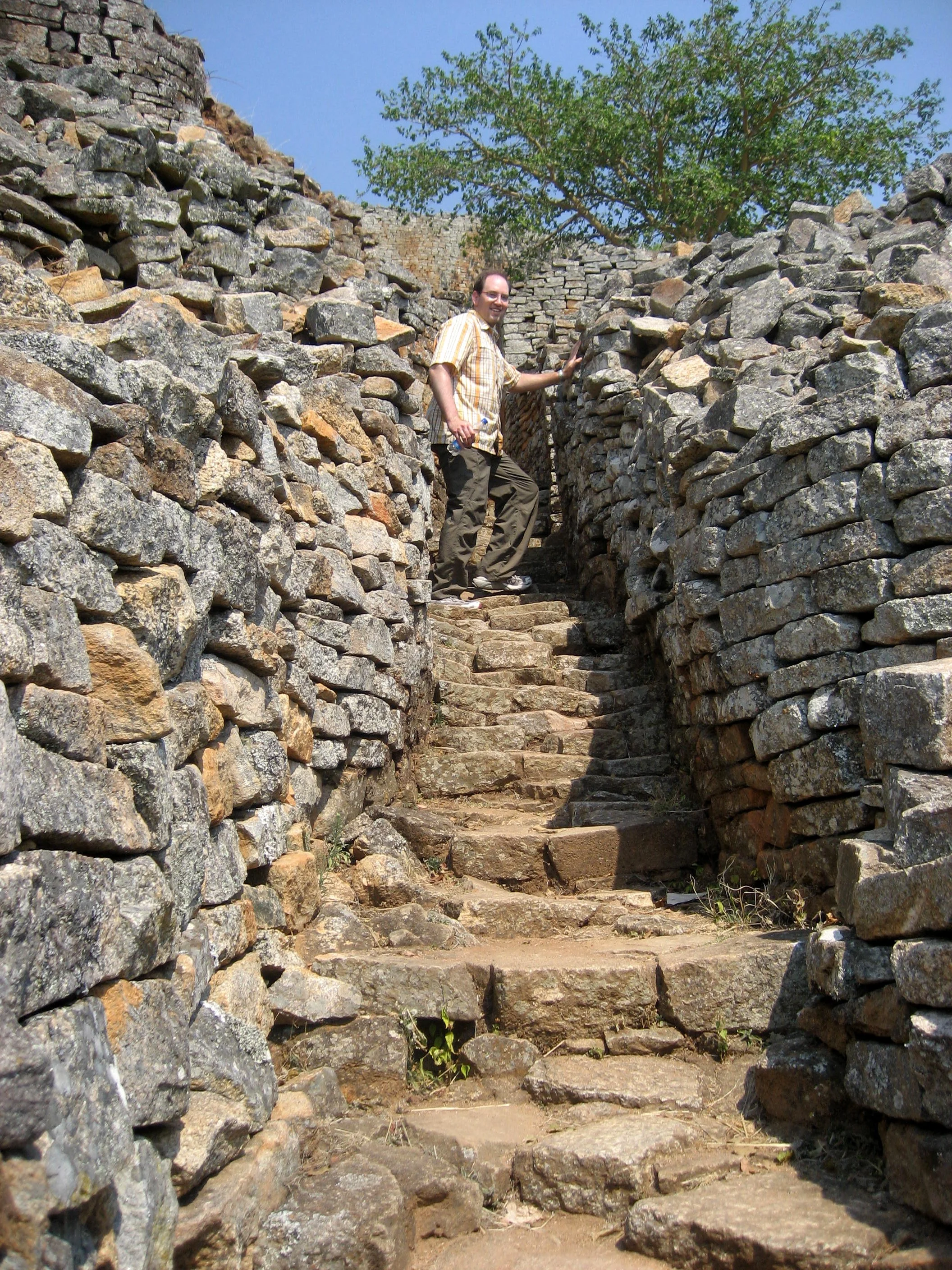

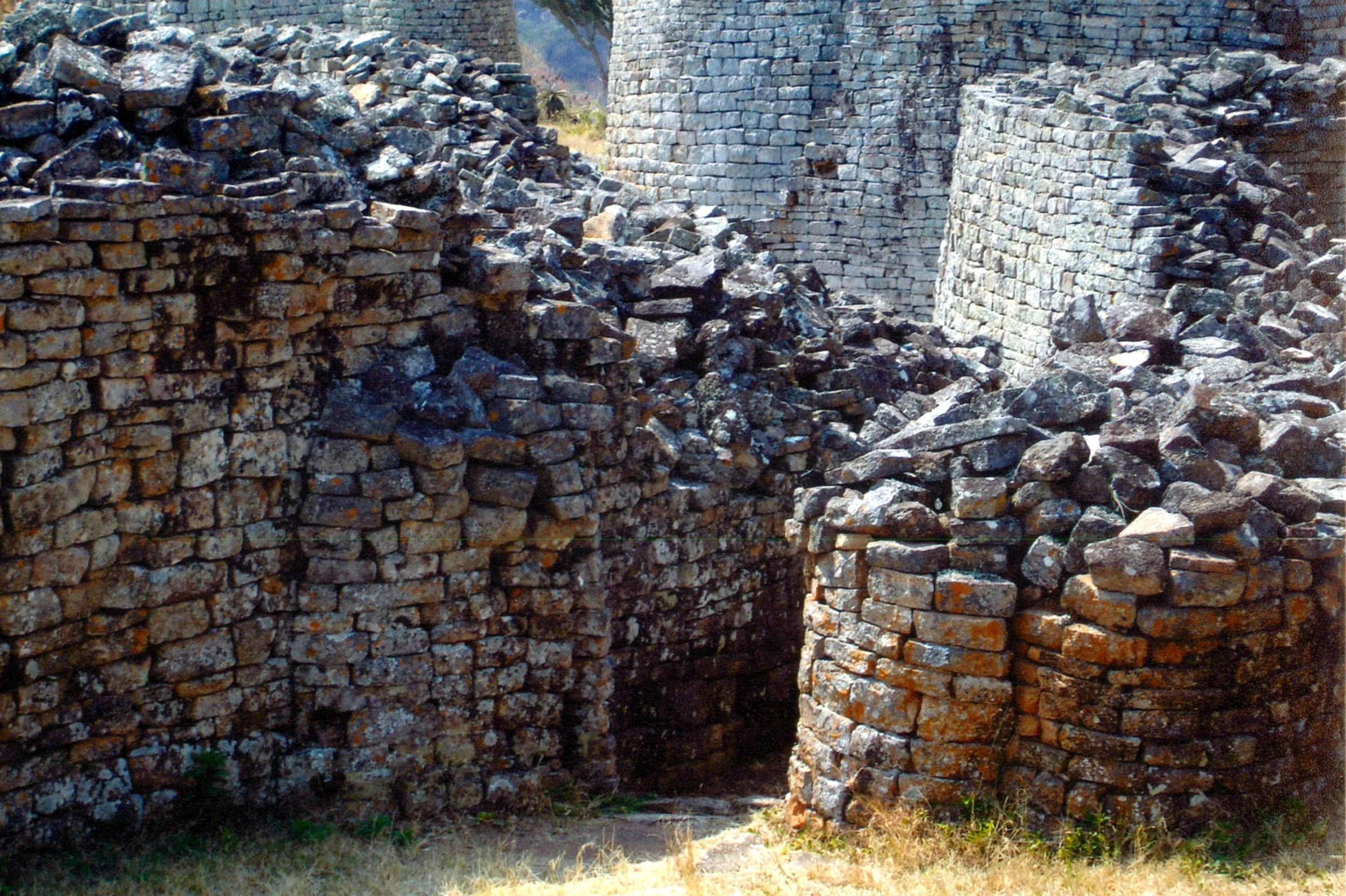



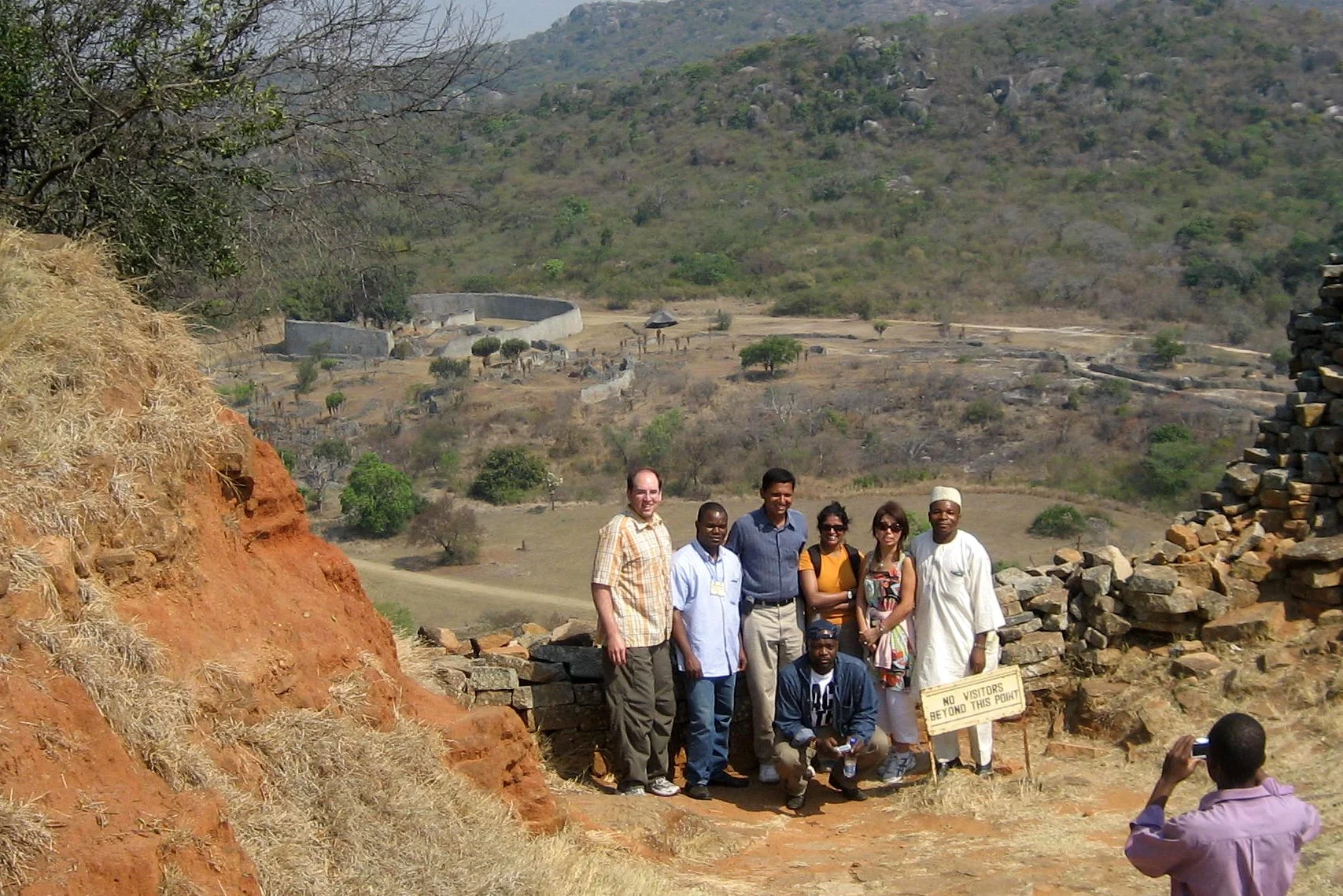

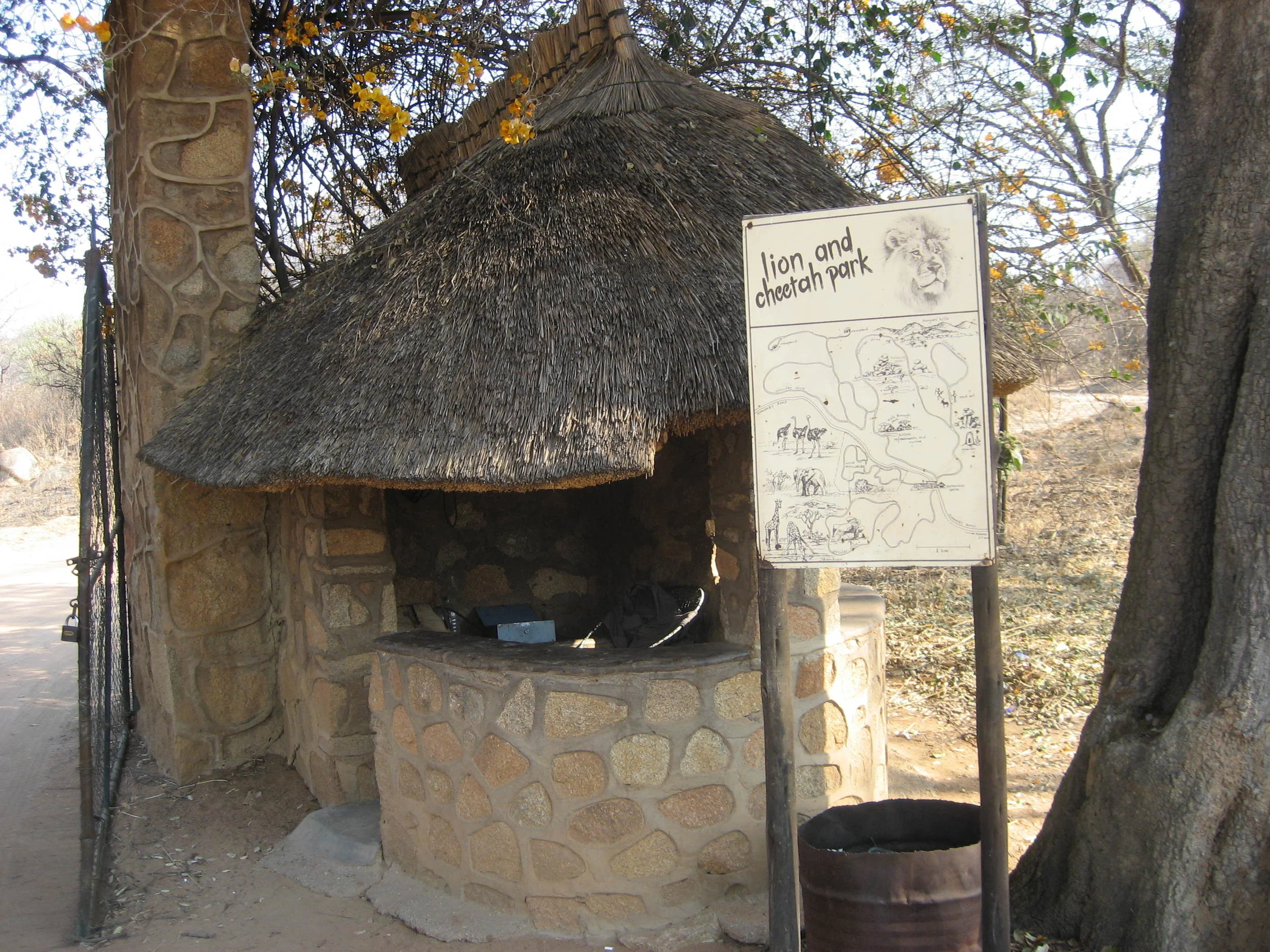



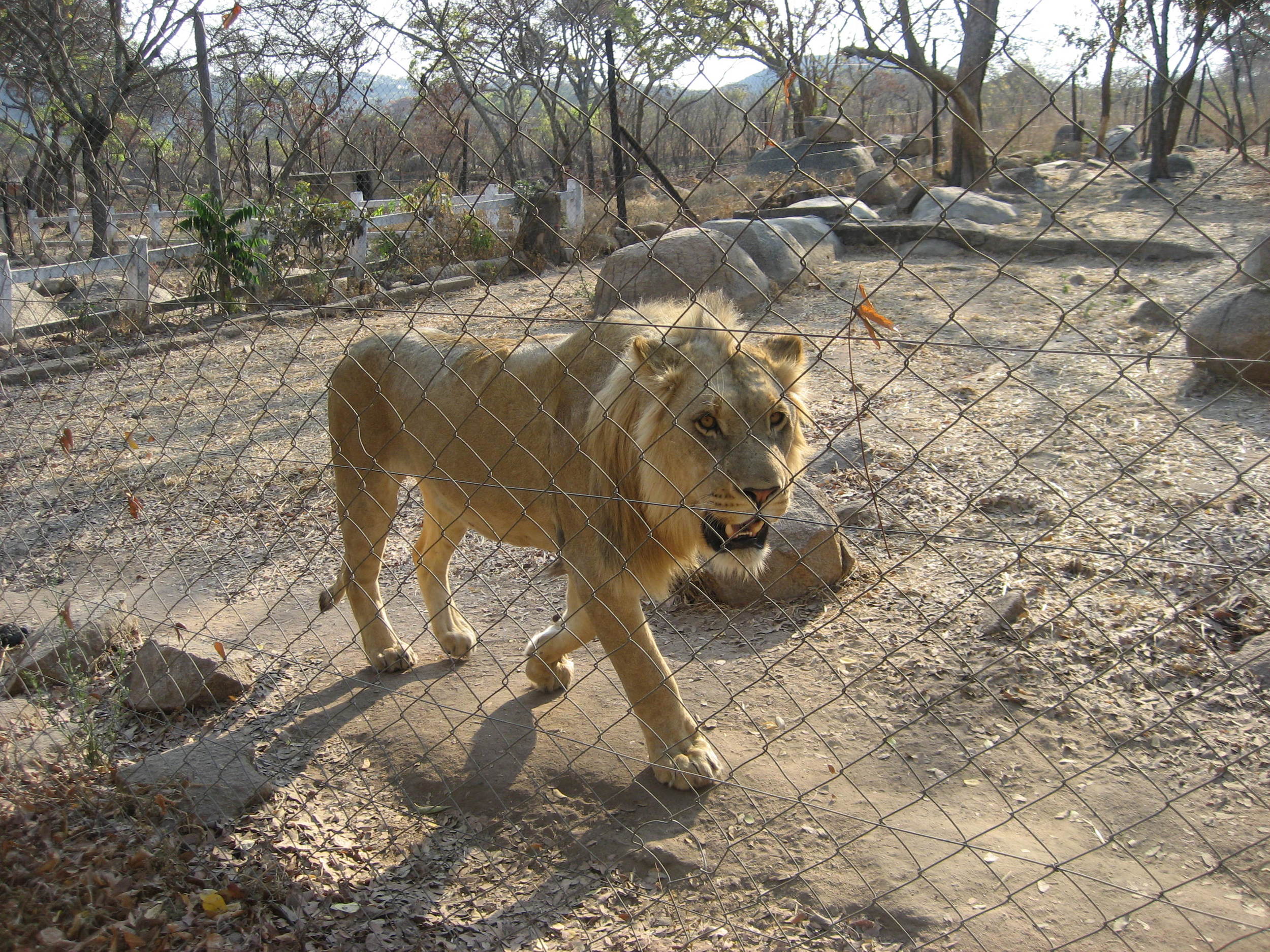
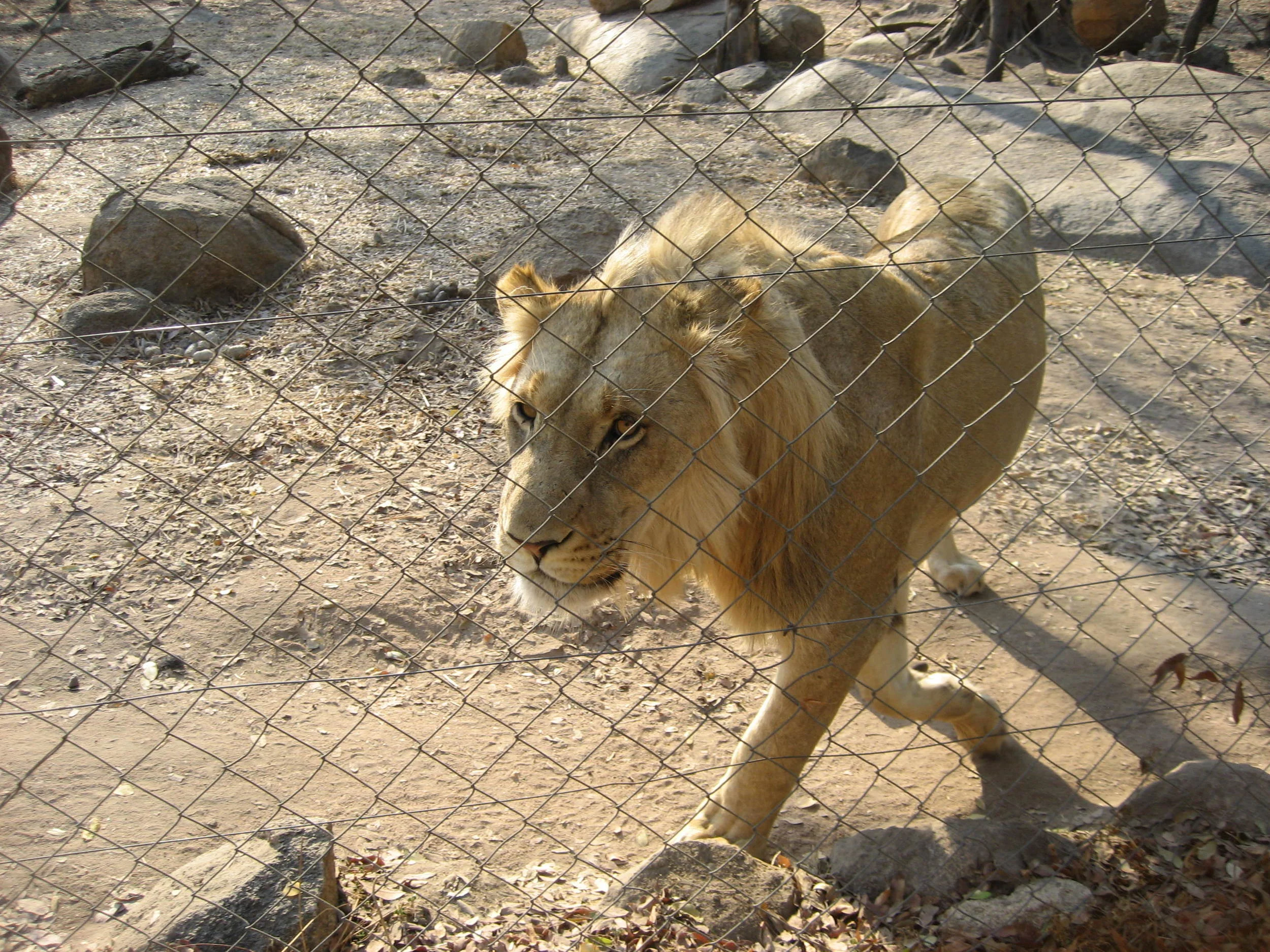
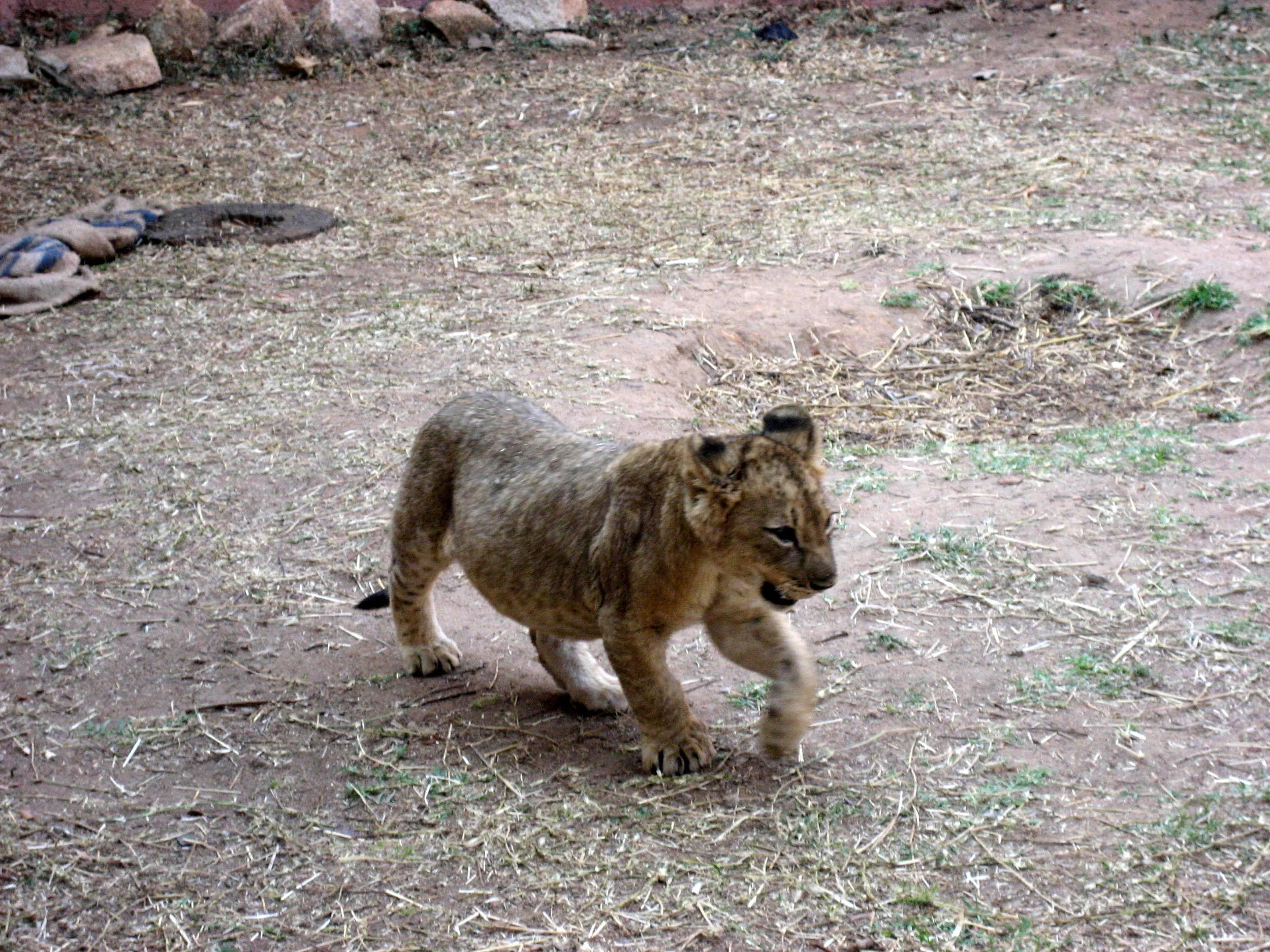
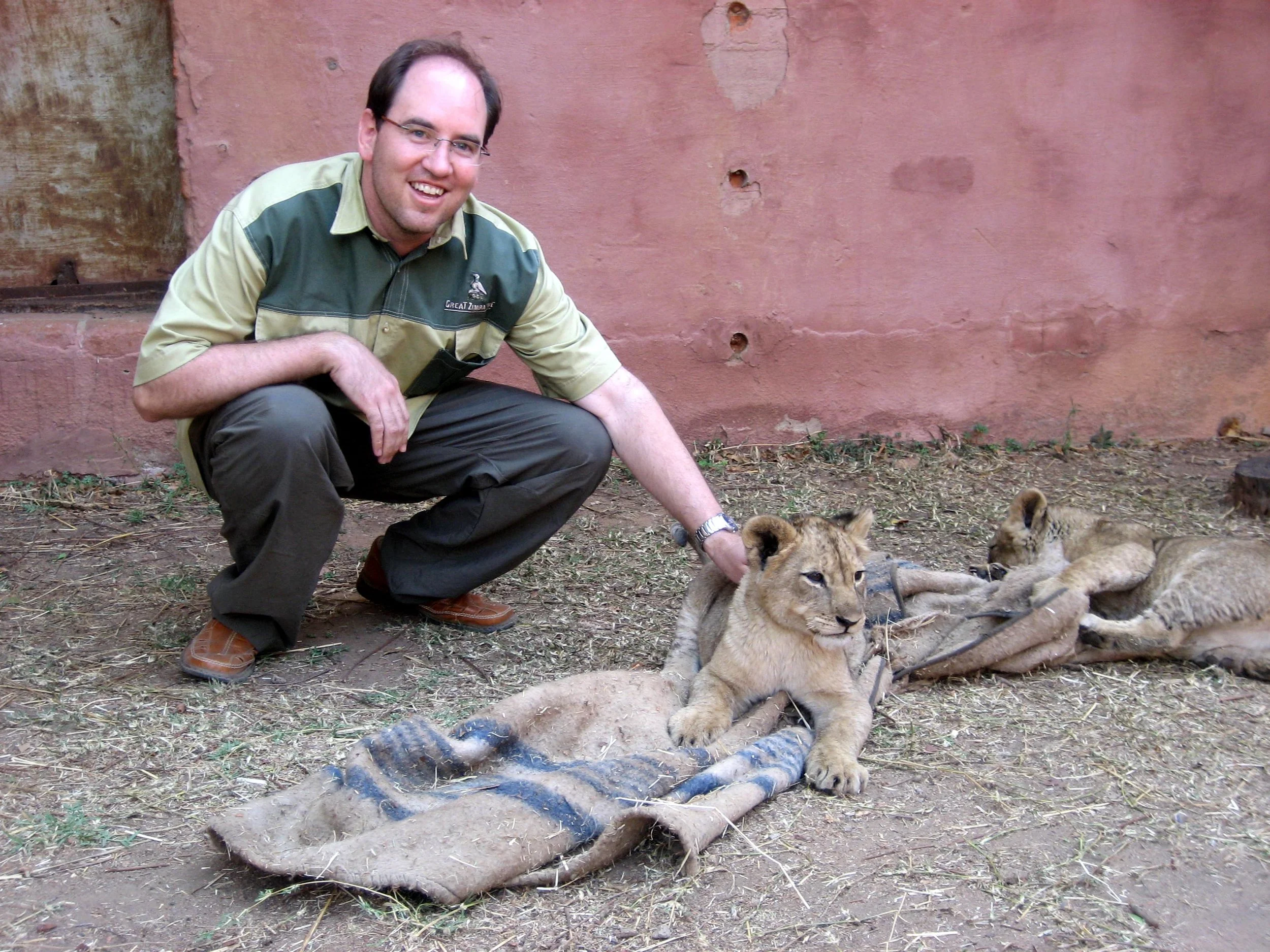
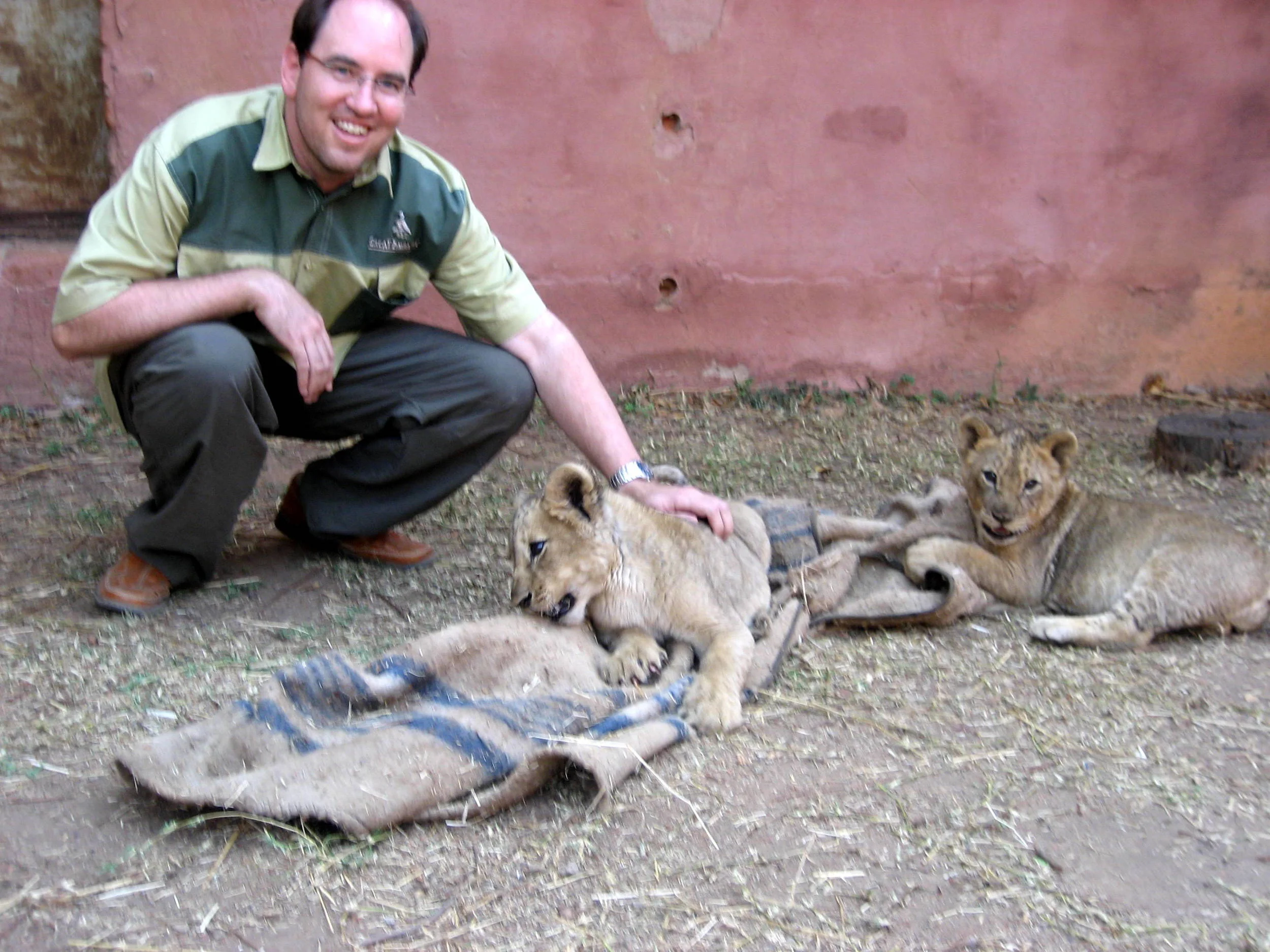


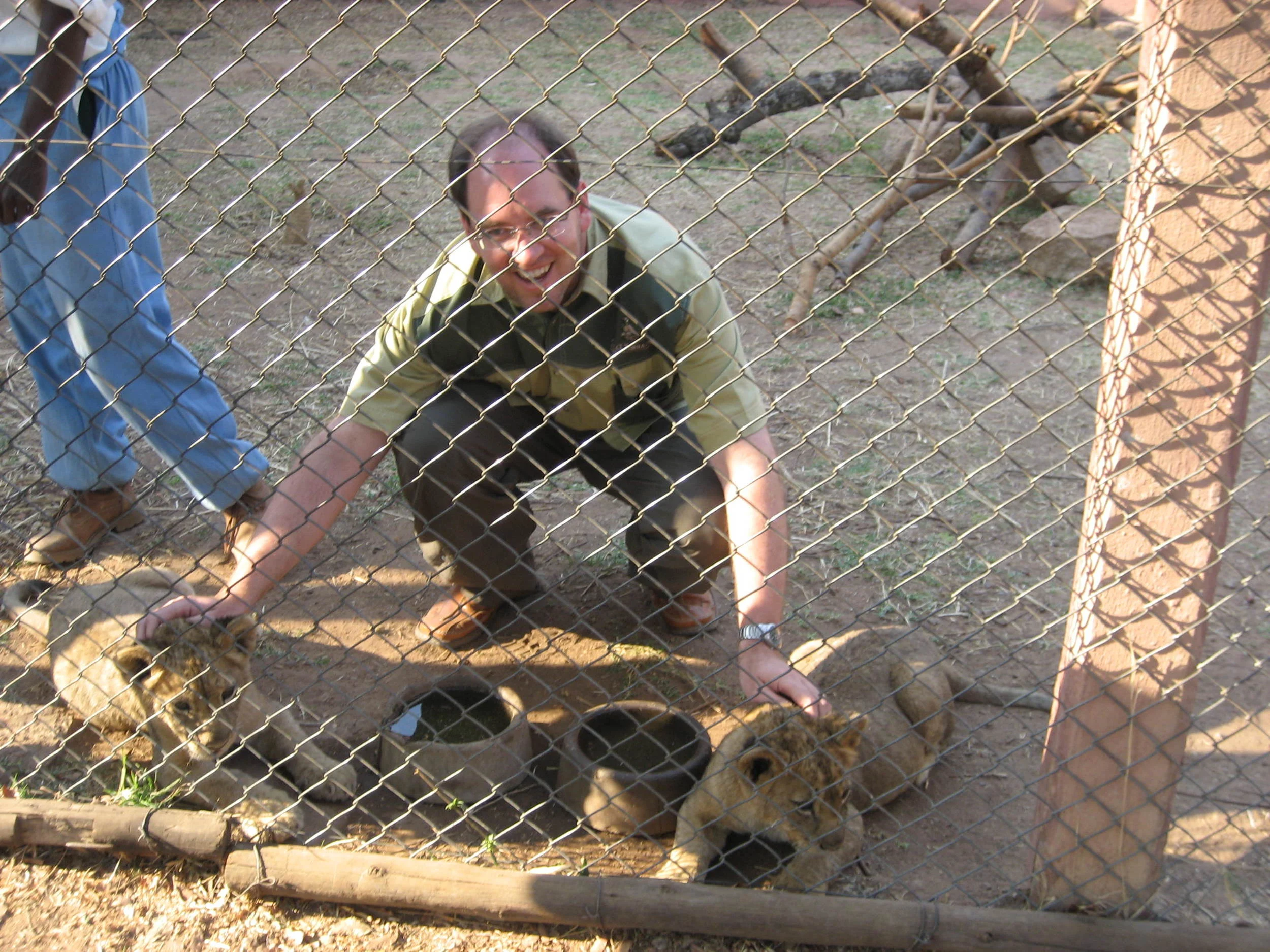

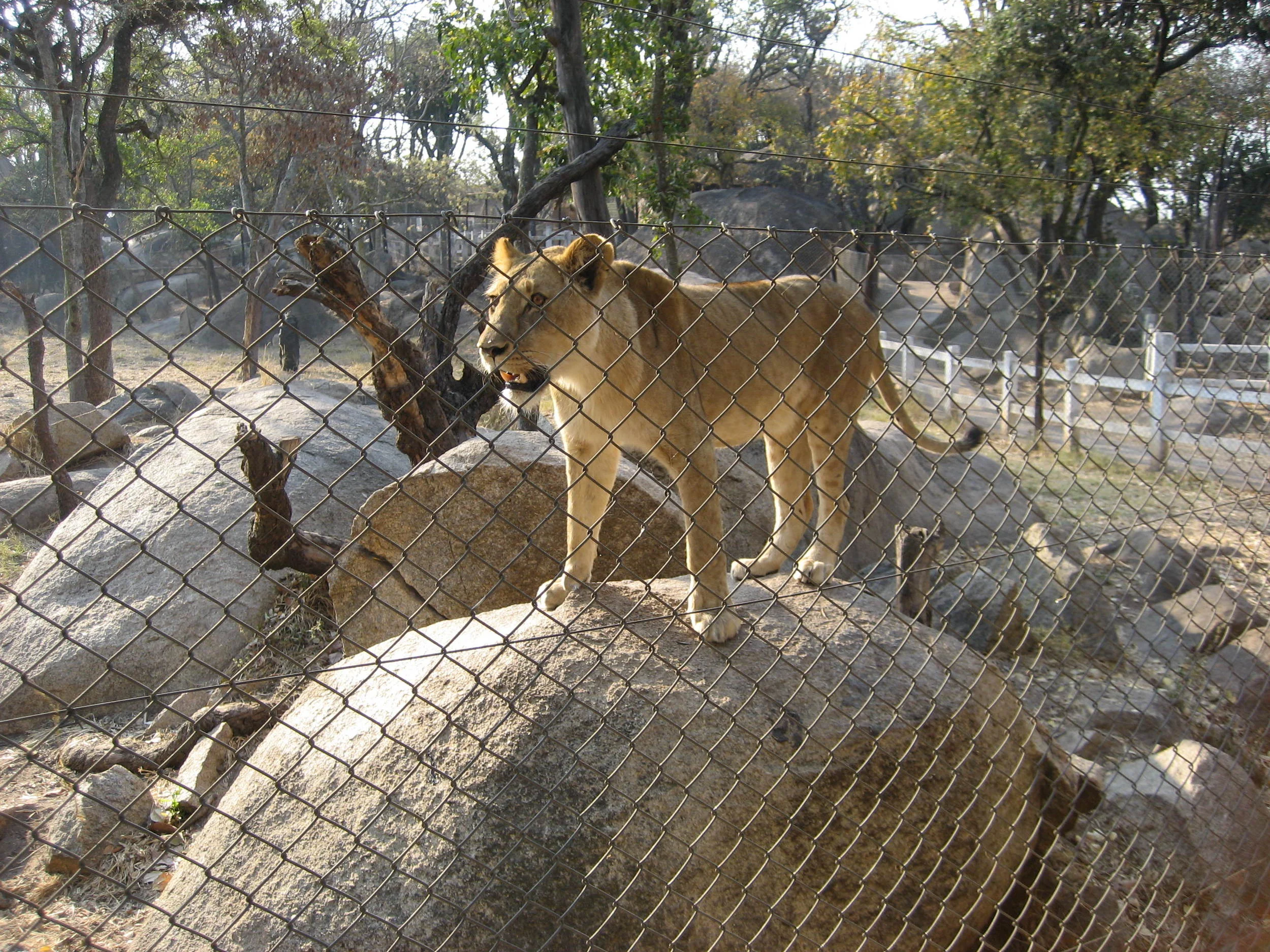

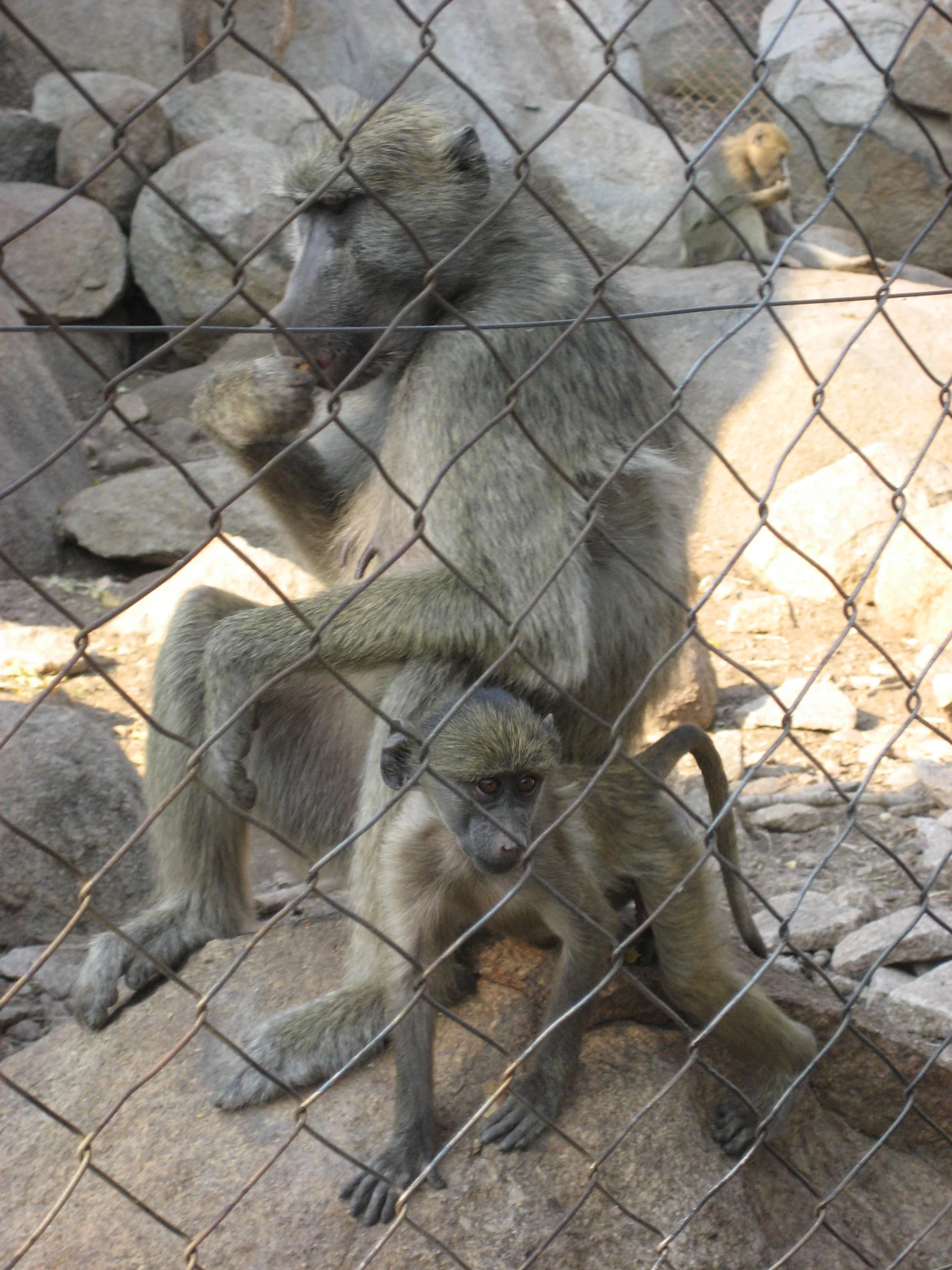
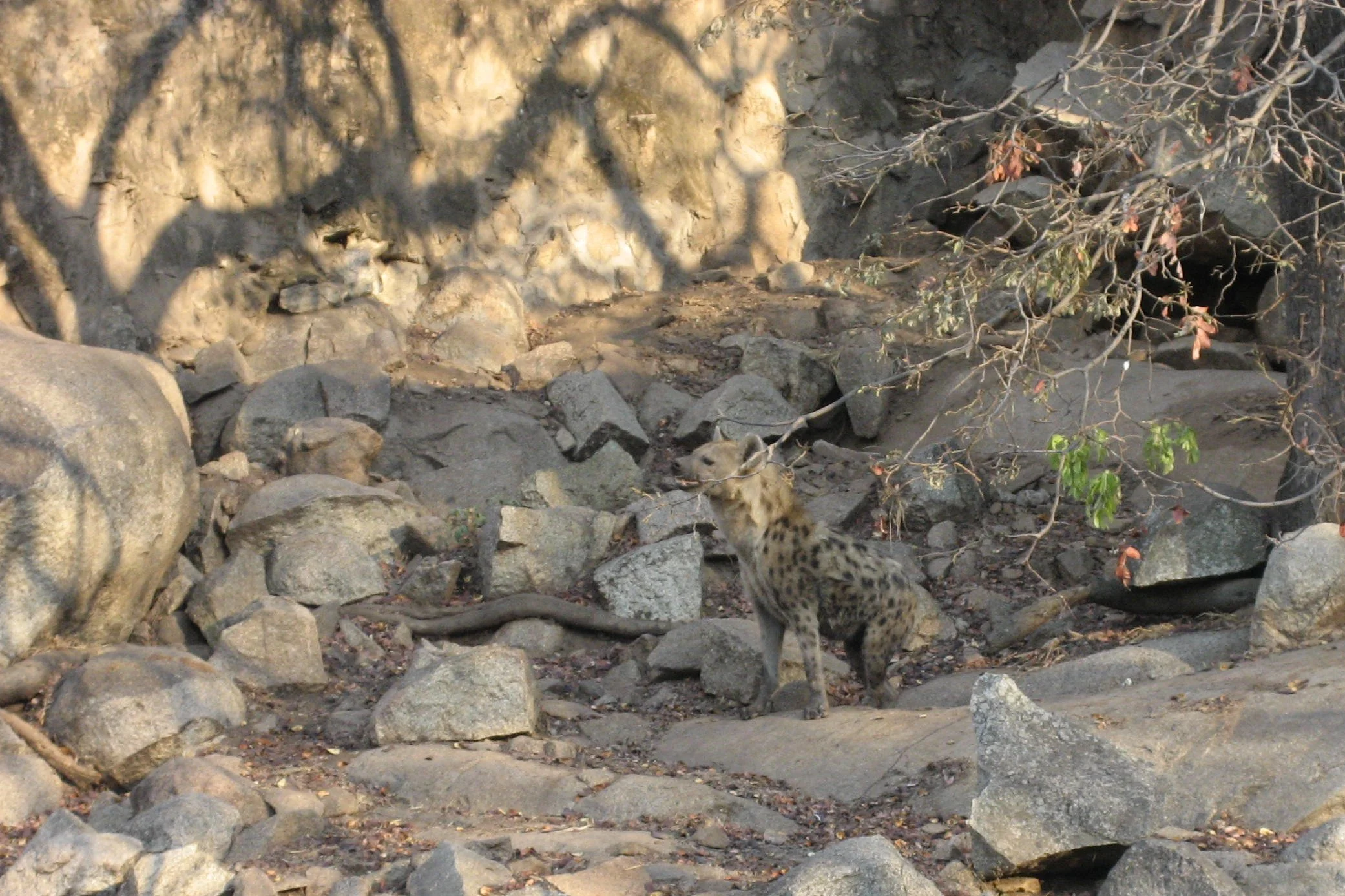

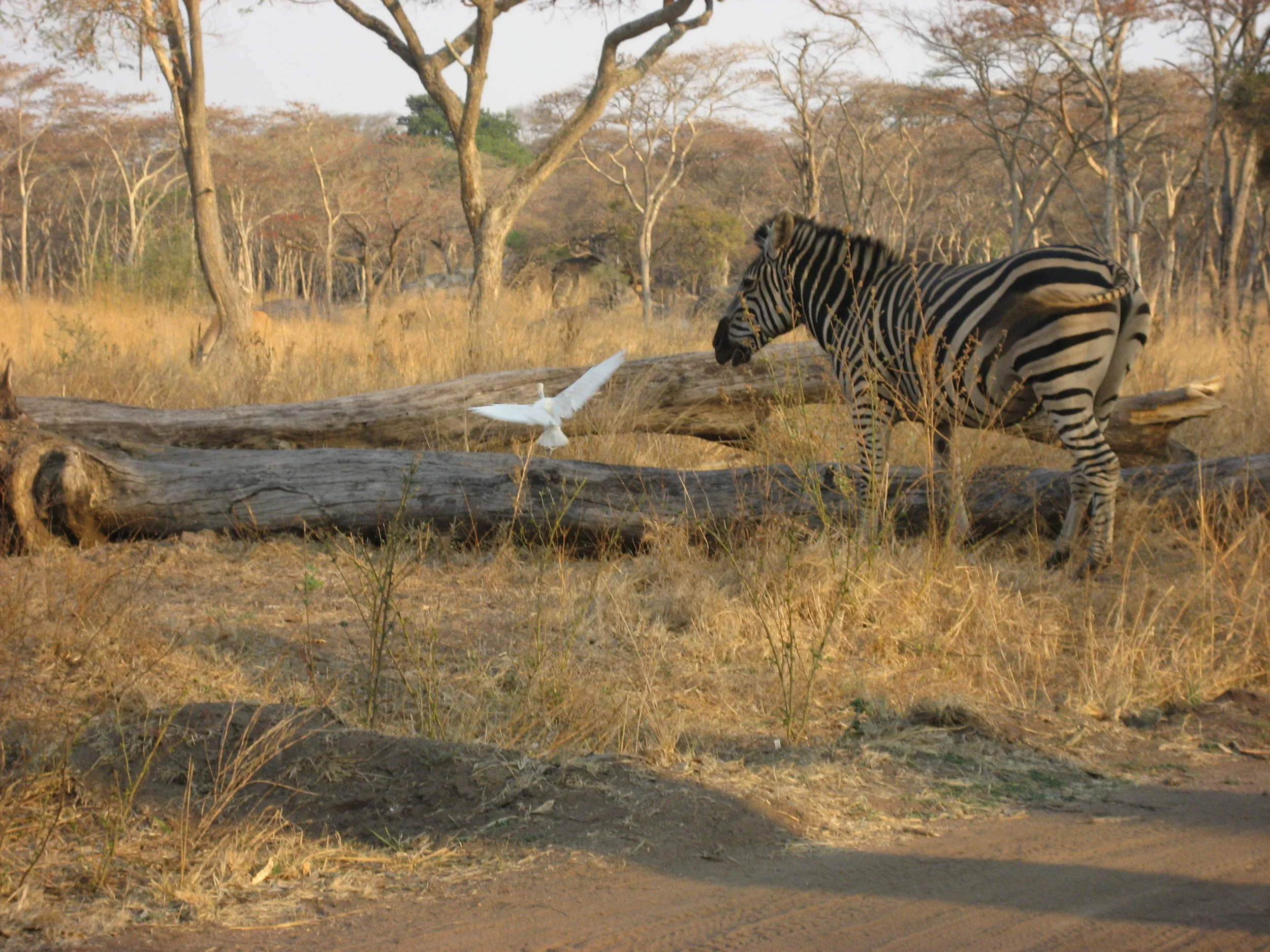


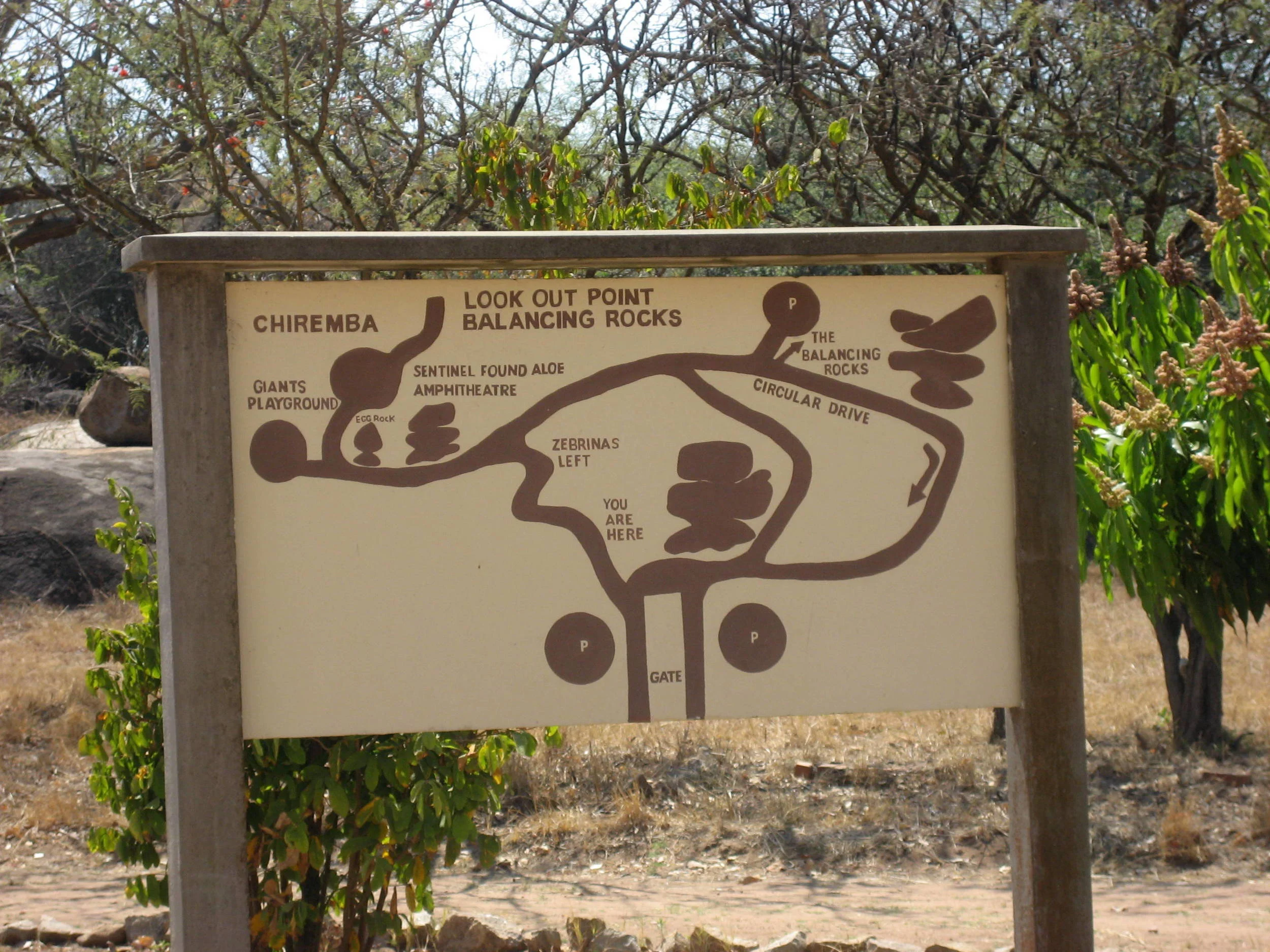
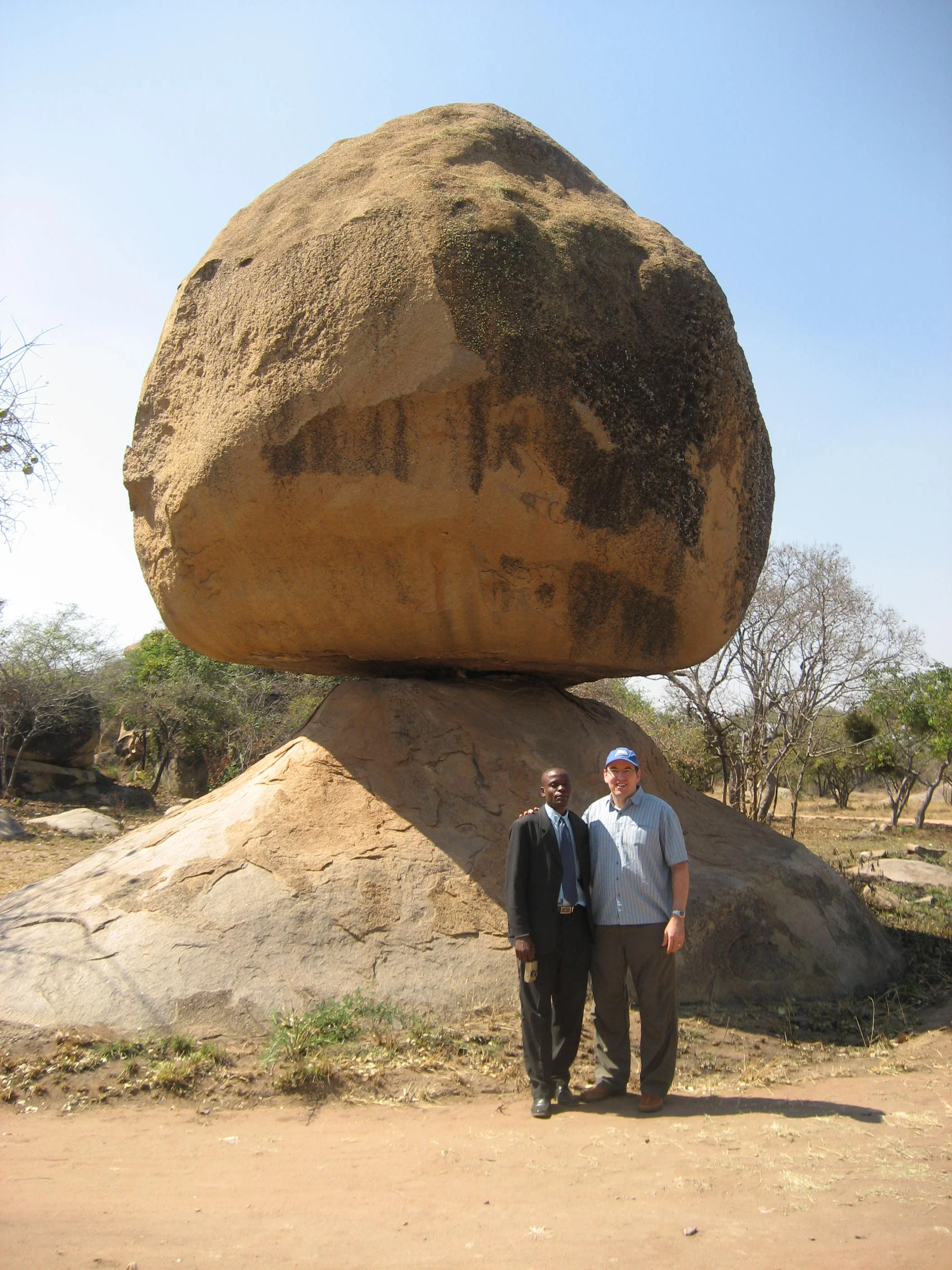
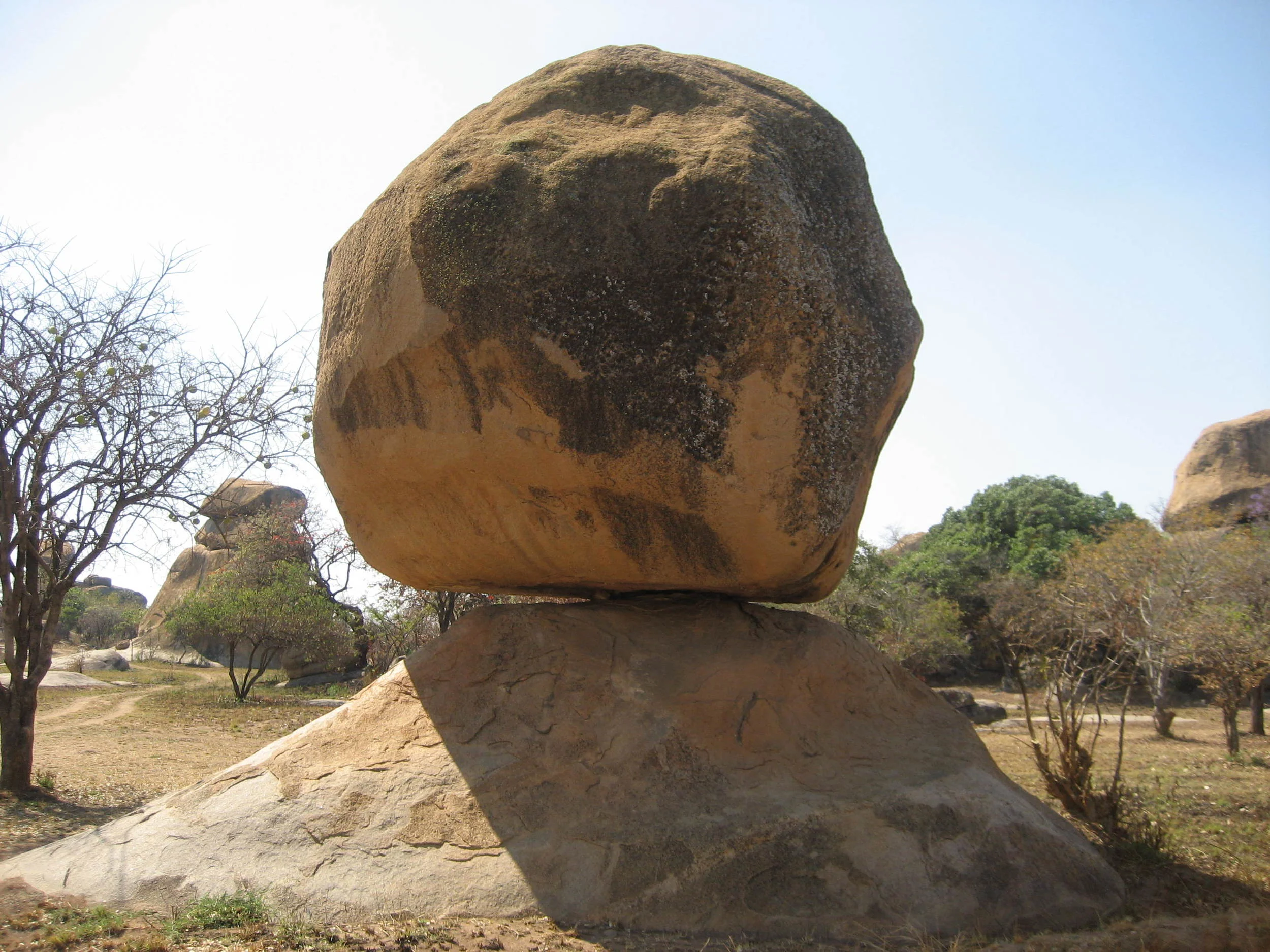

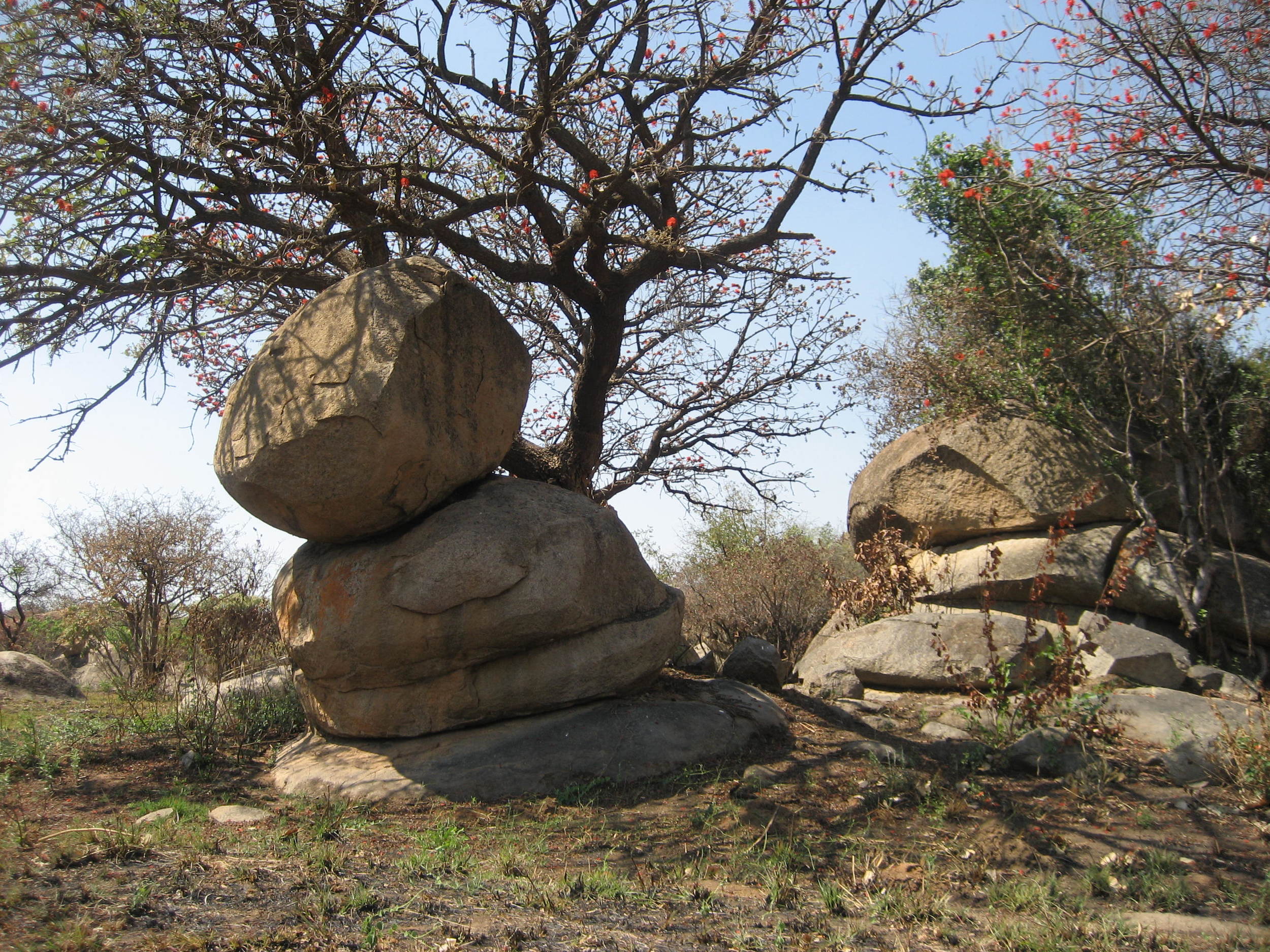
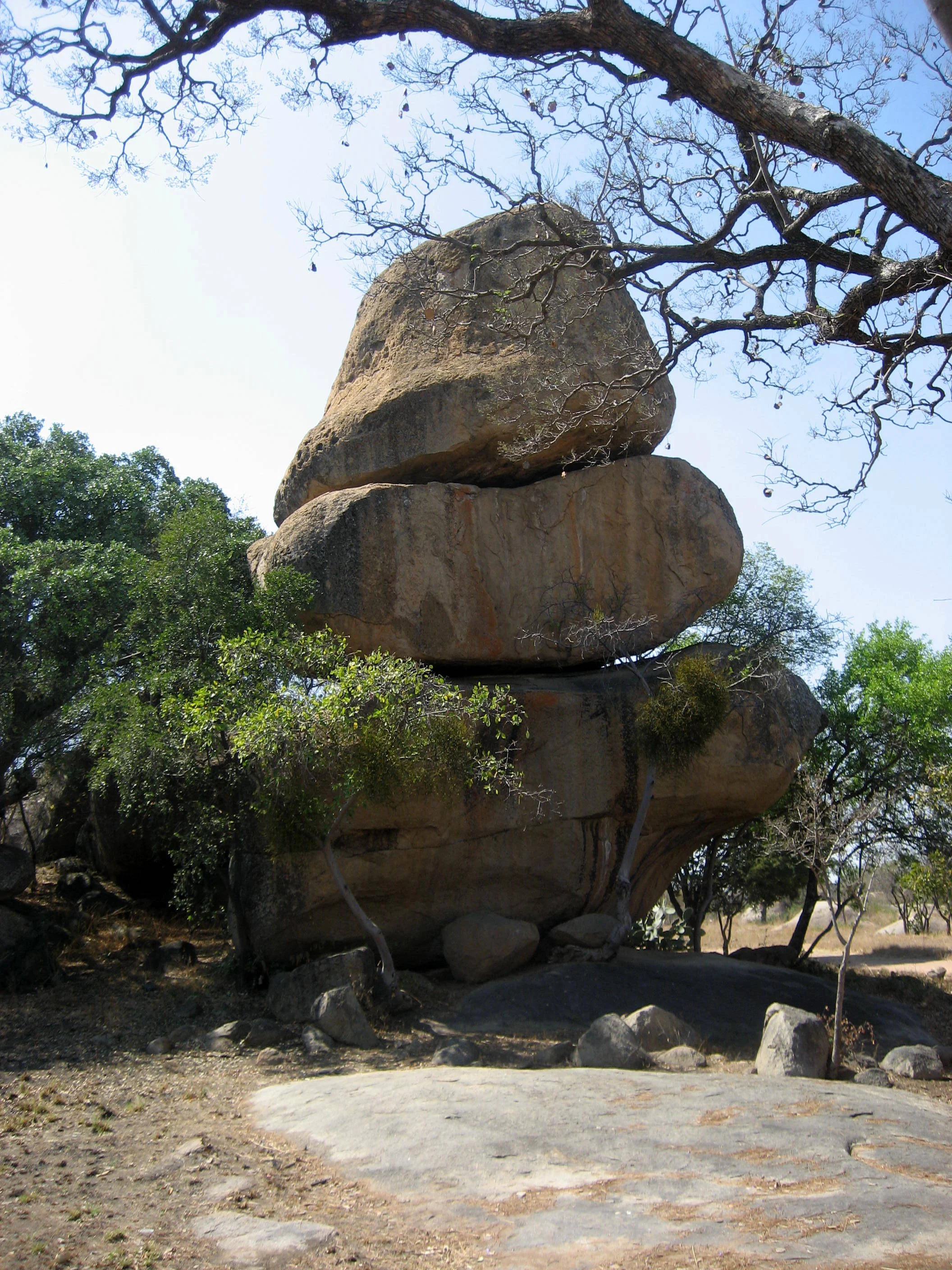



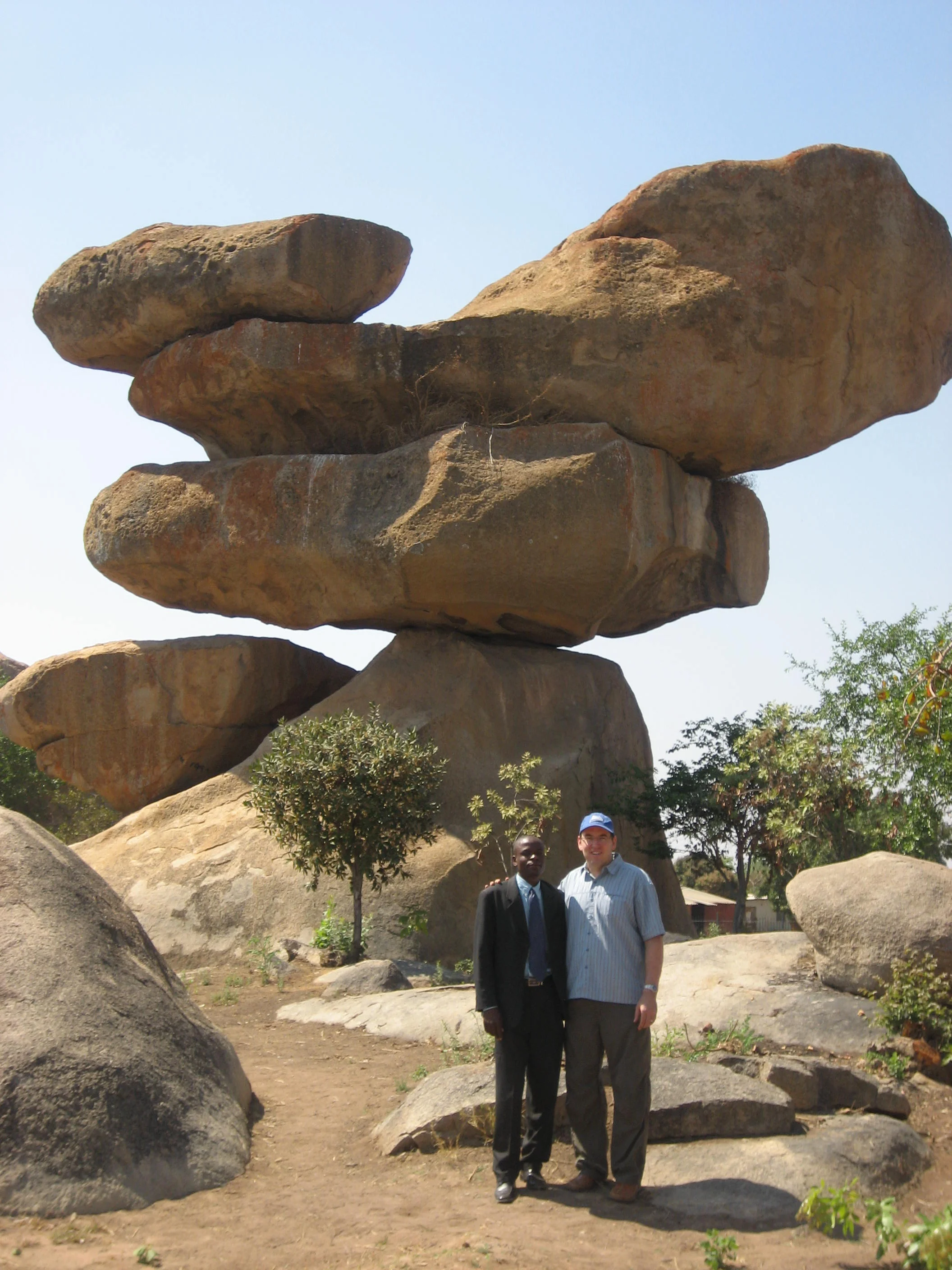
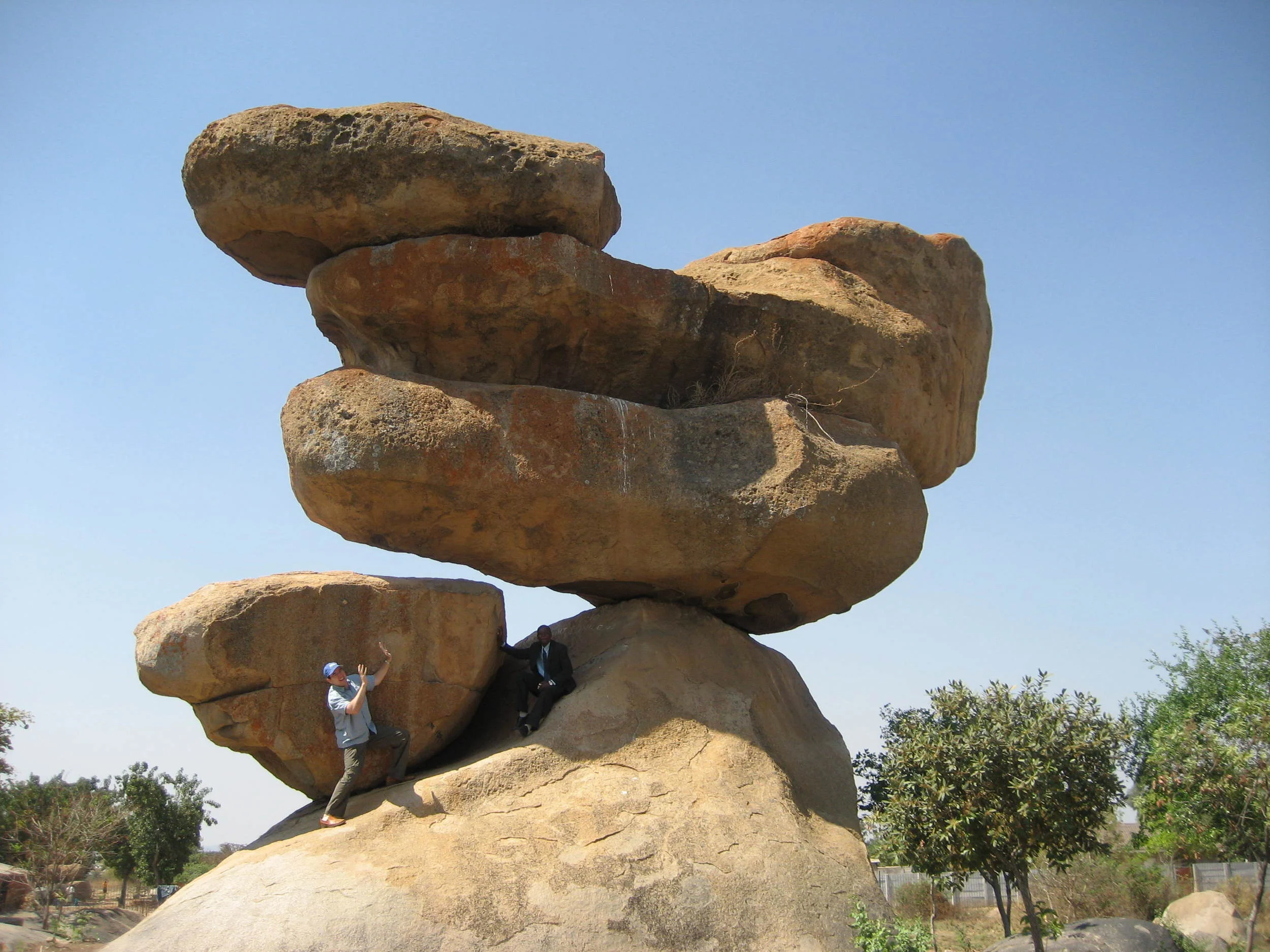

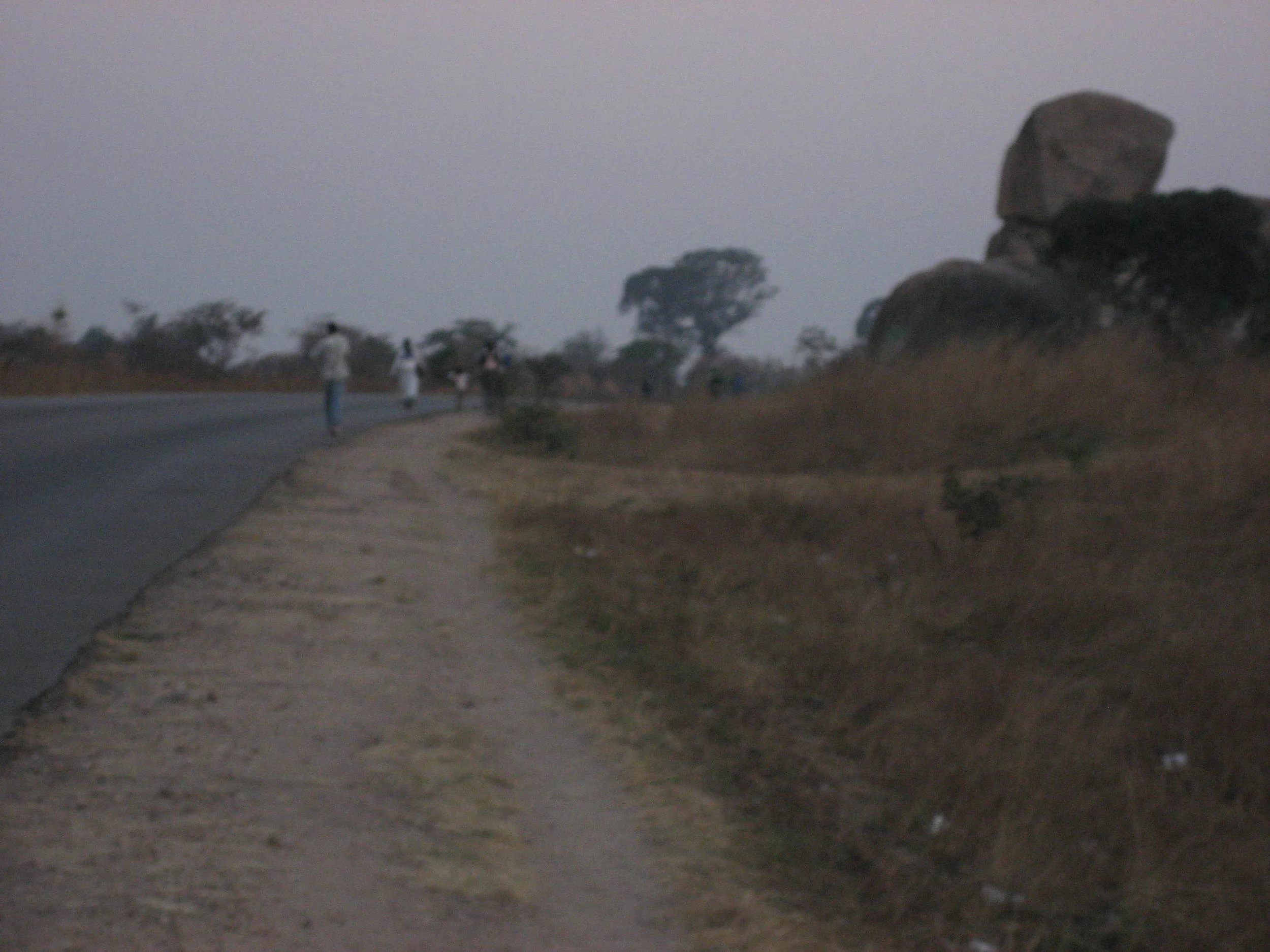

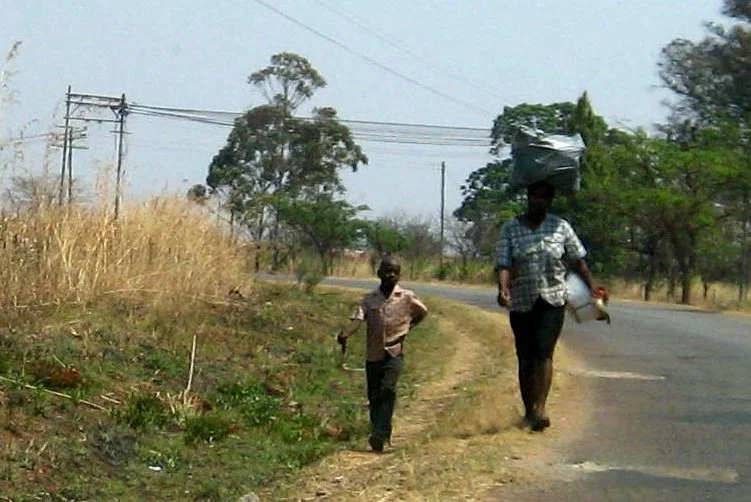

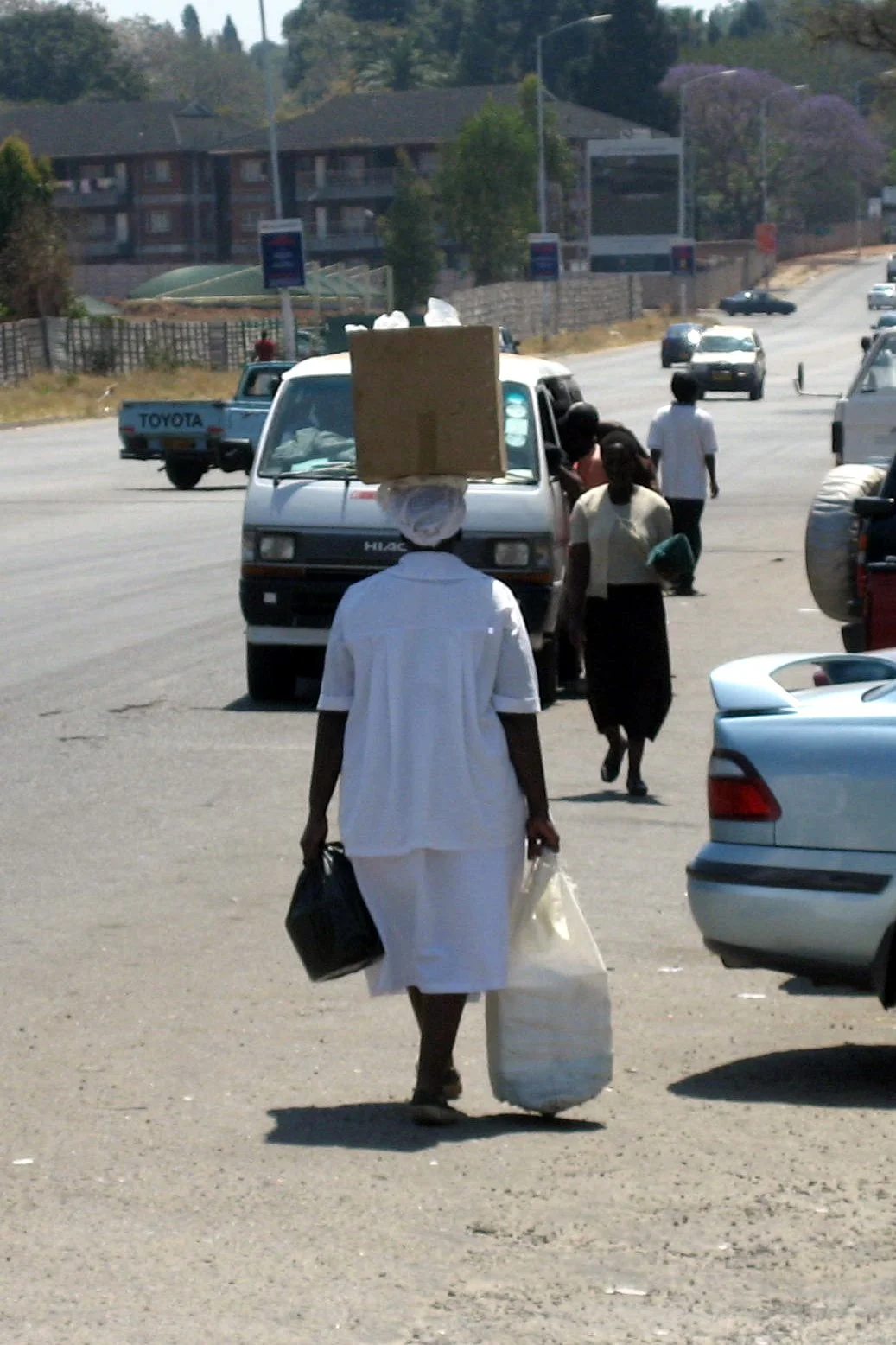
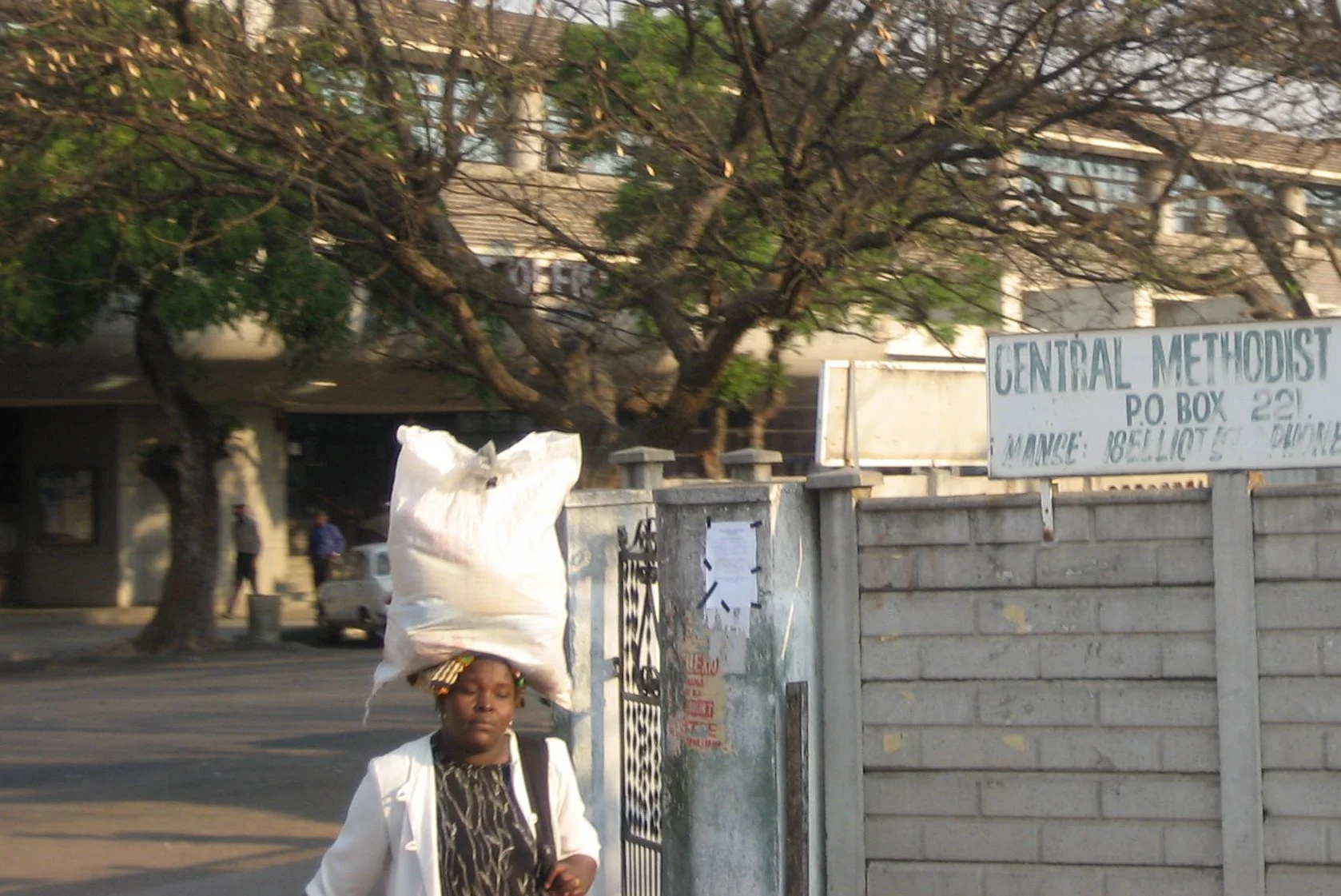



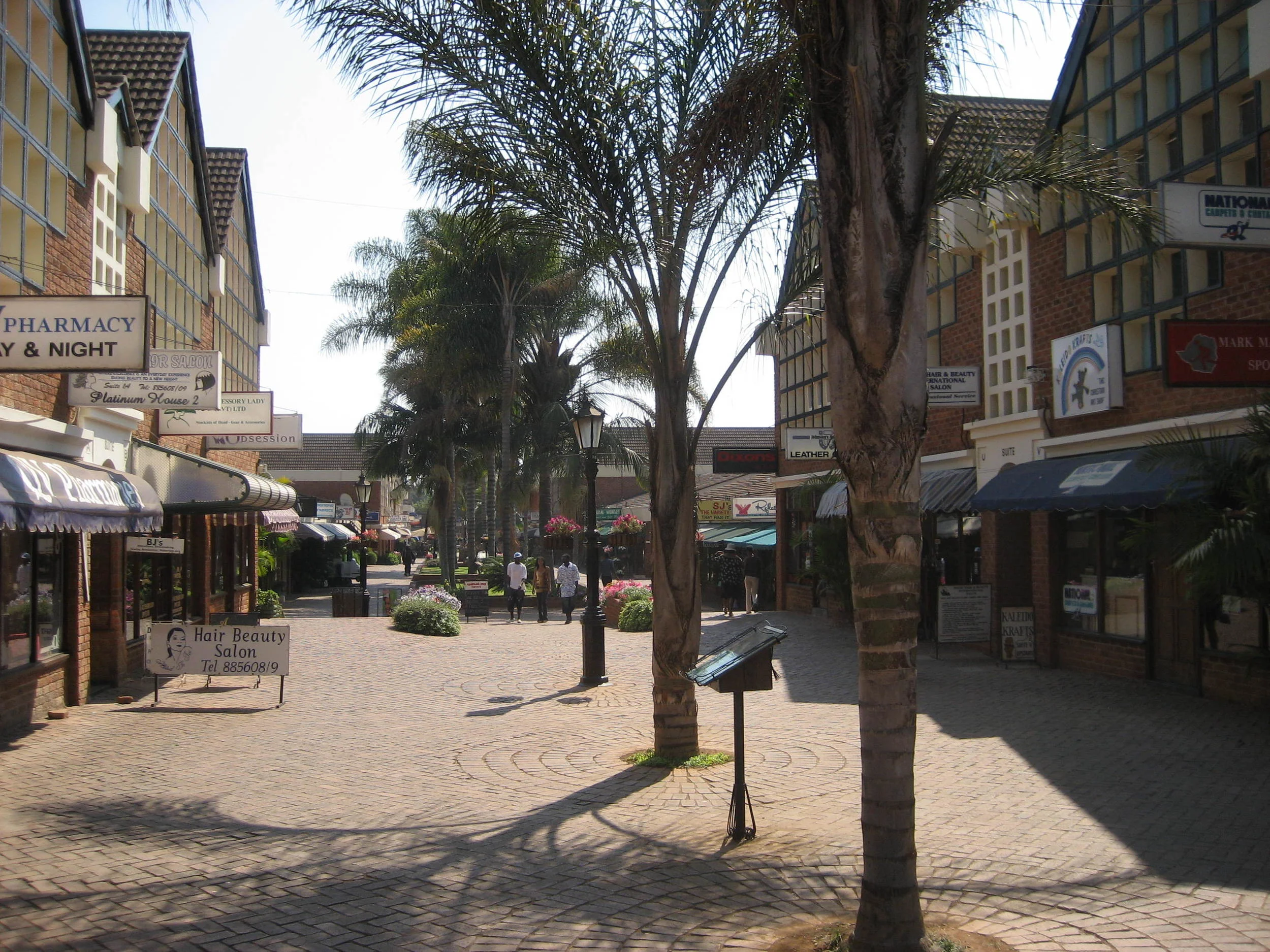
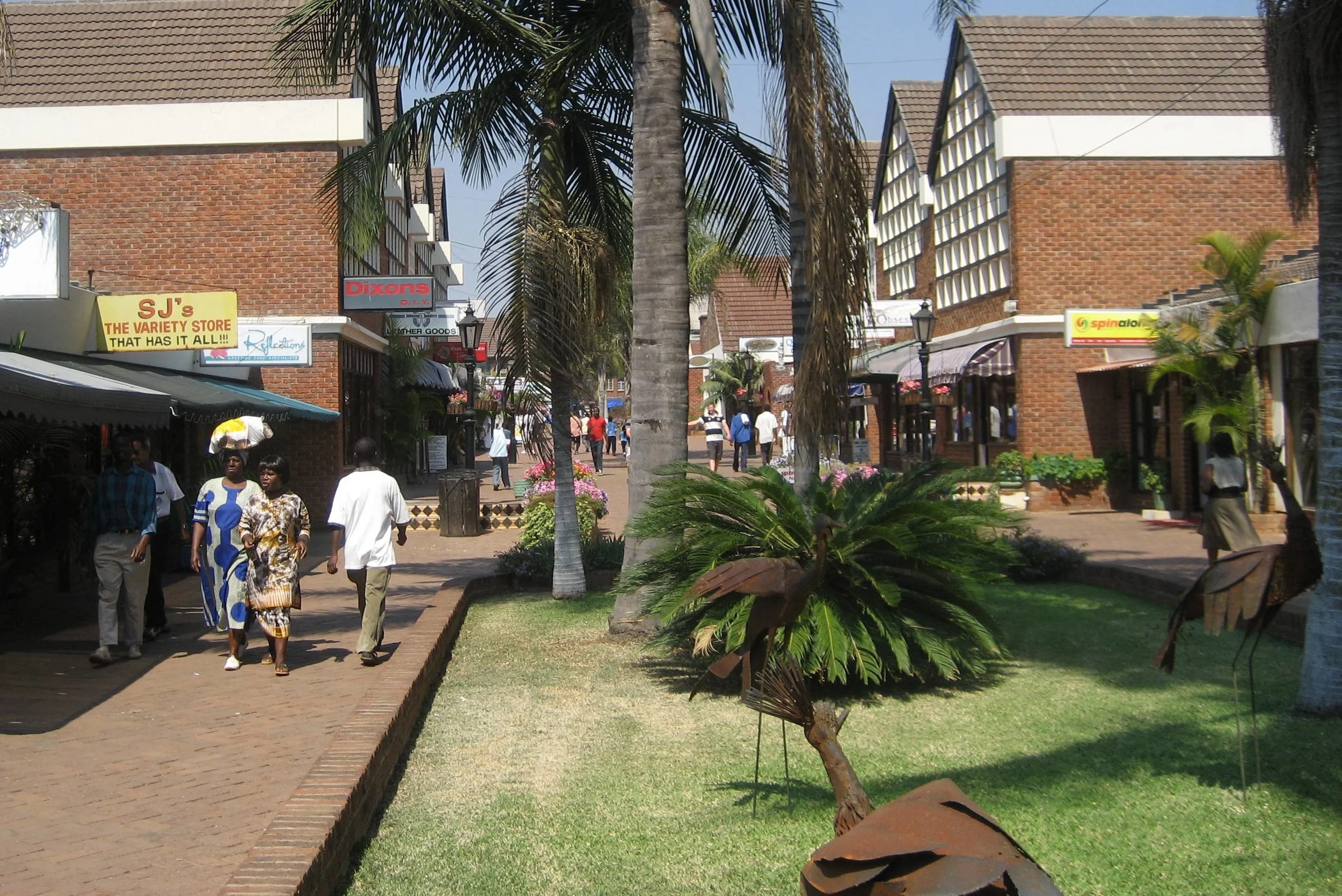



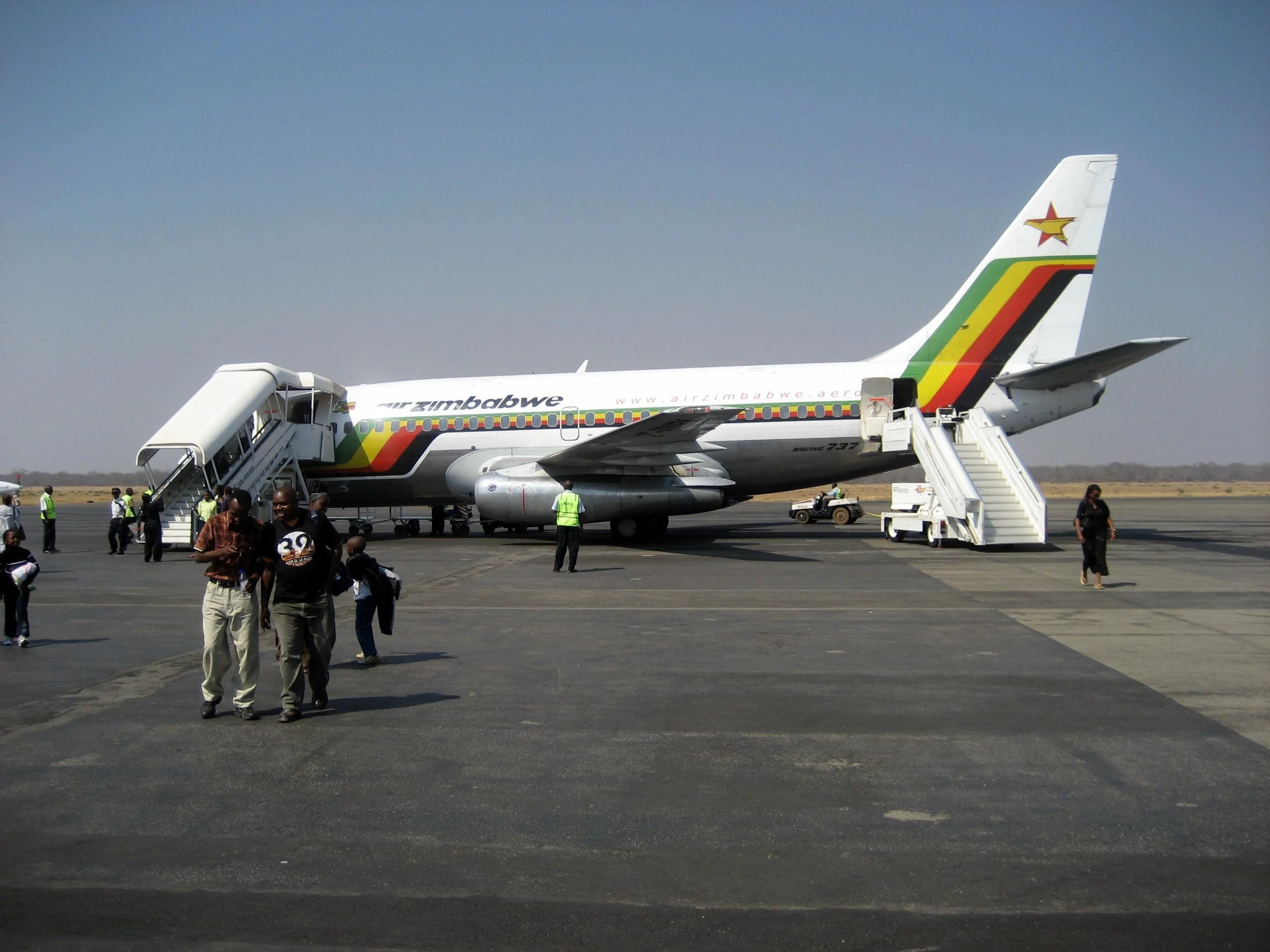



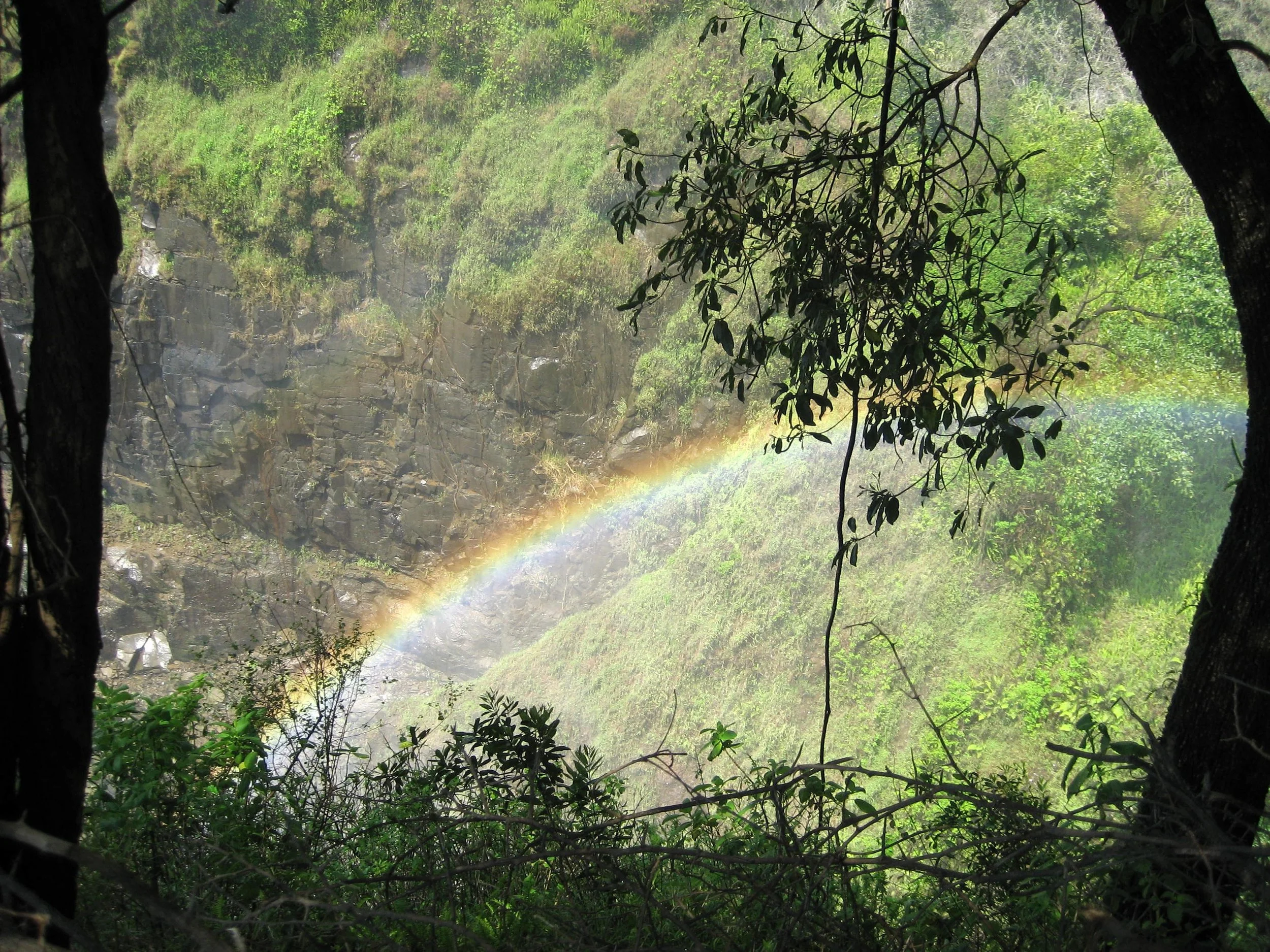
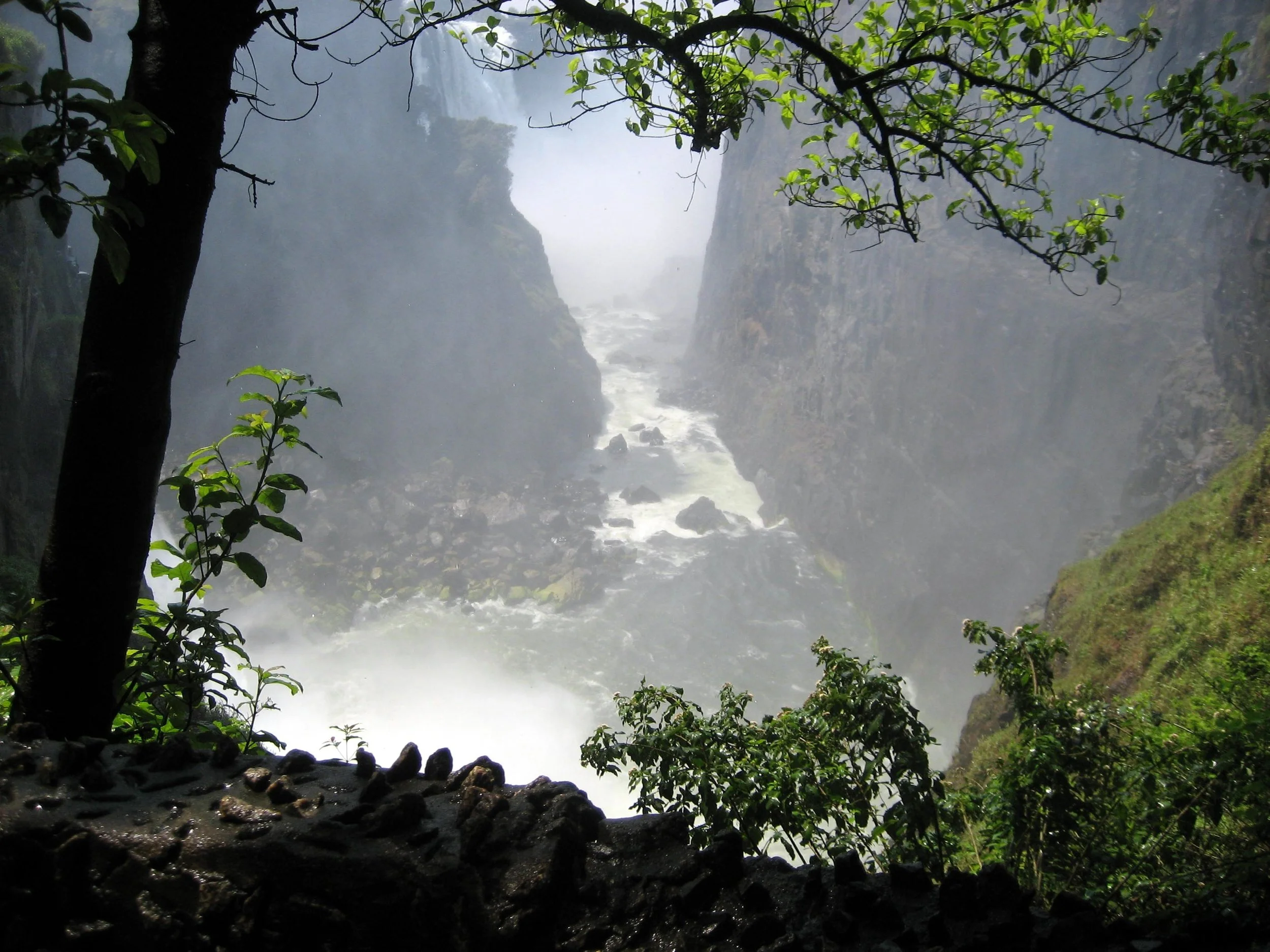


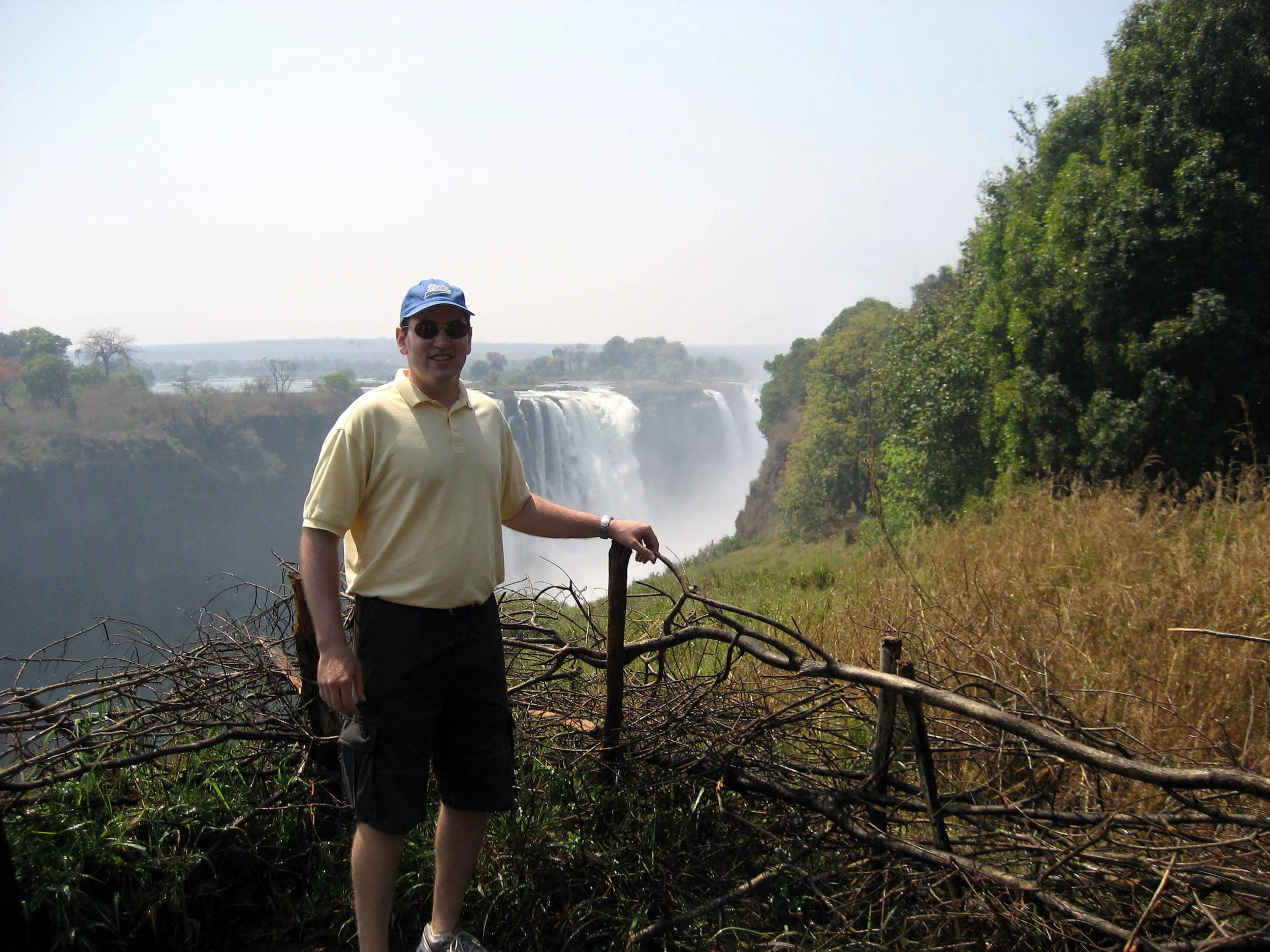



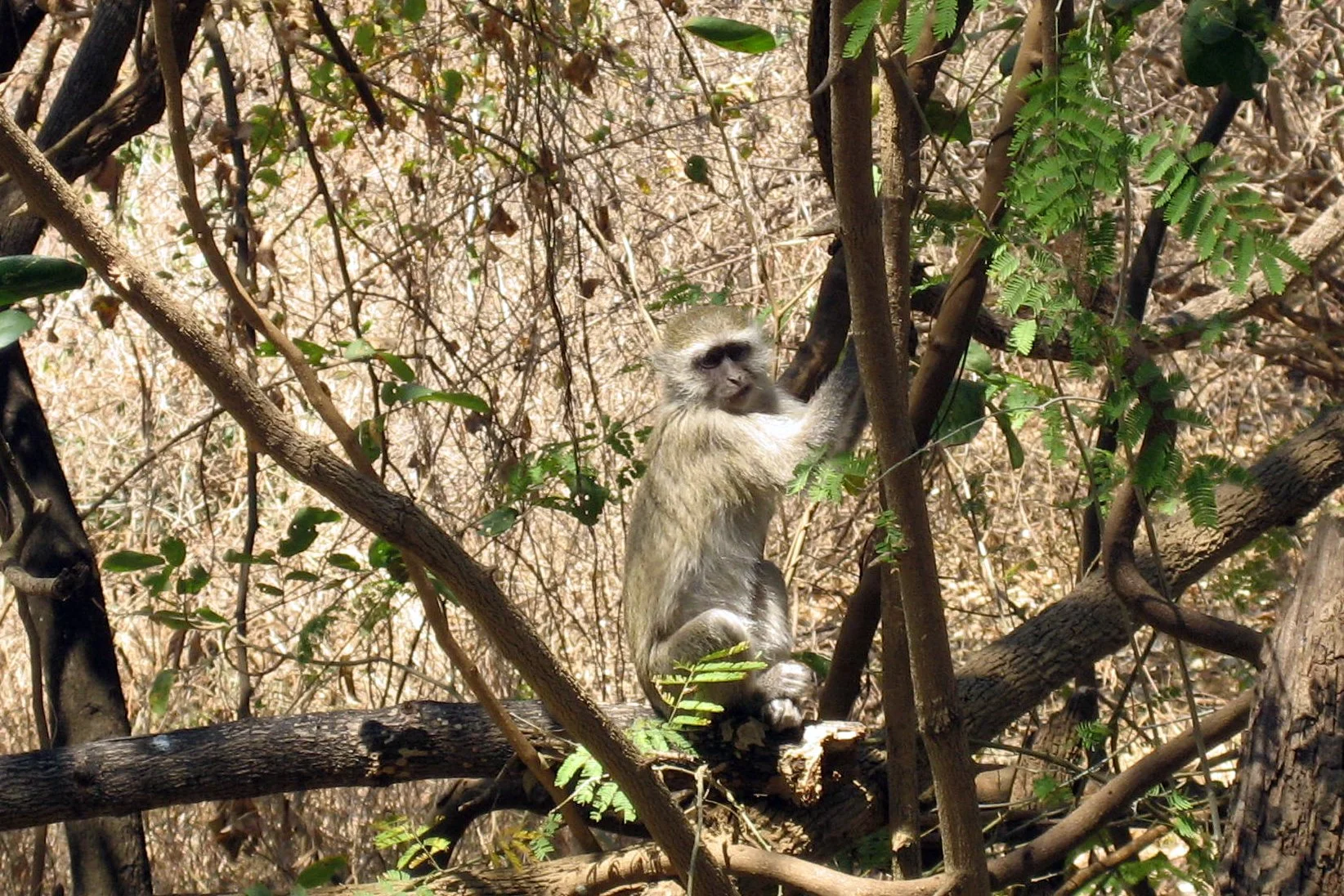
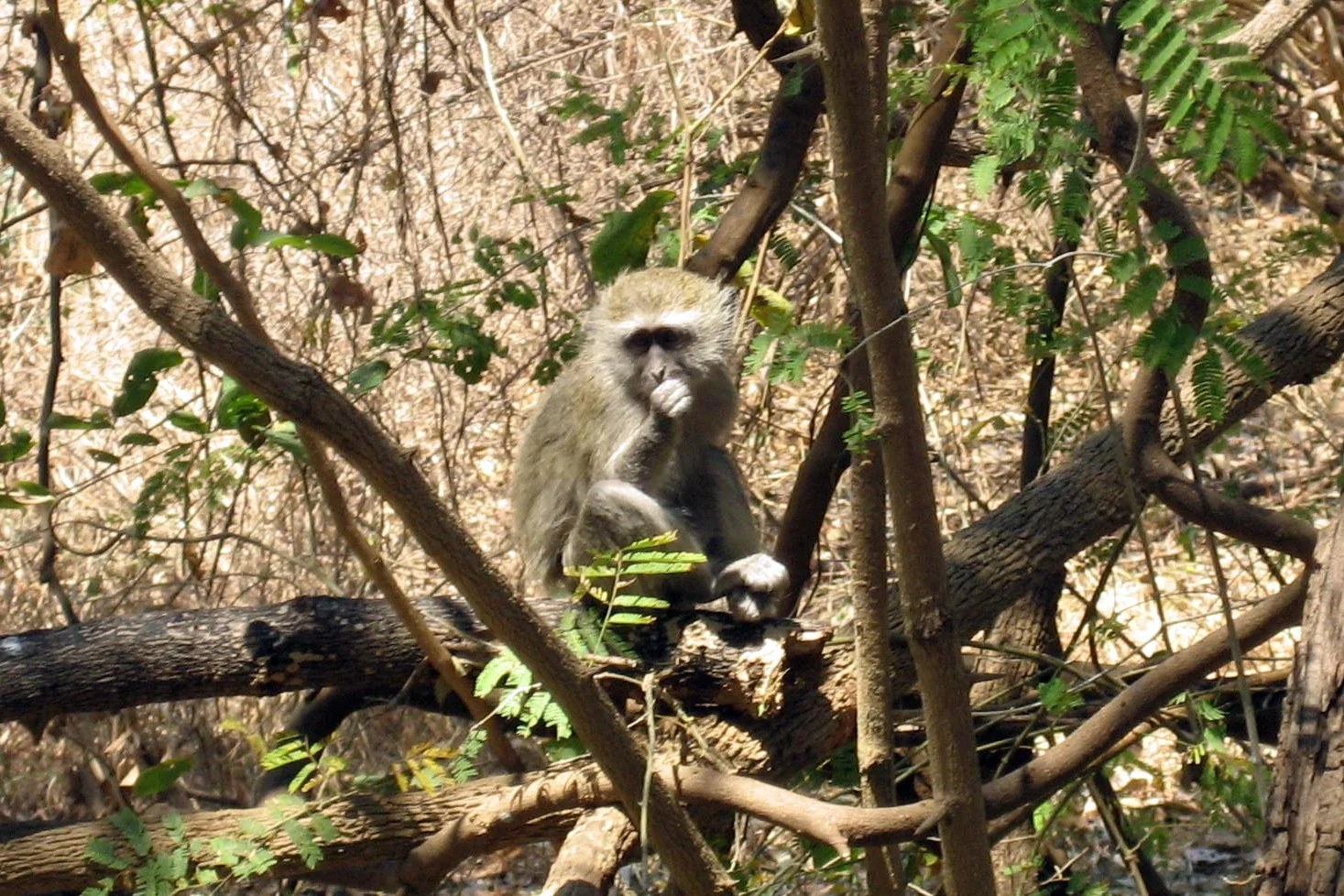
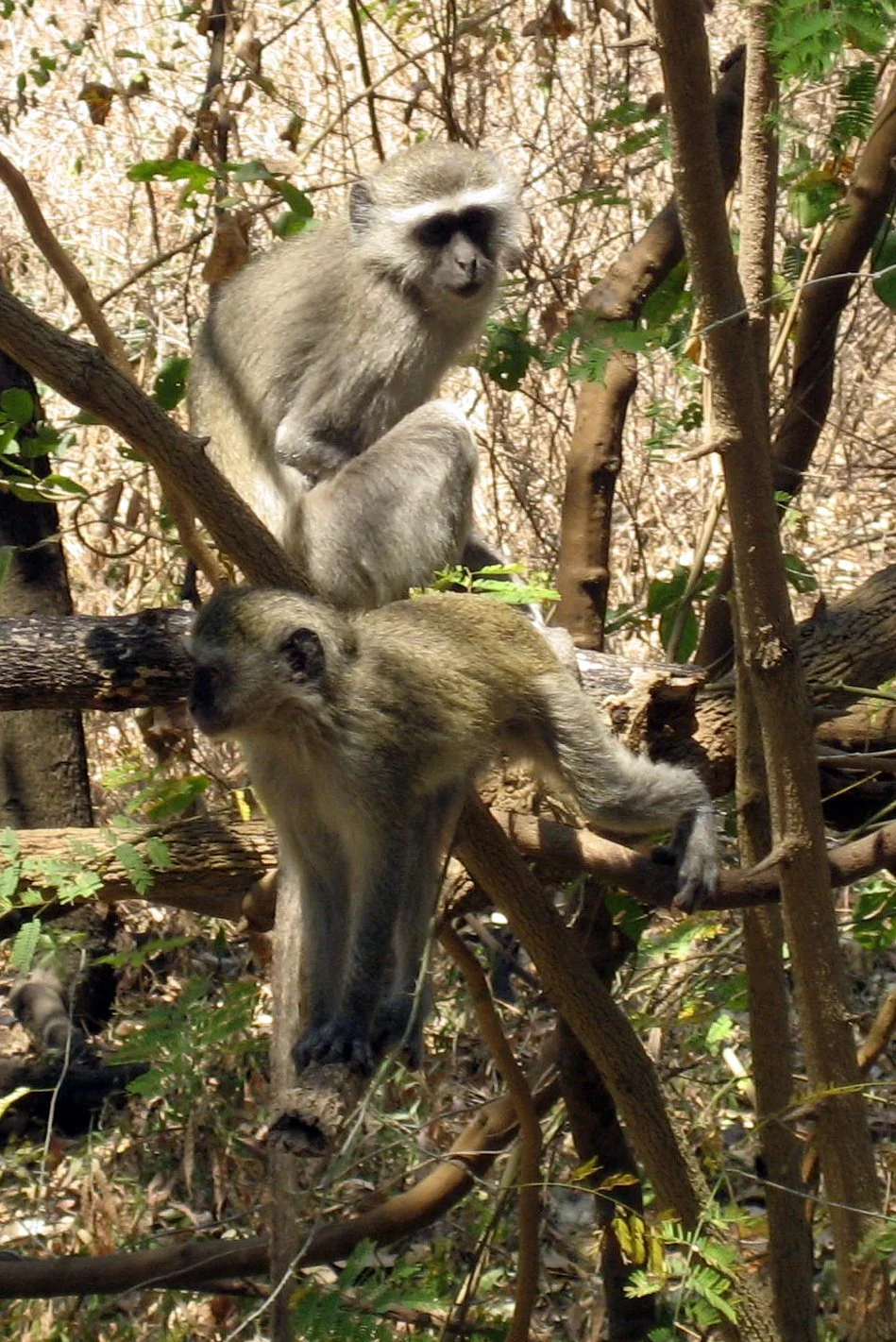


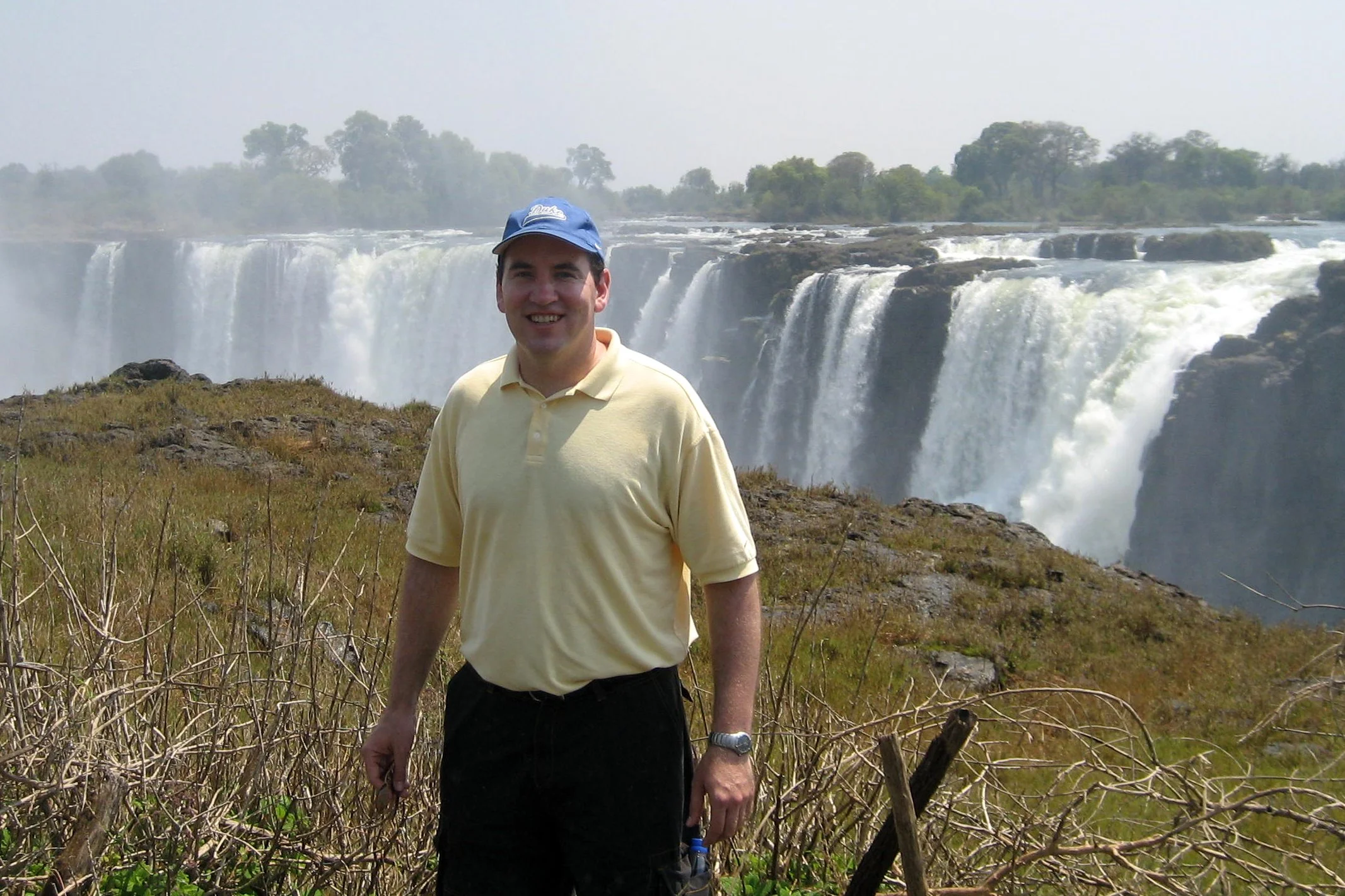

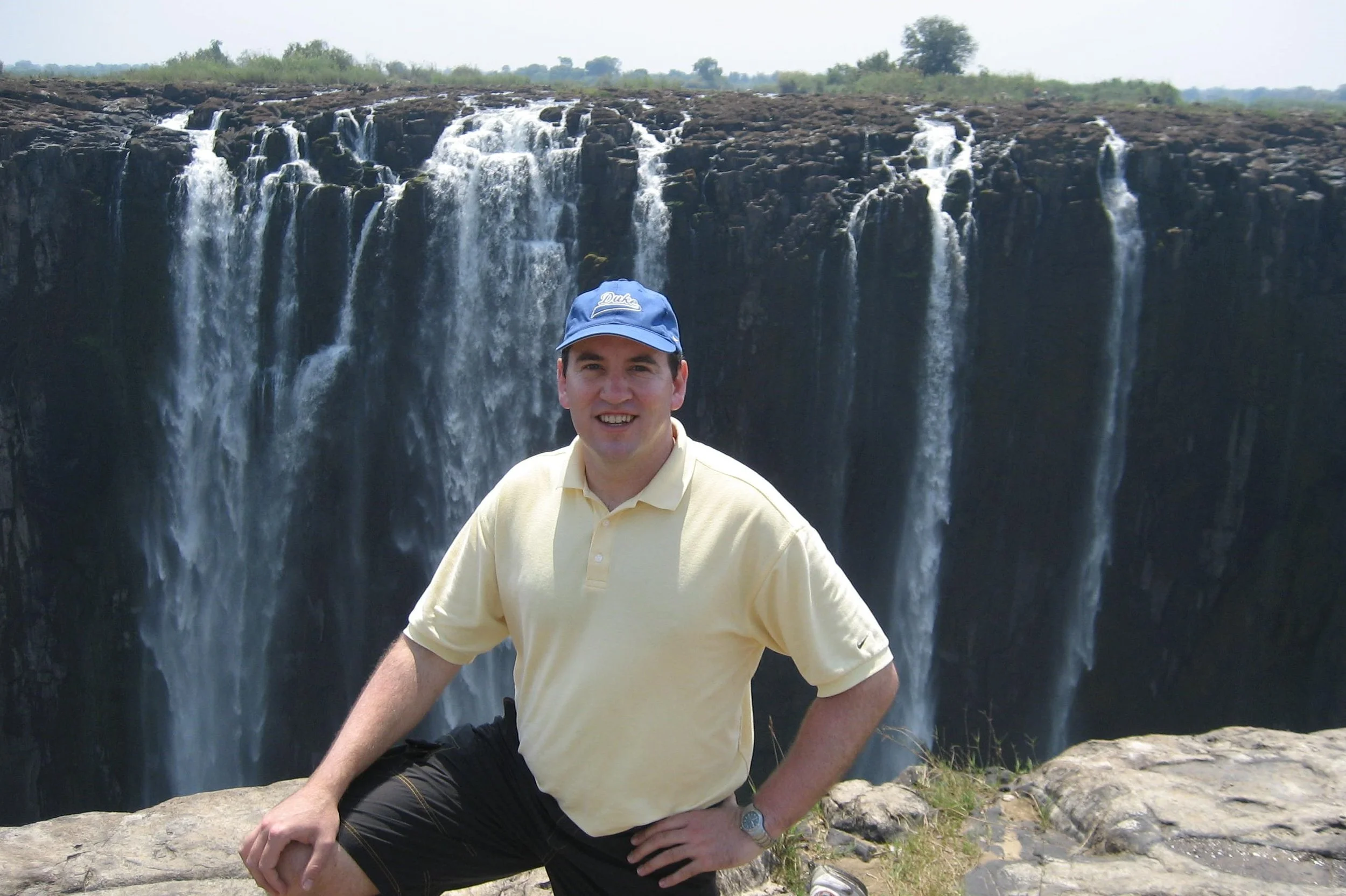
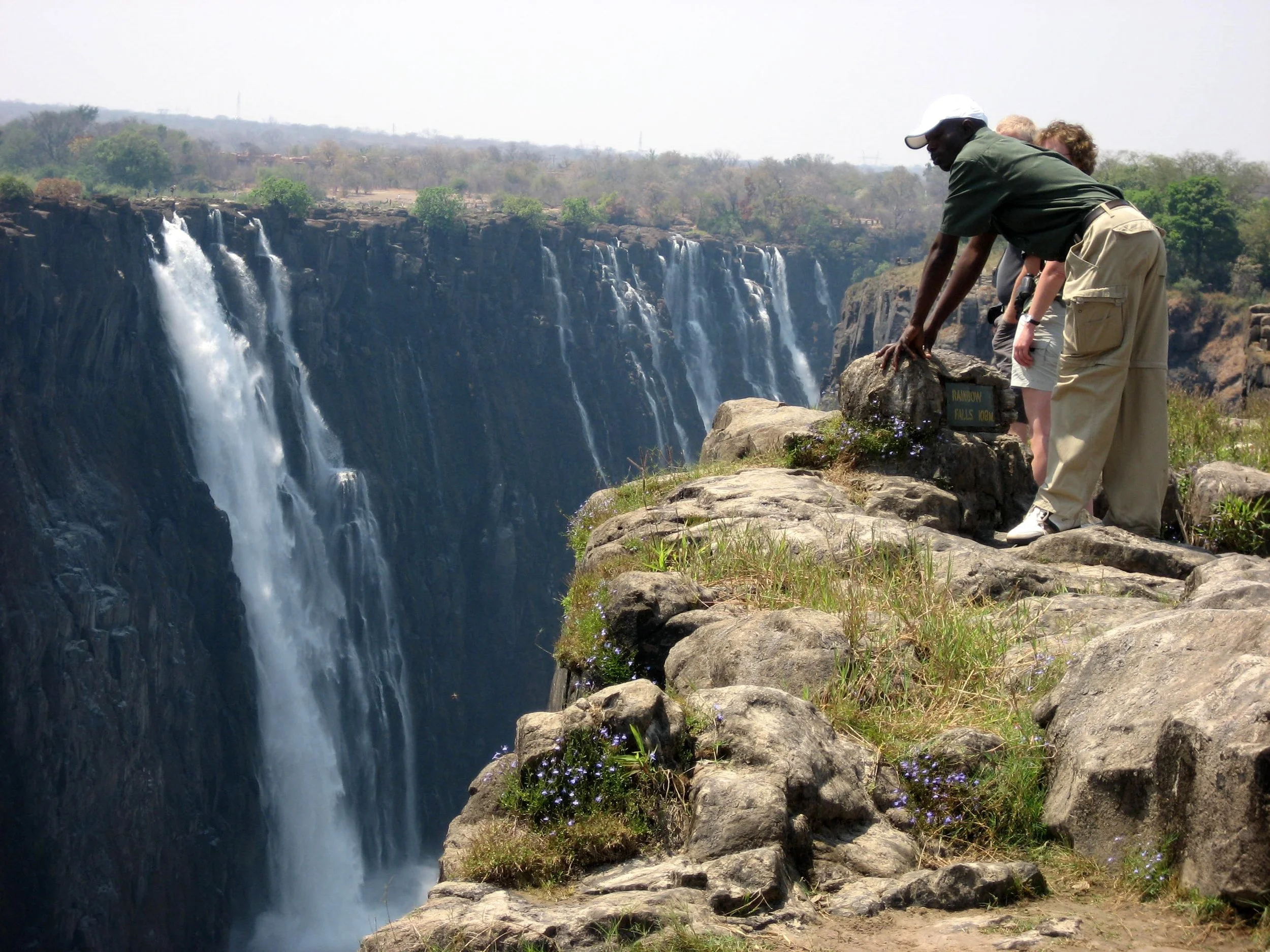


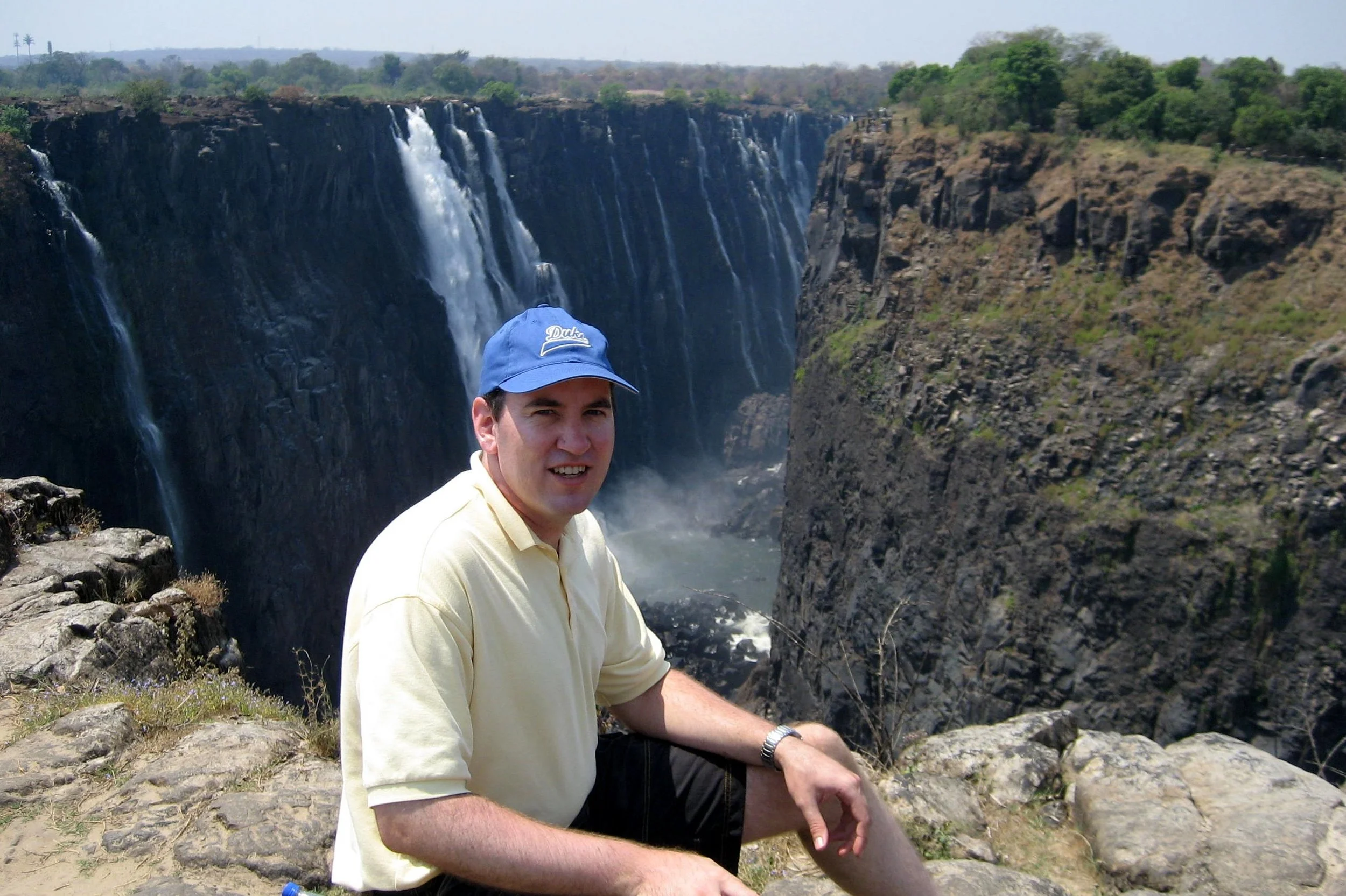

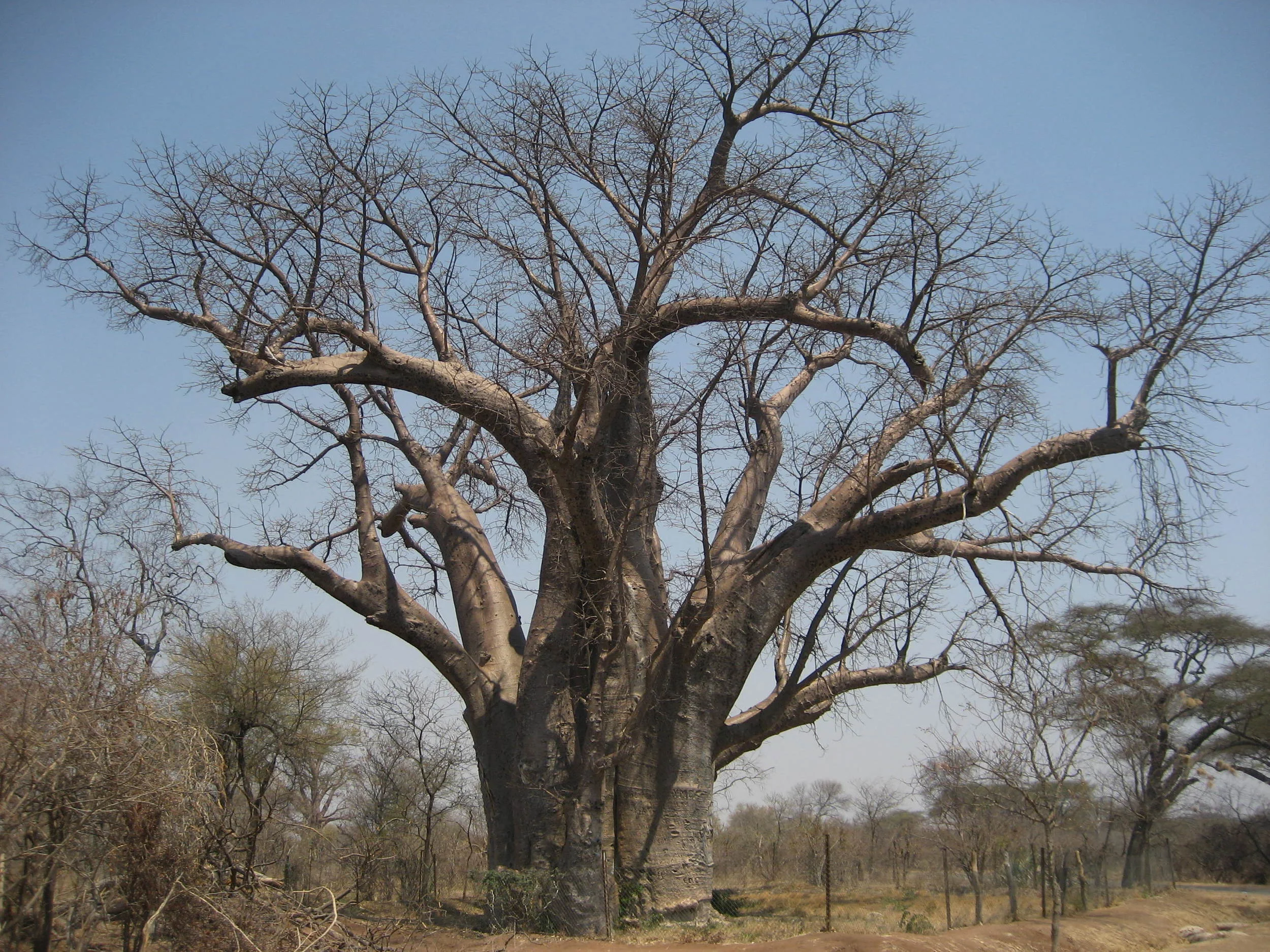

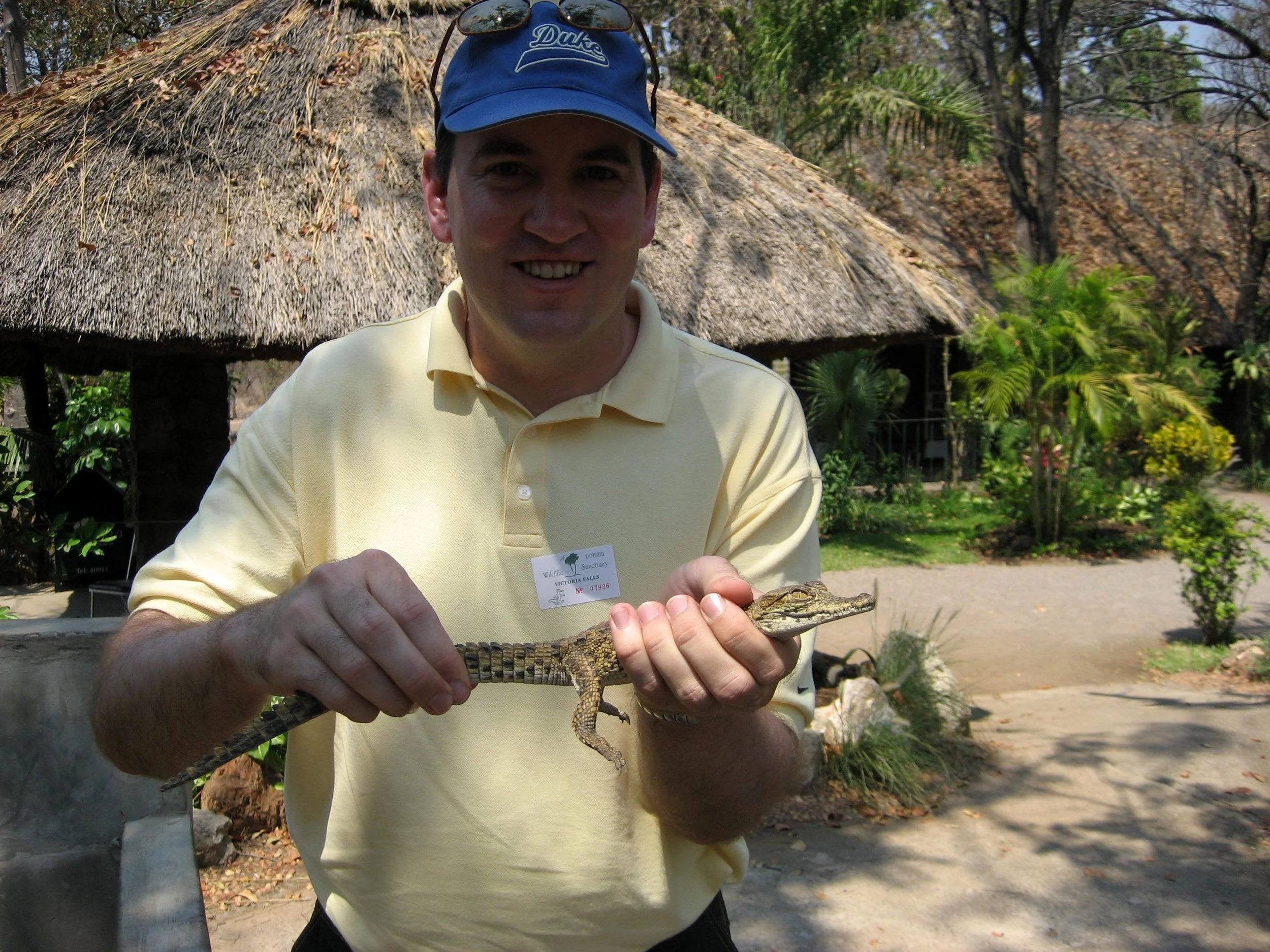
Your Custom Text Here
Teaching patent drafting in Africa - September 2007:
Awakening to my first morning in Africa, I throw open the curtains to a view of the towering headquarters of Robert Mugabe's ruling party, Zanu-PF, just a few hundred meters away. I look back across my hotel room at my garment bag; it's all I have. With my suitcase lost in transit either in London or in Johannesburg, I did not yet realize that I cannot easily replace even the most basic necessities, such as my razor and belt. The national economy has mostly collapsed, and the shelves of the stores that remain open are mostly empty. For many items, the "black market" is now the only viable source; and many staples (including petrol) simply are no longer publicly available--at any price. Left to my own resources, I slice up a black sock and fabricate a belt from it to hold up my trousers.
I open my door and look down at the city newspaper, The Herald. The lead story opens, "Government has--with immediate effect--revised the exchange rate from $250 to the United States dollar to $30 000 . . . " Yes, the official currency exchange rate has changed by a factor of over 100 in the less-than-24-hours that I have been in this country. It's a completely different world from the one I left when I departed big-firm practice a month earlier. Welcome to Zimbabwe.
In spite of the challenges in Zimbabwe today--a country that has reportedly seen about a quarter of its population evacuate, mostly to South Africa, in just this calendar year--my visit profoundly changed my perception of Africa, provided me with a perspective on the role and potential of patent law and patent drafters that I had never imagined, and gave me an opportunity to help set the foundations for the long-term economic advancement of Africa.
Of course, I also quickly recognized that my struggles were trivial compared with those faced by Zimbabweans, who persevered through it all with remarkable resourcefulness, dignity, and grace. The residents of Zimbabwe, despite their struggles, were uniformly warm and welcoming. Venturing across the city and meeting people on the streets, we never once were threatened or otherwise made to feel unsafe. The folks from the African Regional Intellectual Property Office (ARIPO) were magnificent hosts; they all were incredibly hard-working, and they consistently made extraordinary efforts to satisfy our needs and wants and to make our visit thoroughly enjoyable, despite the challenges, each and every day. Moreover, we were treated with the wonderfully enriching experience of spending many hours with ARIPO officials, including the very cordial Director General (to whom everyone refers simply as "D.G."), collegially exchanging perspectives on patent law and policy as well as other global issues.
The participants--from Zimbabwe, South Africa, Nigeria, Kenya, Tanzania, Mauritius, Ghana, Zambia, Uganda, Ethiopia, and Mozambique--exhibited extraordinary commitment, dedication, and enthusiasm for learning patent drafting. Their passion was palpable, as they clearly grasped the potential that patenting could hold for their countries in terms of capitalizing on their innovation and competing on the world stage; and they recognized that they could be among the pioneers in Africa who could make that happen. They acted as though they were carrying the hopes of their countries on their shoulders; and, in a very real sense, they may be.
Innovation abounds from the many brilliant scientists and engineers in Zimbabwe and in other African member states. After my first morning awakening in Zimbabwe, we visited the Scientific & Industrial Research & Development Centre (SIRDC) in Harare. I was amazed by the breadth and sophistication of their work in domains such as construction materials, agriculture, biotechnology, and alternative energy. Already, solar-powered traffic lights developed by SIRDC can be found across Harare. While at SIRDC, we were given a lab tour by a researcher developing new varieties of drought-tolerant maize through the use of molecular marker-assisted selection. Although the lab was filled with advanced equipment for genetic analysis, the most critical piece of equipment likely was the uninterruptable power supply, which kicked in during our visit, as the SIRDC lost power from the grid due to one of Harare's frequent blackouts. I was stunned to see how the scientists appeared to be so unphased by challenges, such as the absence of a dependable power supply, while pushing forward with their work. SIRDC has only recently begun filing patent applications; though, with a new director who holds dozens of patents, the mindset of SIRDC is rapidly evolving, raising the likelihood that their patent filings will increase dramatically in the years to come. Observing the very impressive innovation at SIRDC made me realize how truly "flat" the world is becoming.
By any measure, all agreed that the patent drafting training program--the first of its kind for ARIPO members and neighboring states--was a landmark success. I was paired with Naveen Modi, a genuine team player and a superb instructor from the DC office of Finnegan Henderson, in teaching the second week of the program. Following a first week consisting mostly of prepared lectures, we mostly led group claim-drafting exercises. In the early exercises, we observed common mistakes, such as failing to properly establish antecedent basis for claim elements and improperly formatting dependent patent claims. Remarkably, though, we needed to offer corrective guidance only once, as they so readily absorbed our feedback and would not make the same mistakes again. Within a few days, my feedback was mostly limited to non-corrective questions probing their train of thought in selecting and characterizing claim elements.
As the students were so keen to learn, we began on Tuesday to distribute invention disclosures at the end of the day, asking that they review the disclosures overnight and be ready to draft claims in groups the following morning. The following morning I was dumbstruck to see how many of the participants arrived (always early) with pages and pages of claims of different types/scope/styles, etc., that they drafted the night before on their own volition. They were just so eager to practice what they had learned, and their enthusiasm was both contagious and inspiring. The participants also were full of pertinent questions and insightful comments, which they shared freely in class, creating a very interactive and dynamic learning experience for all.
For our final exercise on Friday, we gave each participant a multi-use pen that included a stylus, a laser pointer, and a flashlight; and we asked each of them to draft a claim to it and read it to the group. A solid claim resulted in a "pass." Each and every one of them drafted a solid claim, and many were highly imaginative. As they left the program, they all seemed so eager to continue with their studies and to further progress as patent drafters.
Finally, the coordinators from the World Intellectual Property Office, Francoise Wege, and Yumiko Hamano both were wonderfully fun; and it was very rewarding to receive their approval of our work. The program provided me with one of the most rewarding experiences I have had as a patent attorney, as I believe that many of the participants will carry on, share what they have learned, and significantly advance efforts to address the critical need for skilled patent drafters so that research institutions and other entities in Africa can begin to file patent applications at a rate that is much higher and more commensurate with the high level of innovation that I observed.
Teaching patent drafting in Africa - September 2007:
Awakening to my first morning in Africa, I throw open the curtains to a view of the towering headquarters of Robert Mugabe's ruling party, Zanu-PF, just a few hundred meters away. I look back across my hotel room at my garment bag; it's all I have. With my suitcase lost in transit either in London or in Johannesburg, I did not yet realize that I cannot easily replace even the most basic necessities, such as my razor and belt. The national economy has mostly collapsed, and the shelves of the stores that remain open are mostly empty. For many items, the "black market" is now the only viable source; and many staples (including petrol) simply are no longer publicly available--at any price. Left to my own resources, I slice up a black sock and fabricate a belt from it to hold up my trousers.
I open my door and look down at the city newspaper, The Herald. The lead story opens, "Government has--with immediate effect--revised the exchange rate from $250 to the United States dollar to $30 000 . . . " Yes, the official currency exchange rate has changed by a factor of over 100 in the less-than-24-hours that I have been in this country. It's a completely different world from the one I left when I departed big-firm practice a month earlier. Welcome to Zimbabwe.
In spite of the challenges in Zimbabwe today--a country that has reportedly seen about a quarter of its population evacuate, mostly to South Africa, in just this calendar year--my visit profoundly changed my perception of Africa, provided me with a perspective on the role and potential of patent law and patent drafters that I had never imagined, and gave me an opportunity to help set the foundations for the long-term economic advancement of Africa.
Of course, I also quickly recognized that my struggles were trivial compared with those faced by Zimbabweans, who persevered through it all with remarkable resourcefulness, dignity, and grace. The residents of Zimbabwe, despite their struggles, were uniformly warm and welcoming. Venturing across the city and meeting people on the streets, we never once were threatened or otherwise made to feel unsafe. The folks from the African Regional Intellectual Property Office (ARIPO) were magnificent hosts; they all were incredibly hard-working, and they consistently made extraordinary efforts to satisfy our needs and wants and to make our visit thoroughly enjoyable, despite the challenges, each and every day. Moreover, we were treated with the wonderfully enriching experience of spending many hours with ARIPO officials, including the very cordial Director General (to whom everyone refers simply as "D.G."), collegially exchanging perspectives on patent law and policy as well as other global issues.
The participants--from Zimbabwe, South Africa, Nigeria, Kenya, Tanzania, Mauritius, Ghana, Zambia, Uganda, Ethiopia, and Mozambique--exhibited extraordinary commitment, dedication, and enthusiasm for learning patent drafting. Their passion was palpable, as they clearly grasped the potential that patenting could hold for their countries in terms of capitalizing on their innovation and competing on the world stage; and they recognized that they could be among the pioneers in Africa who could make that happen. They acted as though they were carrying the hopes of their countries on their shoulders; and, in a very real sense, they may be.
Innovation abounds from the many brilliant scientists and engineers in Zimbabwe and in other African member states. After my first morning awakening in Zimbabwe, we visited the Scientific & Industrial Research & Development Centre (SIRDC) in Harare. I was amazed by the breadth and sophistication of their work in domains such as construction materials, agriculture, biotechnology, and alternative energy. Already, solar-powered traffic lights developed by SIRDC can be found across Harare. While at SIRDC, we were given a lab tour by a researcher developing new varieties of drought-tolerant maize through the use of molecular marker-assisted selection. Although the lab was filled with advanced equipment for genetic analysis, the most critical piece of equipment likely was the uninterruptable power supply, which kicked in during our visit, as the SIRDC lost power from the grid due to one of Harare's frequent blackouts. I was stunned to see how the scientists appeared to be so unphased by challenges, such as the absence of a dependable power supply, while pushing forward with their work. SIRDC has only recently begun filing patent applications; though, with a new director who holds dozens of patents, the mindset of SIRDC is rapidly evolving, raising the likelihood that their patent filings will increase dramatically in the years to come. Observing the very impressive innovation at SIRDC made me realize how truly "flat" the world is becoming.
By any measure, all agreed that the patent drafting training program--the first of its kind for ARIPO members and neighboring states--was a landmark success. I was paired with Naveen Modi, a genuine team player and a superb instructor from the DC office of Finnegan Henderson, in teaching the second week of the program. Following a first week consisting mostly of prepared lectures, we mostly led group claim-drafting exercises. In the early exercises, we observed common mistakes, such as failing to properly establish antecedent basis for claim elements and improperly formatting dependent patent claims. Remarkably, though, we needed to offer corrective guidance only once, as they so readily absorbed our feedback and would not make the same mistakes again. Within a few days, my feedback was mostly limited to non-corrective questions probing their train of thought in selecting and characterizing claim elements.
As the students were so keen to learn, we began on Tuesday to distribute invention disclosures at the end of the day, asking that they review the disclosures overnight and be ready to draft claims in groups the following morning. The following morning I was dumbstruck to see how many of the participants arrived (always early) with pages and pages of claims of different types/scope/styles, etc., that they drafted the night before on their own volition. They were just so eager to practice what they had learned, and their enthusiasm was both contagious and inspiring. The participants also were full of pertinent questions and insightful comments, which they shared freely in class, creating a very interactive and dynamic learning experience for all.
For our final exercise on Friday, we gave each participant a multi-use pen that included a stylus, a laser pointer, and a flashlight; and we asked each of them to draft a claim to it and read it to the group. A solid claim resulted in a "pass." Each and every one of them drafted a solid claim, and many were highly imaginative. As they left the program, they all seemed so eager to continue with their studies and to further progress as patent drafters.
Finally, the coordinators from the World Intellectual Property Office, Francoise Wege, and Yumiko Hamano both were wonderfully fun; and it was very rewarding to receive their approval of our work. The program provided me with one of the most rewarding experiences I have had as a patent attorney, as I believe that many of the participants will carry on, share what they have learned, and significantly advance efforts to address the critical need for skilled patent drafters so that research institutions and other entities in Africa can begin to file patent applications at a rate that is much higher and more commensurate with the high level of innovation that I observed.
Headquarters of the African Regional Intellectual Property Organization
Outside the ARIPO building. The dark statue is the African unity symbol.
Me (Bob) outside of the African Regional Intellectual Property Office (ARIPO) after returning from SIRDC. Unfortunately, my ties were in my missing suitcase.
A beautifully colored tree from inside the ARIPO building
The training sessions were conducted in a very nice (and advanced) conference room at ARIPO.
Tom, the author of most of the original program content, teaching patent claim design.
Naveen addressing the participants
Bob addressing the participants.
Yumiko at the lecturn.
ARIPO Director General Gift Sibanda
Participants debate the inclusion of elements and characterizations when drafting claims to a bicycle design in one of the early group exercises.
The group of participants, instructors and WIPO and ARIPO officials in front of the ARIPO building.
The Zimbabwe Consumer Price Index, as reported in Friday's Herald. This extraordinary inflation is charted over just one year.
More economic news: my first morning in Harare brings the news that the official exchange rate is immediately changed from US$250 to US$30,000 per Zim dollar. Fortunately, I did not exchange any money at the airport upon my arrival yesterday. Had I exchanged, e.g., US$100, the exchanged currency would now be worth just US$0.83.
This stack of $100k Zim notes will buy a few dinners. It's crazy, you can't easily fit the money you need for a night out in your pocket. I'd have to buy some sort of man-purse. And when they bring the bill at a nice restaurant, they bring a basket rather than a sleave.
A visit to the supermarket in Harare on Friday evening. Some of the aisles were reasonably well stocked . . .
The shelves in other aisles were quite bare. In light of missing suitcase, I was looking for basic staples such as a razor and shaving cream--no luck whatsoever.
As far as I could ascertain, it is no longer possible to obtain fuel in Zimbabwe, except from the private offshore importer, Caltex. For non-members, the only options are walk, bike or hitch a ride.
The Caltex fuel facilities are closely guarded.
The view of Harare from my room at the Rainbow Towers Hotel. The tall building to right (about 300 m away) is the headquarters of the ruling party, Zanu PF.
Morning sunrise over Harare.
Naveen and Bob at a hilltop park offering a view of Harare
It seemed like we were always counting out ZimS100,000 notes--usually out of the trunk of the car.
Dinner on Thursday night at one of our favorite restaurants, Victoria 22, with Yumiko, Tom, Francoise, and Luiz.
The ARIPO Director General treated us to a remarkable dinner at Imba Motombo--what a treat this was.
Inside Imba Motombo
Tom, Yumiko, Gift Sibanda (ARIPO DG), Christopher, Francoise, Luiz, Naveen and Bob at Imba Motombo
We begin Friday morning with a visit to the Scientific & Industrial Research & Development Center in Harare. From I what I saw today, the government can be credited with strong support for science and progressive technological innovation, including alternative energy (here: organic fertilizer, solid waste management, biogas production, solar heating, fuel cell technology, wind energy, acetylene and natural gas powered vehicles, solar PV panels, drought-resistant crops, etc.)
After presentations from the various R&D groups, we visited another building on the campus to see prototypes and tour a laboratory.
Outside is a prototype of a solar powered streetlight. In Harare, solar-powered traffic lights developed by SIRDC are already in use.
An SIRDC researcher explains his work in developing new strains of drought-resistant maize. The lab equipment was very sophisticated. But why so dark? While we were visiting, the lab suffered from one of the frequent power outages in Harare. Accordingly, the most critical piece of equipment in this lab may have been the backup uninterruptible power supply, which was used to maintain controls on the biological samples. It was stunning to see that they appeared to be essentially unphased by challenges such as an absence of a dependable power supply.
On Saturday morning, we met at ARIPO for a trip from Harare to the stone ruins at Great Zimbabwe, near Masvingo.
Time for a few photos at the Golden Spiderweb Country Village rest stop.
After about four hours on the bus, we arrive at Great Zimbabwe.
A vervet monkey at the entrance to Great Zimbabwe
Great Zimbabwe includes a number of dry-stone (i.e., stacked mortar-less stones) walled enclosures.
Here, I enter the Great Enclosure.
Inside the Great Enclosure.
This giant cone-shaped structure (again, without mortar) is one of the most impressive engineering feats at Great Zimbabwe.
The Great Enclosure from the other side.
These are aloe plants amid the ruins.
A closer view of the stone walls.
Here, we begin a climb up to the Hilltop Enclosure.
Bennett (Nigeria) with Naveen (DC) and Yumiko (Geneva).
Group photo: me, Jonas, Naveen, Anu, Yumiko, Enoch, Bennett (front).
On Sunday, we visit the Lion Park.
You drive around inside an expansive lion enclosure with no separation other than your car. You really hope your car does not break down in a remote area while inside.
Now they're heading this way (screams from inside the car).
Here one of the lion cubs goes after my leg.
Video of lion cubs at Harare Lion Park
video of lion cubs at Harare Lion Park
video of lions feeding at Harare Lion Park
baboons
hyena
zebra
ostrich
Chiremba Balancing Rocks national monument
Here's Patrick and me at the “egg rock” in the Chiremba Balancing Rocks Park. These are remarkable natural structures formed by selective erosion.
Another view of the egg rock. Balancing rocks can be found all around Harare.
As it starts to get dark, our car breaks down here. At least it didn't break down when we were in with the lions.
The women, in particular, are good at carrying bags, boxes, etc., on their heads without using their hands.
All Zimbabweans seem to dress very well in public. You'd never know of economic difficulties from their appearance.
Naveen negotiating a good deal on a stone sculpture from a market near Avondale.
Naveen was quite skilled at negotiating with the vendors at the open air markets, this one in Borrowdale.
Borrowdale is a beautiful shopping area. Unfortunately, stores were recently subjected to a government-mandated 50% price reduction. The stores that refused (many) had their goods confiscated and auctioned off--leaving more empty stores. I have some success in finally (on my fourth day of searching) finding a razor and shaving cream. Fortunately, I also finally received my suitcase that evening. Not being able to find basic commodities (at any price) in an urban setting is an entirely new experience for me.
This flea market beyond the shops at Borrowdale is where I finally found a razor.
A bicycle (typically, an old British 3-speed) makes for a good transport vehicle when you can get your hands on commodities.
Dancing at The Kraal (Nyama Choma ethnic Gocha restaurant) after the workshop ended
I catch an Air Zimbabwe flight to Victoria Falls on Saturday, my final full day in Zimbabwe.
We saw baboons en route to the Falls.
A statue to explorer, David Livingstone, the first European to discover the Falls.
The left side of the base identifies Livingstone as a “liberator.”
video of Victoria Falls
And, of course, all that water mist produces rainbows.
video of Victoria Falls
Obviously, this is the dry season.
video of Victoria Falls
Along the edge of the Falls (just left of center here), you can see quite a few people fishing, bathing and swimming--it appers dangerous as they are so close to the edge.
Victoria Falls
The Victoria Falls Bridge, which spans the Zambezi River and provides passage between Zambia and Zimbabwe.
The Big Tree: a nearly 1500-year-old baobab tree.
With a baby at a crocodile farm